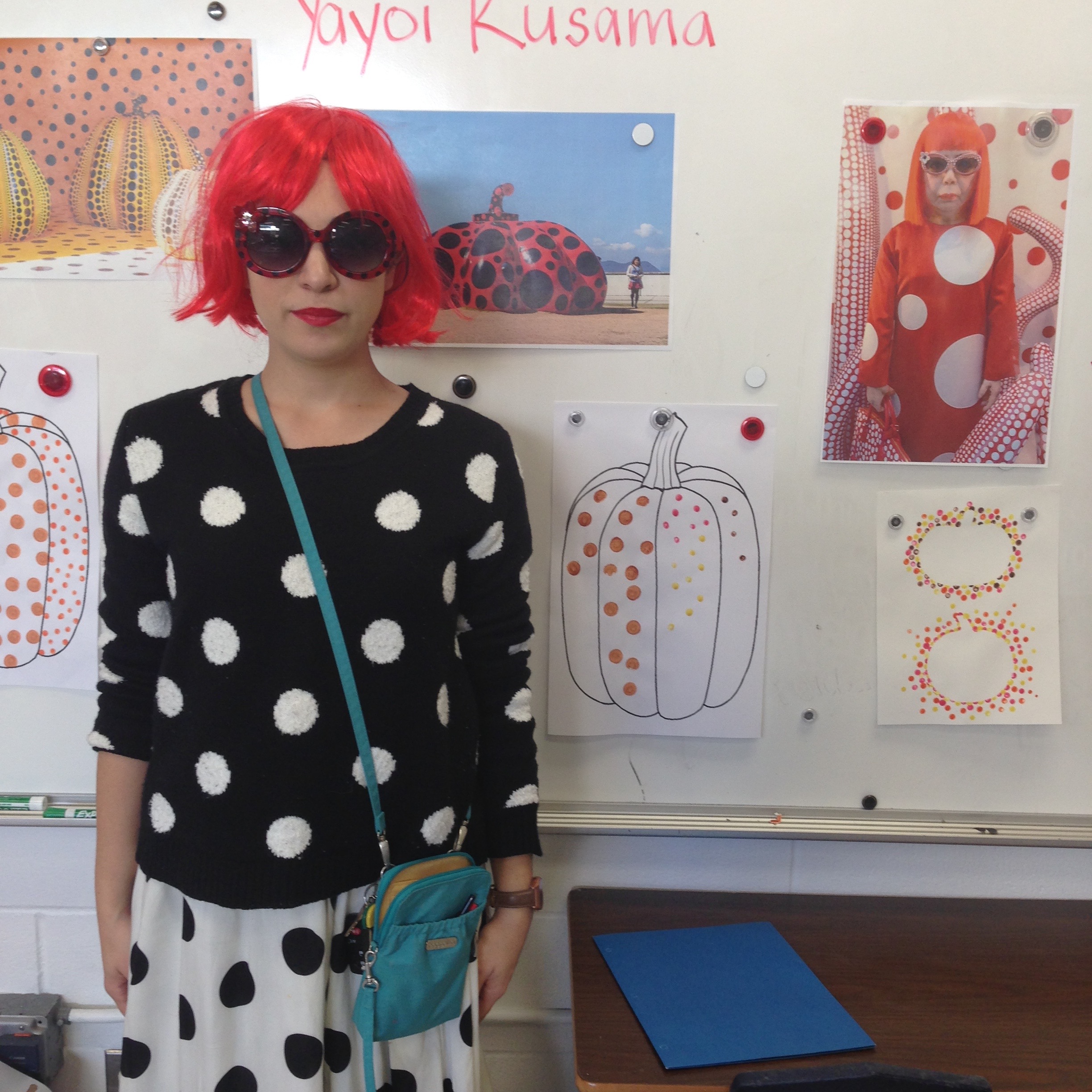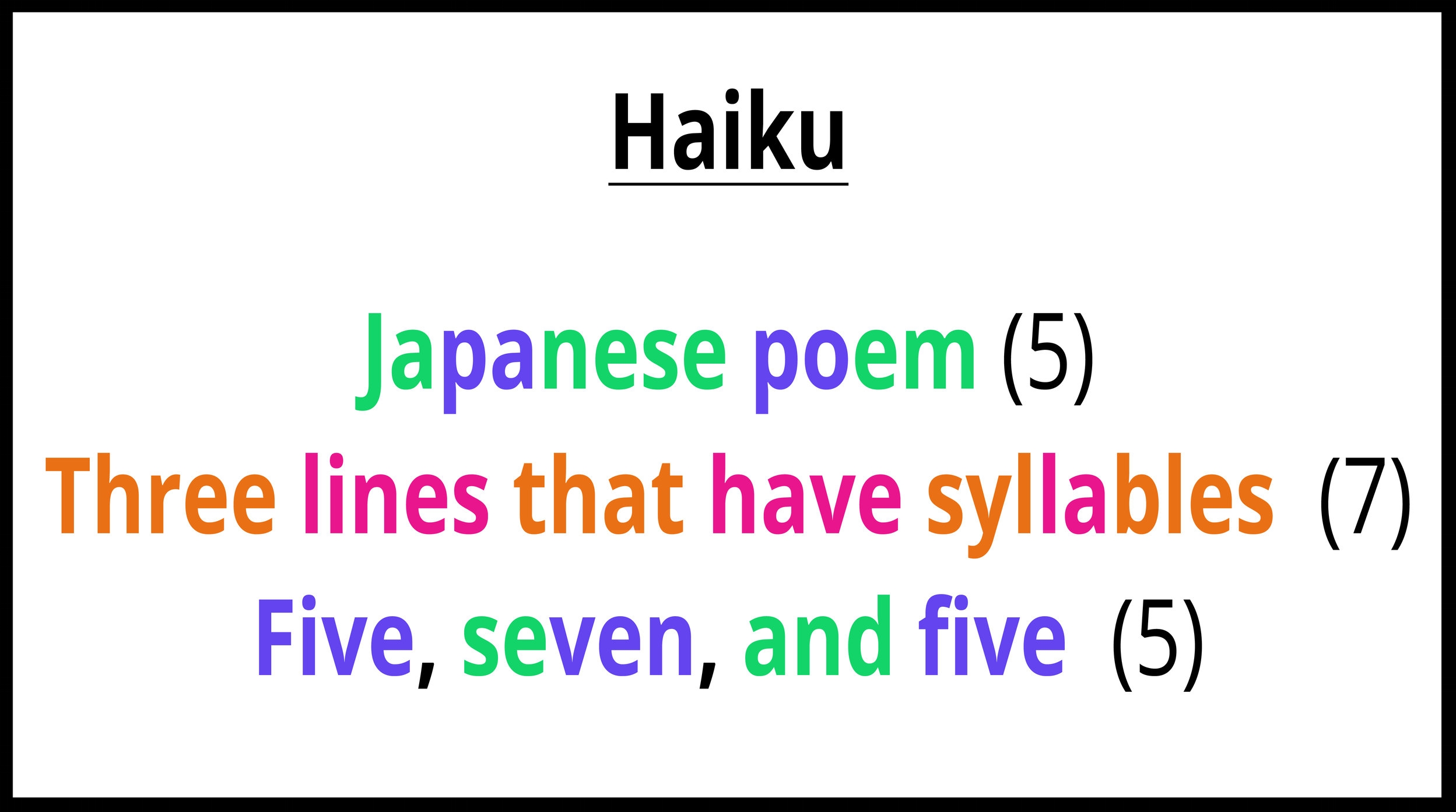And Yayoi Kusama
I have found that unplanned bits of time in the school year can bring about some awesome lessons. In Fall 2015 I had a gap between my last quarterly unit and the new grading period. It was my first year of teaching, the last week of October, and I was figuring out pacing and grading all in all. Halloween was around the corner, and our school was celebrating Red Ribbon Week with days like: “Wear Red,” “Crazy Hat & Wig Day,” and “Dress Up Like a Hero.” This inspired me to dress up like the powerhouse artist, Yayoi Kusama, in a polka-dotted, red-wigged getup that fit the bill for our dress-up days.
Two years before, I saw Kusama’s work for the first time at David Zwirner Gallery; I walked into her Mirrored Room and it was sensational! I thought that Kusama’s art would be perfect to present my students with a fun, polka-dotted, extraordinary class. While looking online and putting together images of her artwork to show, I discovered her polka-dot pumpkins! Could this be any more perfect for the season? Lots of fun pieces fell into place for what turned out to be an extremely memorable lesson.
At the time, Yayoi Kusama was a little more obscure than today (most of my school's staff had not heard of her), and I remember texting my principal to let her know about my dress-up/lesson plans. I introduced myself to my students as “Ms. Kusama,” their special guest substitute teacher, and I stayed in character for three days so that each class during the ABC rotation could meet their sub. I remember that we had a FIRE DRILL and I did not break character. I kept the kiddos safe and we followed procedures, sunglasses on and all. Yet I worried in my head as our AP checked on us, “Is this okay? Staying 'Ms. Kusama' during a fire drill, is okay right? I hope this is okay!" It’s been three years, and my students still bring up our famous substitute teacher, “Do you remember when you dressed up as Ms. Kusama?!?”
We used Do-A-Dot markers, q-tips, and unsharpened pencils (the eraser ends) to stamp polka dots (using tempera paint) onto paper and make quick, 2D pumpkin art. The task was similar but varied for each grade level. Some classes cut out their pumpkins and attached them to wrapping paper to make “polka dot pumpkin banners.” We put them up in our cafeteria to add decoration for our Fall Festival (see photos above). The “making” part of this lesson was quick, about 20 minutes, and we spent the rest of class looking and responding to Kusama’s art (through varied activities, depending on the grade level).
Haiku Paper Pumpkins
The following year I tried a different Pumpkin/Kusama unit, only with fourth grade this time. To start, I did a mini-lesson on the Japanese tradition of haiku, and I prompted my students to write a haiku to describe what they think about pumpkins. Students did a couple of brainstorming activities to gather their ideas. “Do you have any special memories about a pumpkin?” By responding to questions within class dialogue, students shared memories about carving pumpkins, eating pumpkin pie with family, cooking with pumpkins, and going to pumpkin patches (our first grade has been taking a field trip to Elgin Tree Farm for years). They did a quick drawing to show their special memory of a pumpkin. After, they used a worksheet to choose or write adjectives about a pumpkin. They had real pumpkins at their table to touch and observe, and I even brought in potpourri to bring pumpkin scent to the room (yum!) . They wrote their haiku after the brainstorming activities.
For the next lesson, I prompted students to explore Yayoi Kusama in connection to her Japanese heritage. Before showing them Kusama's work, we did an activity largely based on the Creative Learning Initiative’s “Look and Link" strategy. To start, my students reviewed what they had learned about haiku in class dialogue. After they reviewed from memory, I put an anchor (pictured above) on display. Then I asked students to go to their team tables, where they would find four, turned-over papers. I asked them to wait for my cue to flip over the papers, and then discuss (in their small groups) how the pieces relate to one another. What do they all have in common? They had five minutes to work together.
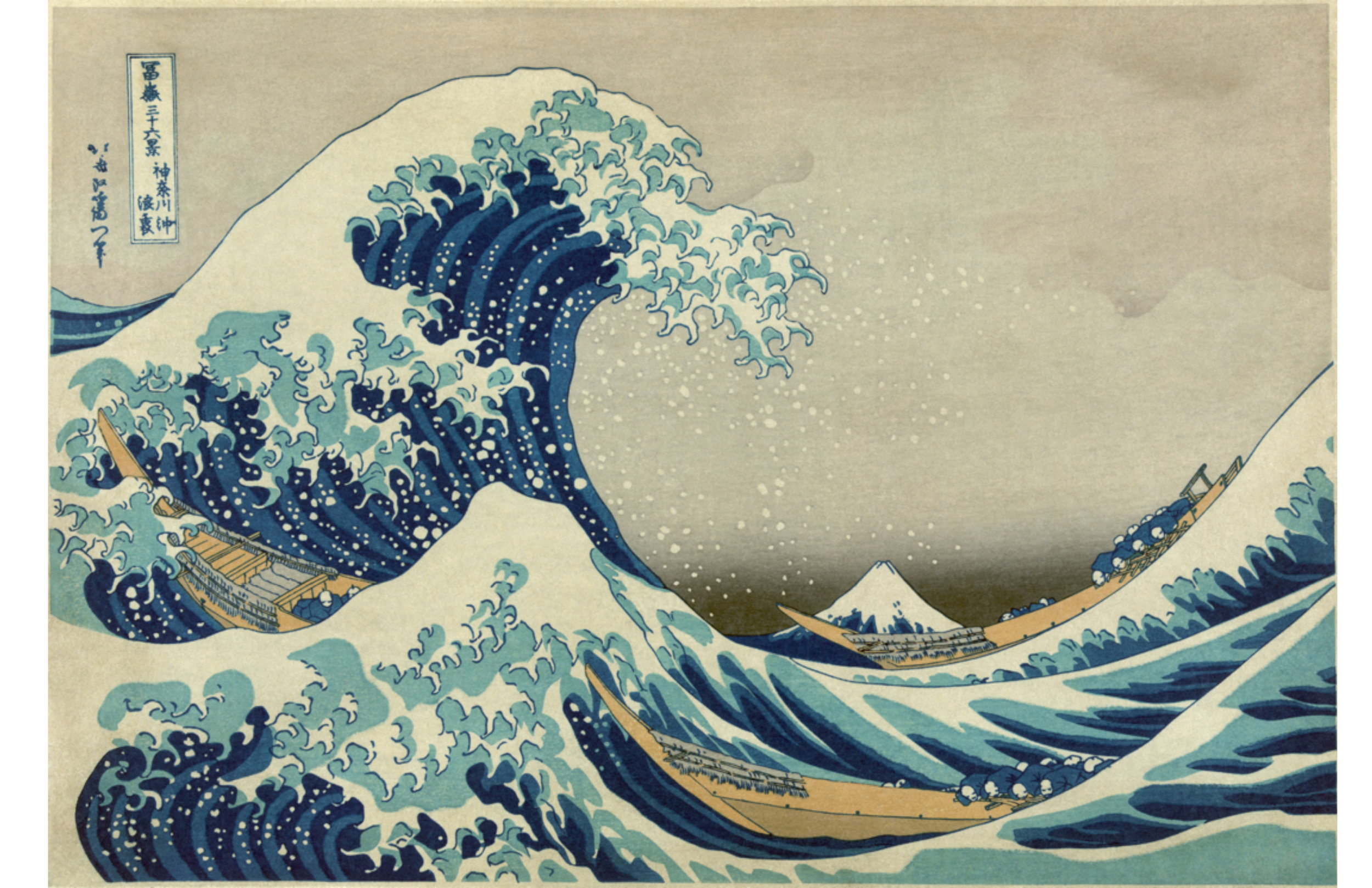
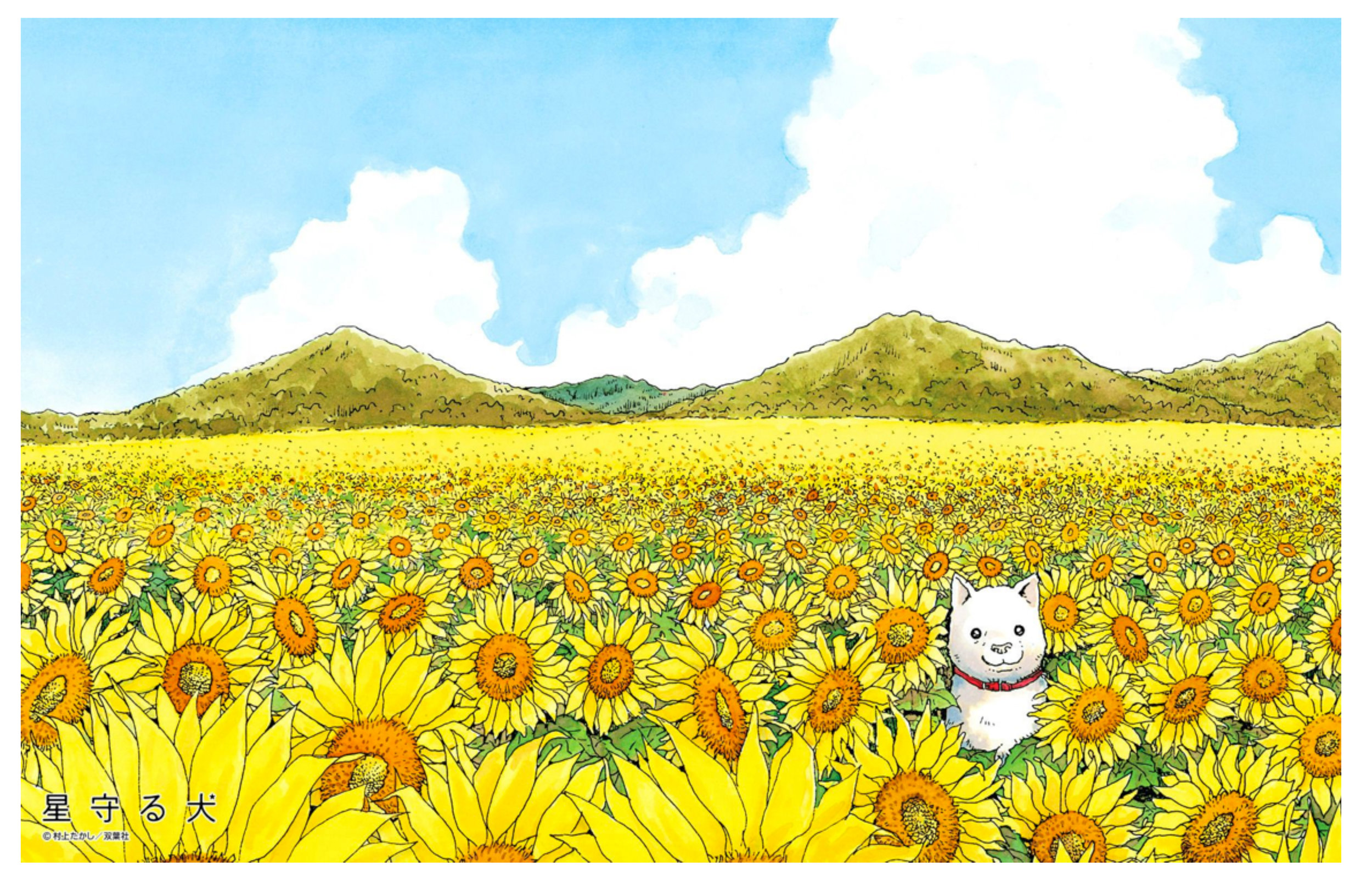
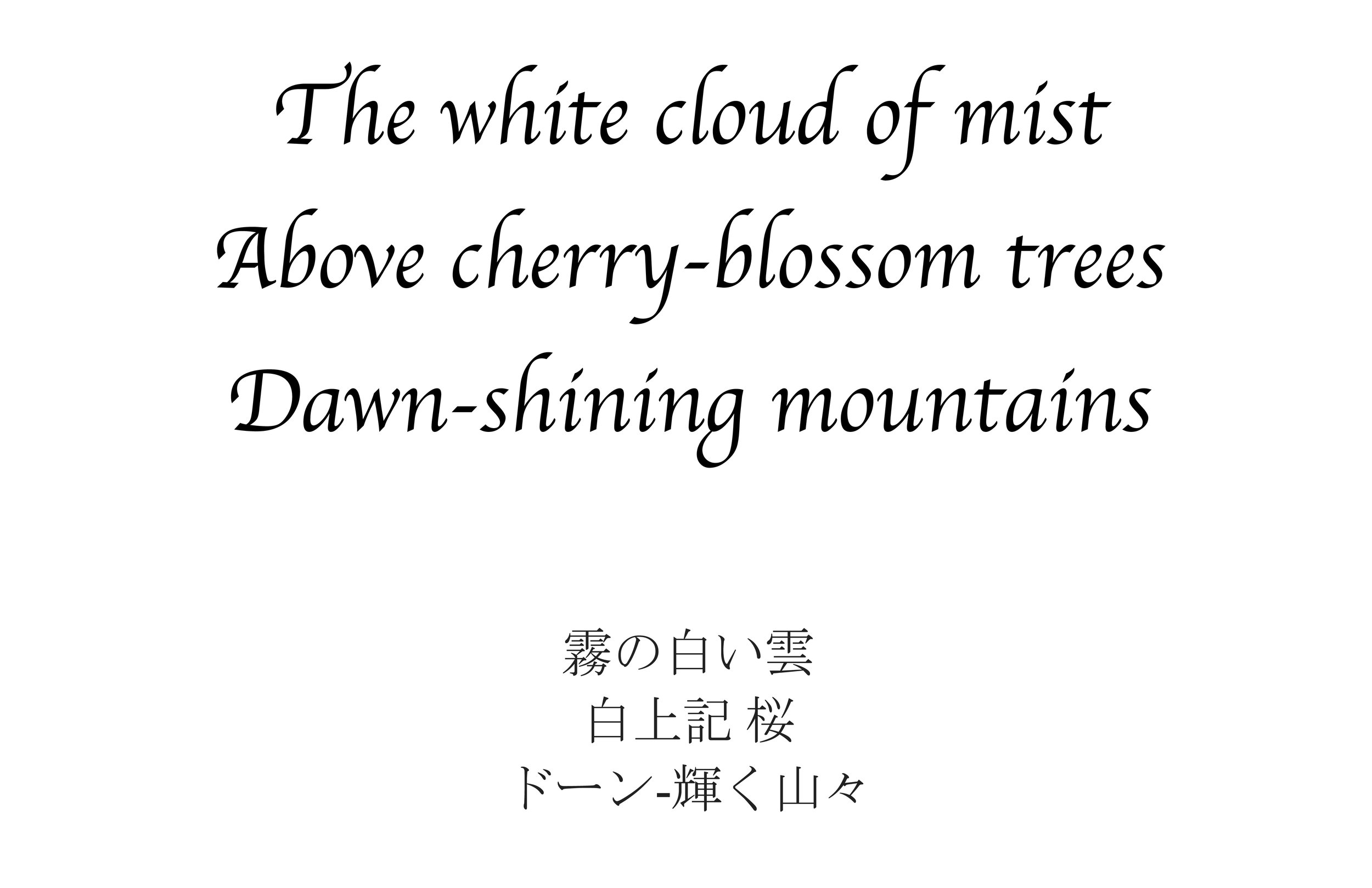
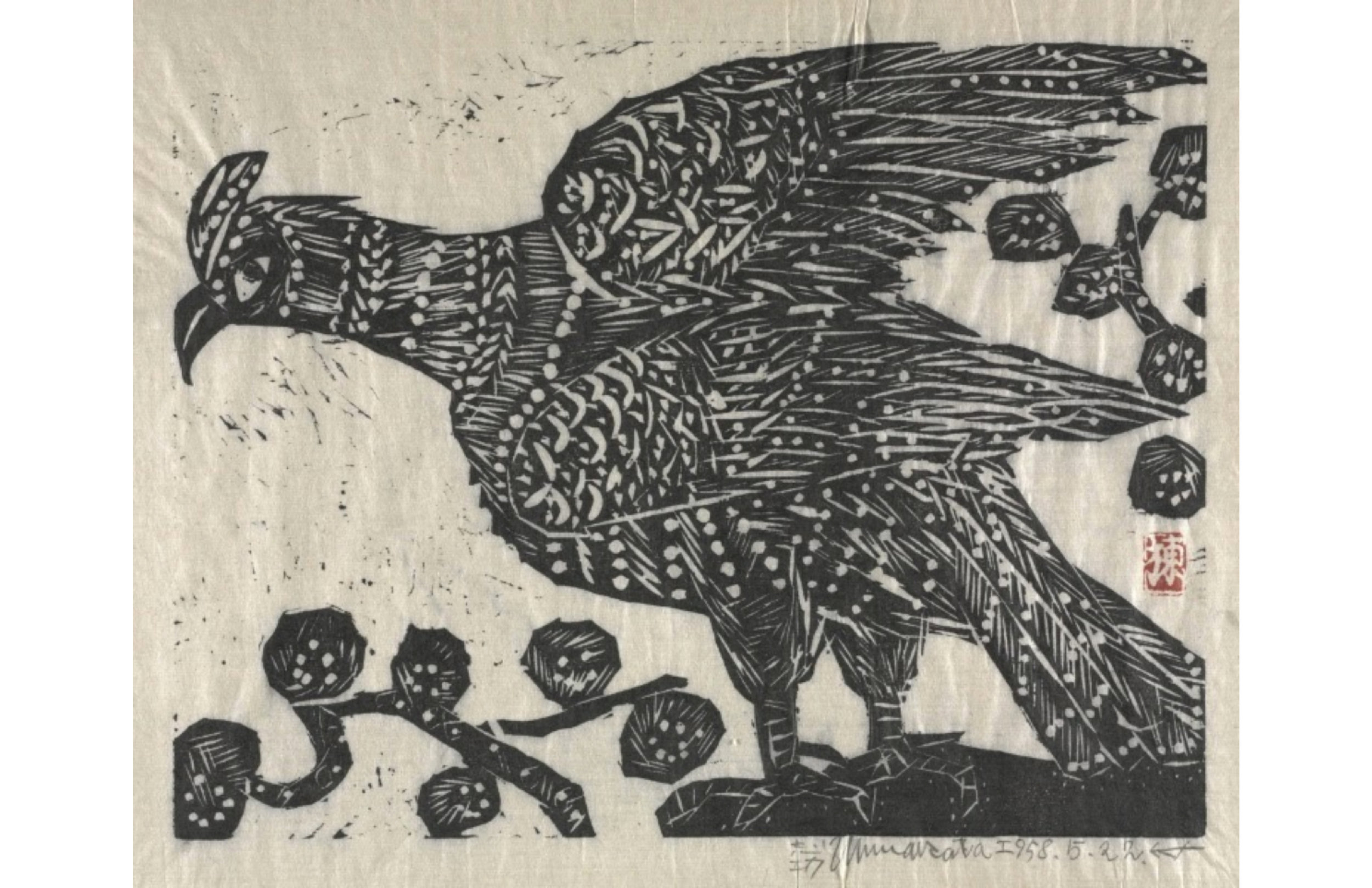
My students were extremely motivated to make connections within the collection. They were like tiny detectives working on a mystery. We regrouped as a class to discuss what they found. Using questioning techniques, my goal was to use whatever they brought to the discussion, extend their thinking, and help them build on their own findings to reach interpretations and a big idea.
As an example, here's a course of dialogue that I remember. As I expected, most students started off by pointing out that the Basho piece was a haiku. Surprisingly, my students consistently-- in three different class sections-- looked closely at the Japanese writing on each piece. I had no clue when I picked these pieces that they each had writing on them.
Student: They all have letters on them (while pointing). Me: Awesome, you found letters. How could you tell that they are letters? S: Because I've seen them before and it's not our letters but it's all Chinese letters. Me: Do you think all the letters are from the same language? S: Yea I looked real close and there is an exact same letter in each one. Me: So we've seen letters that look like this before. Chinese language looks like this. What are some other languages that might look like this? (Silence for ten seconds). We said that this one is a haiku (pointing to Bashu piece). Where are haikus from? Ss: Japan! Me: So what language are these letters? Ss: Japanese!
I love moments like these, when students can connect what they are currently learning about to their prior knowledge. Eventually, students got to the word "nature" in each discussion. I brought focus to the similarities they found in the subject matter of each piece, and we discussed our big idea: Nature is a common theme in Japanese art. We then moved on to a video featuring Yayoi Kusama's art and her poem, "On Pumpkins." I modified a video I found online, to provide a read-aloud English translation for my students, alongside images of her artwork (the original video is by Victoria Miro, Courtesy KUSAMA Enterprise, Ota Fine Arts, Tokyo / Singapore and Victoria Miro, London © Yayoi Kusama).
My students were pretty quick to say, "It's Ms. Kusama!" or "Are you going to dress up like her again?!?" Haha. We moved on to discuss "How does Yayoi Kusama feel about pumpkins?" and "What do we see in her art that might show us how she feels?" For their studio project, they made 3D paper pumpkins and incorporated their own pumpkin poetry by writing their haikus on their artwork.
Pattern Pumpkins & Risk-Taking
It's now year three, I just finished teaching a third variation of this unit, and it's probably my favorite. My fourth graders basically took a sharpie to a white pumpkin and just went for it. “How can you change a ‘mistake’ into something you like, when you can’t erase?” They could look at this worksheet and projected some zentangle example videos (in the background) as anchors while they worked. We touched on pattern, line, contrast, positive/negative space...but risk-taking was the main thing I found myself modeling. We had just finished a project where I noticed they were working very tentatively and asking for lots of feedback with every step. With the pumpkins, I prompted them to try their best and also embrace mistakes, a great lesson for little artists that reminds me of Beautiful Oops! My librarian also told me about the wonderful Book of Mistakes. Our "I can" statement was: "I can make a mistake look great!"
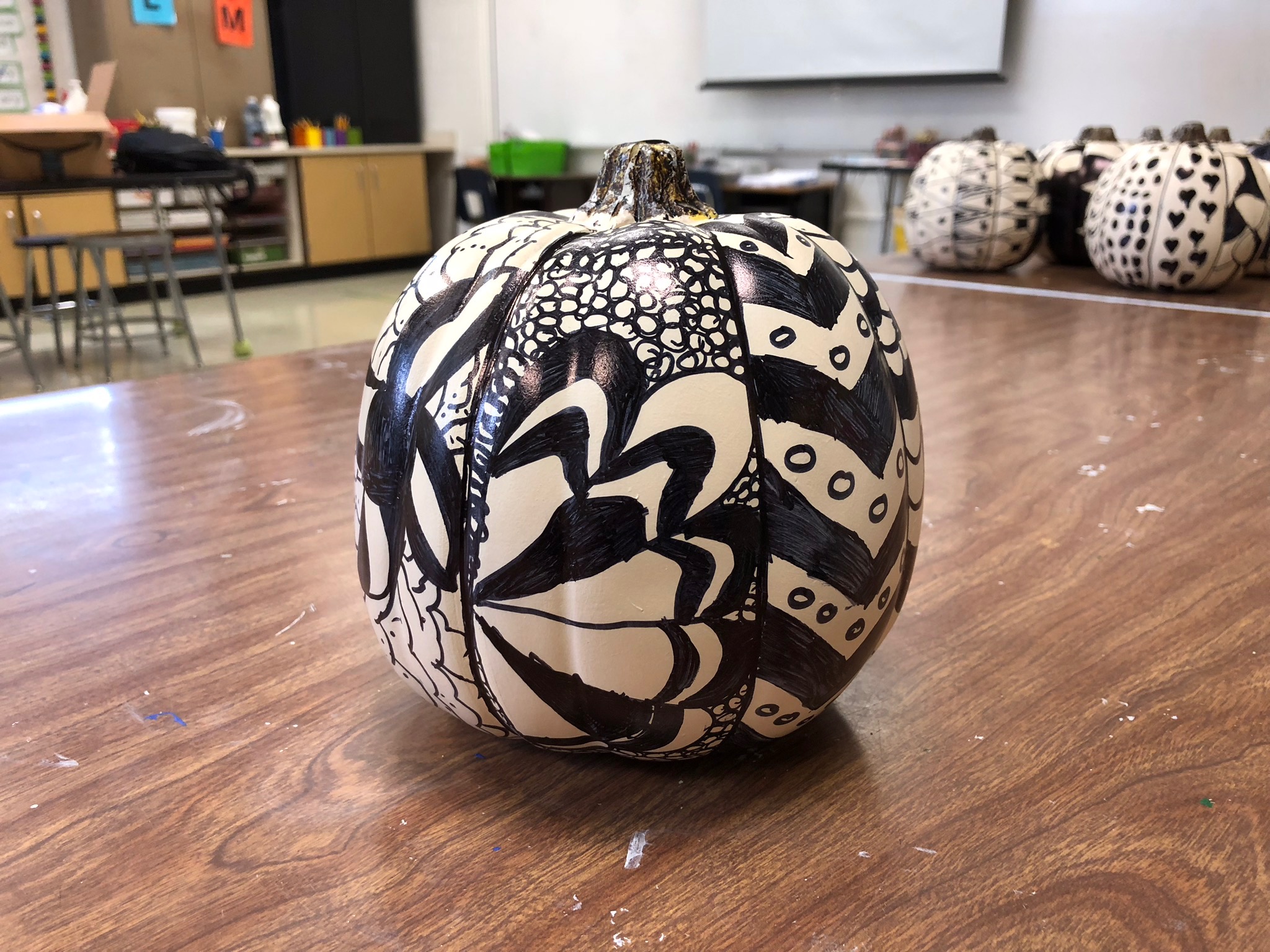
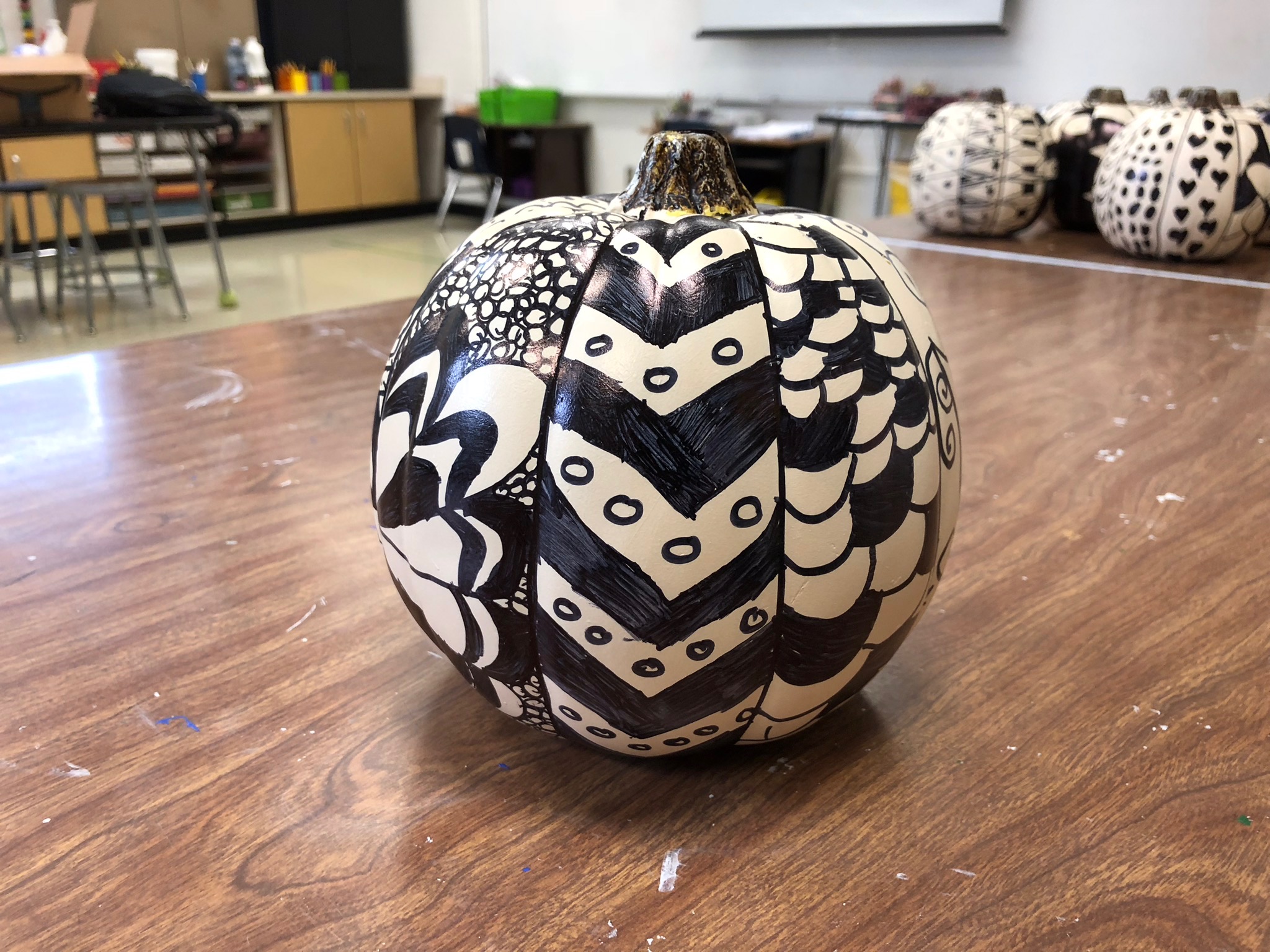
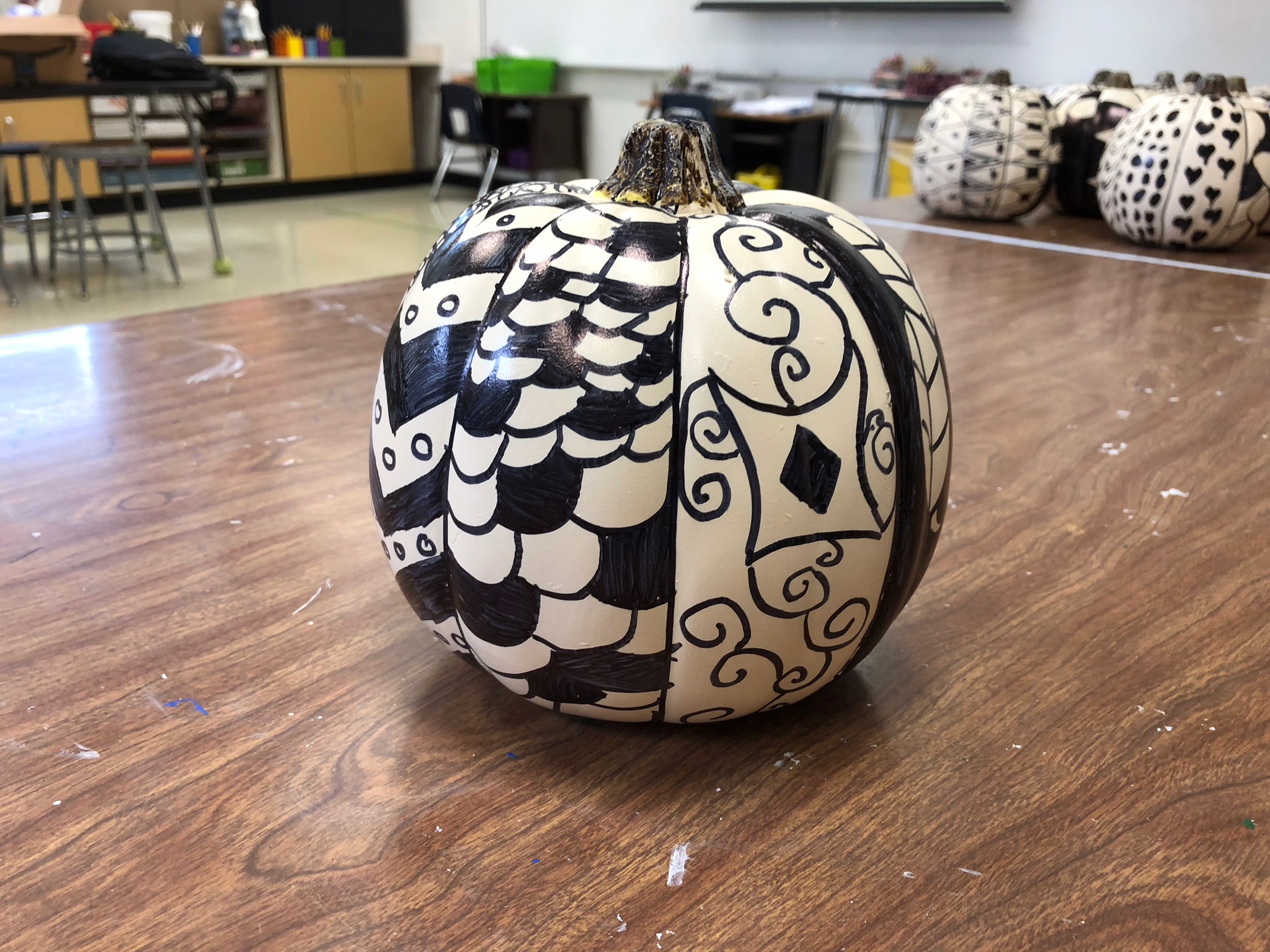
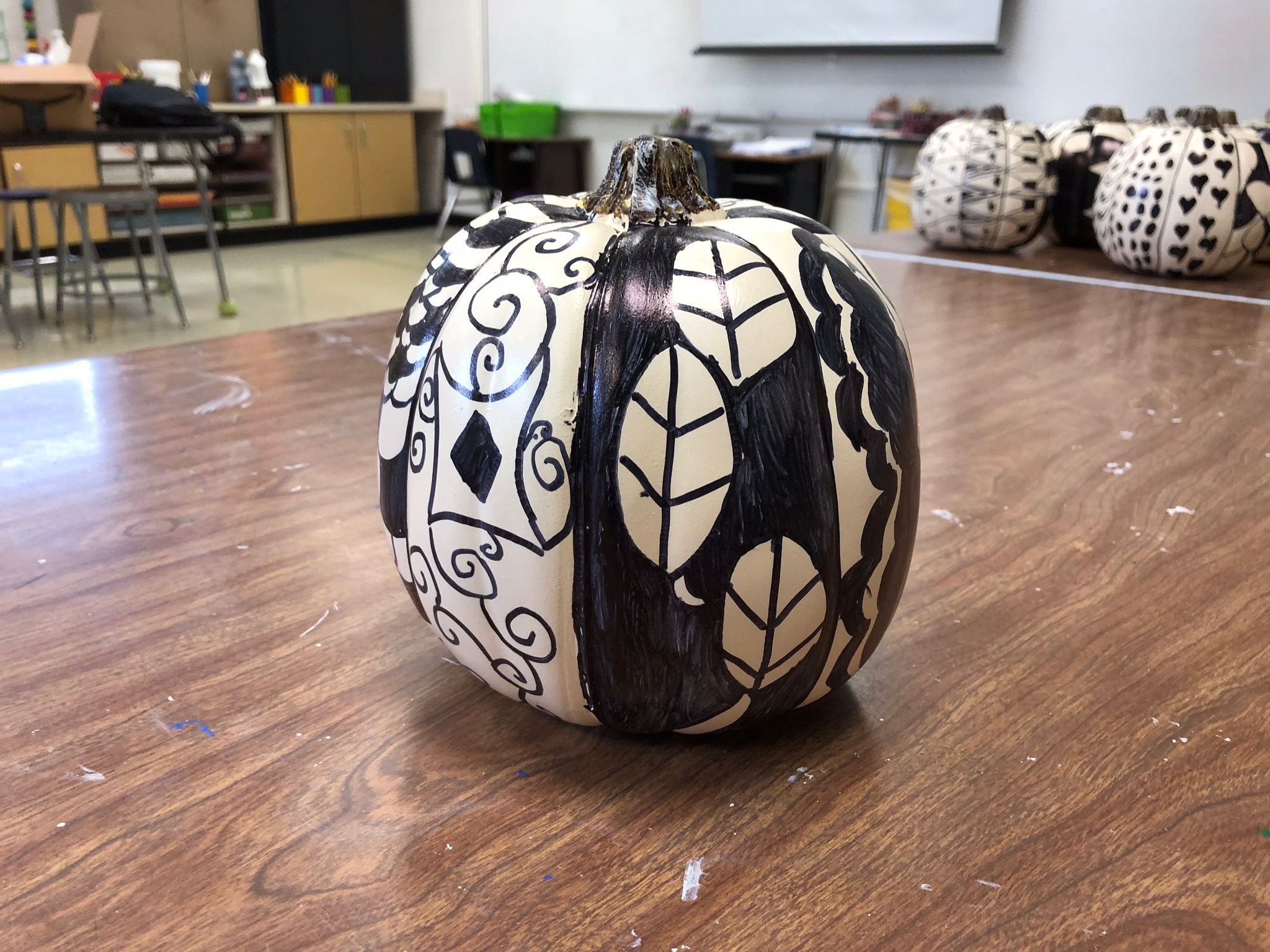
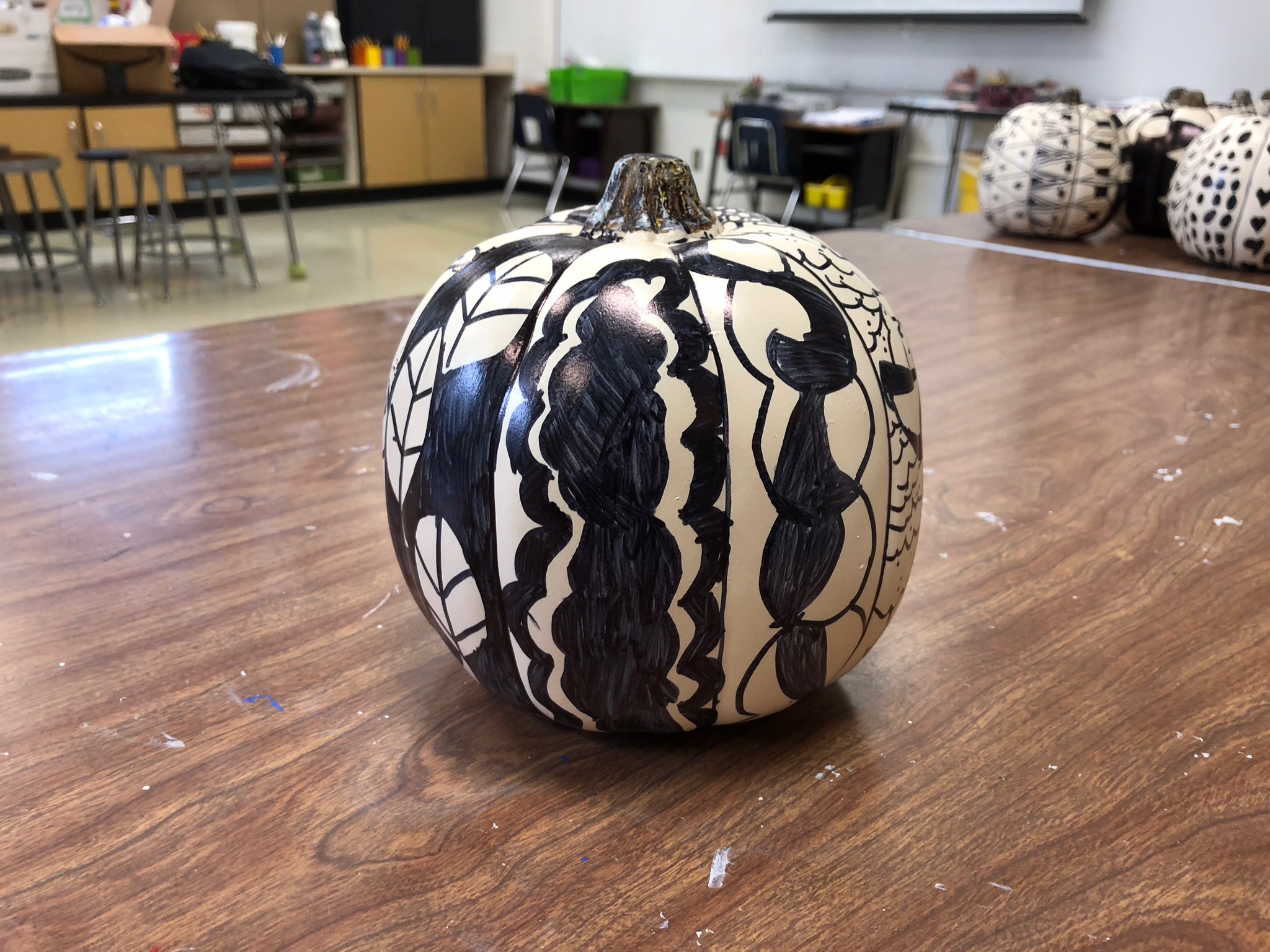

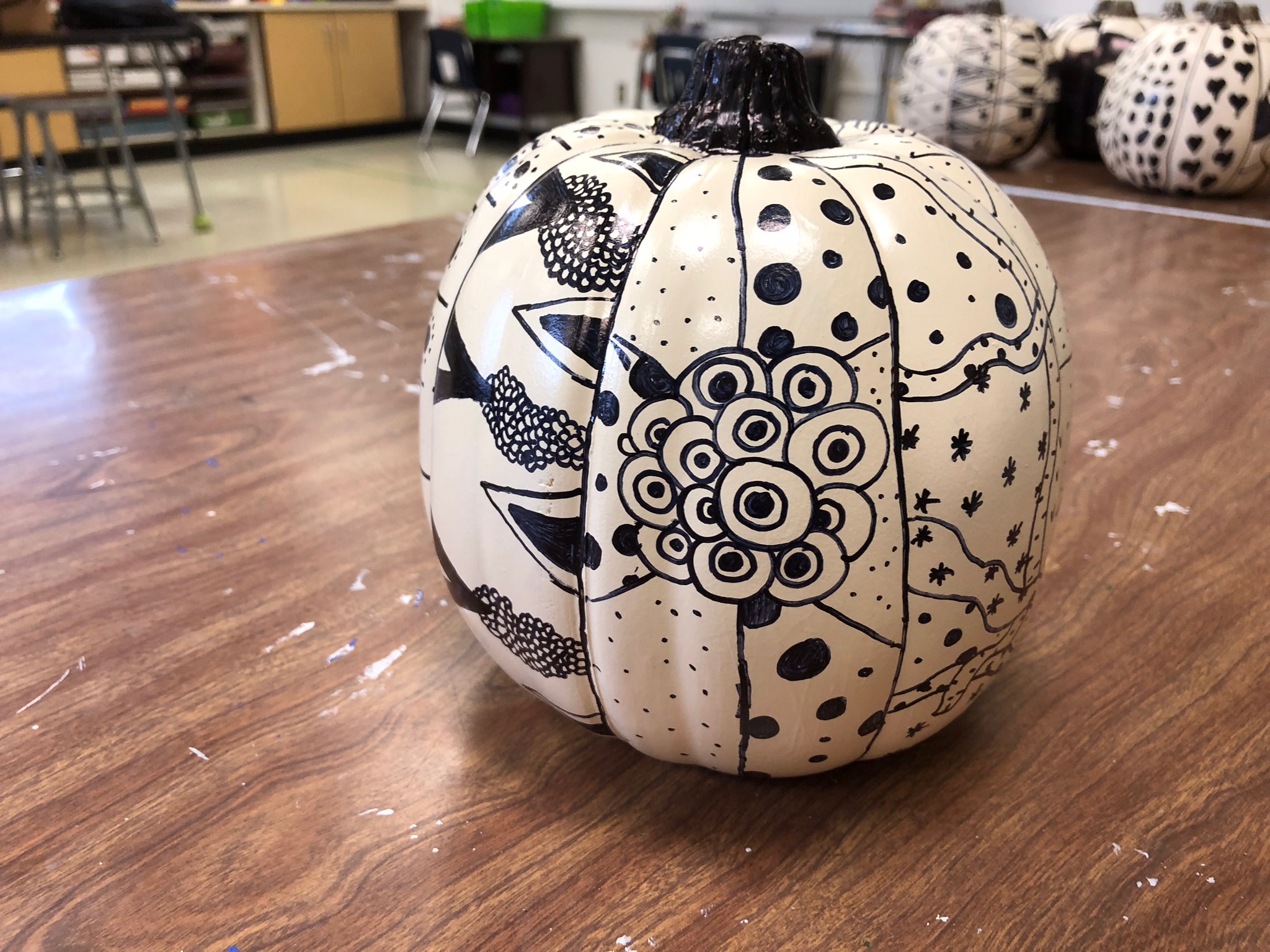

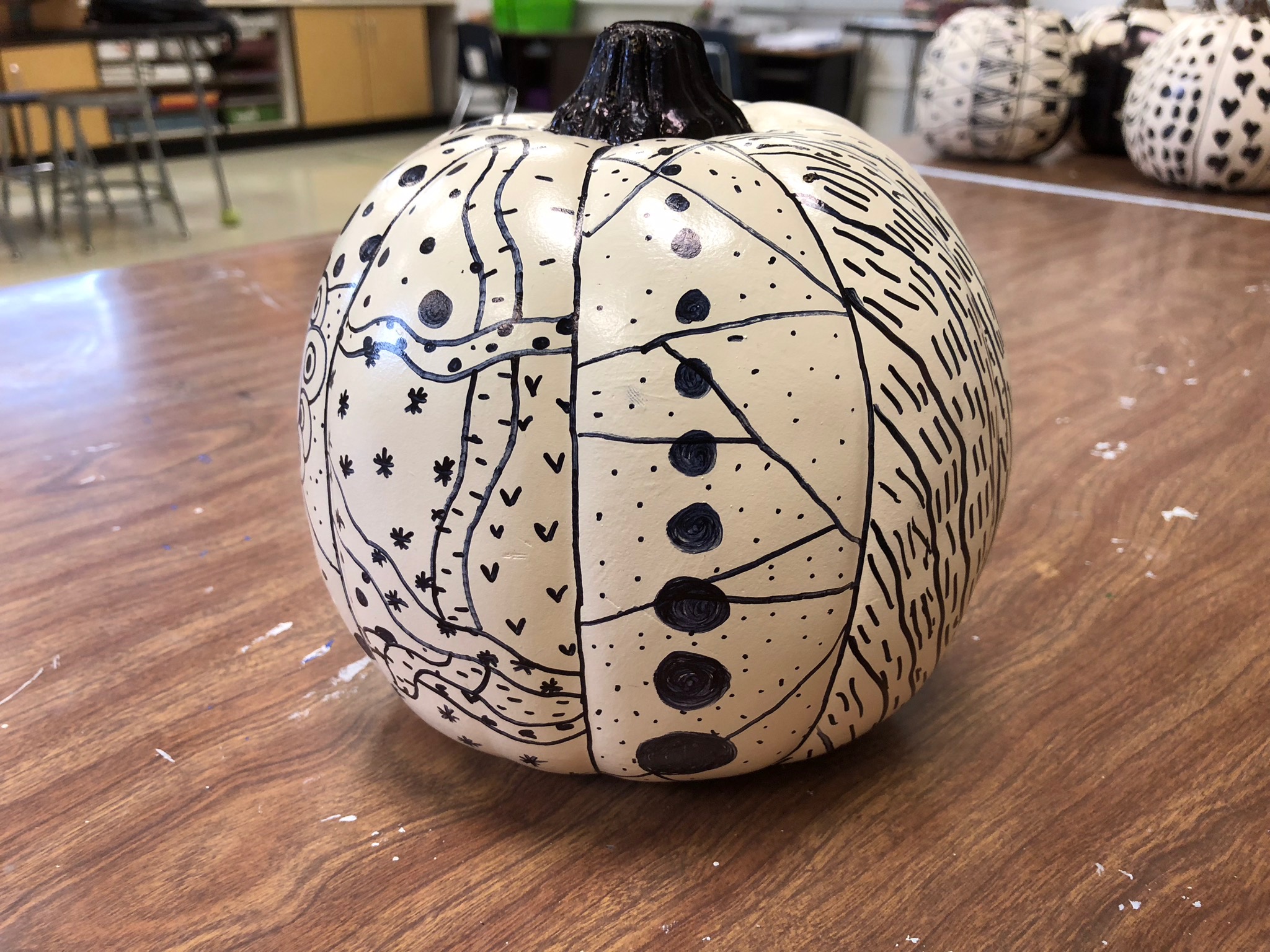
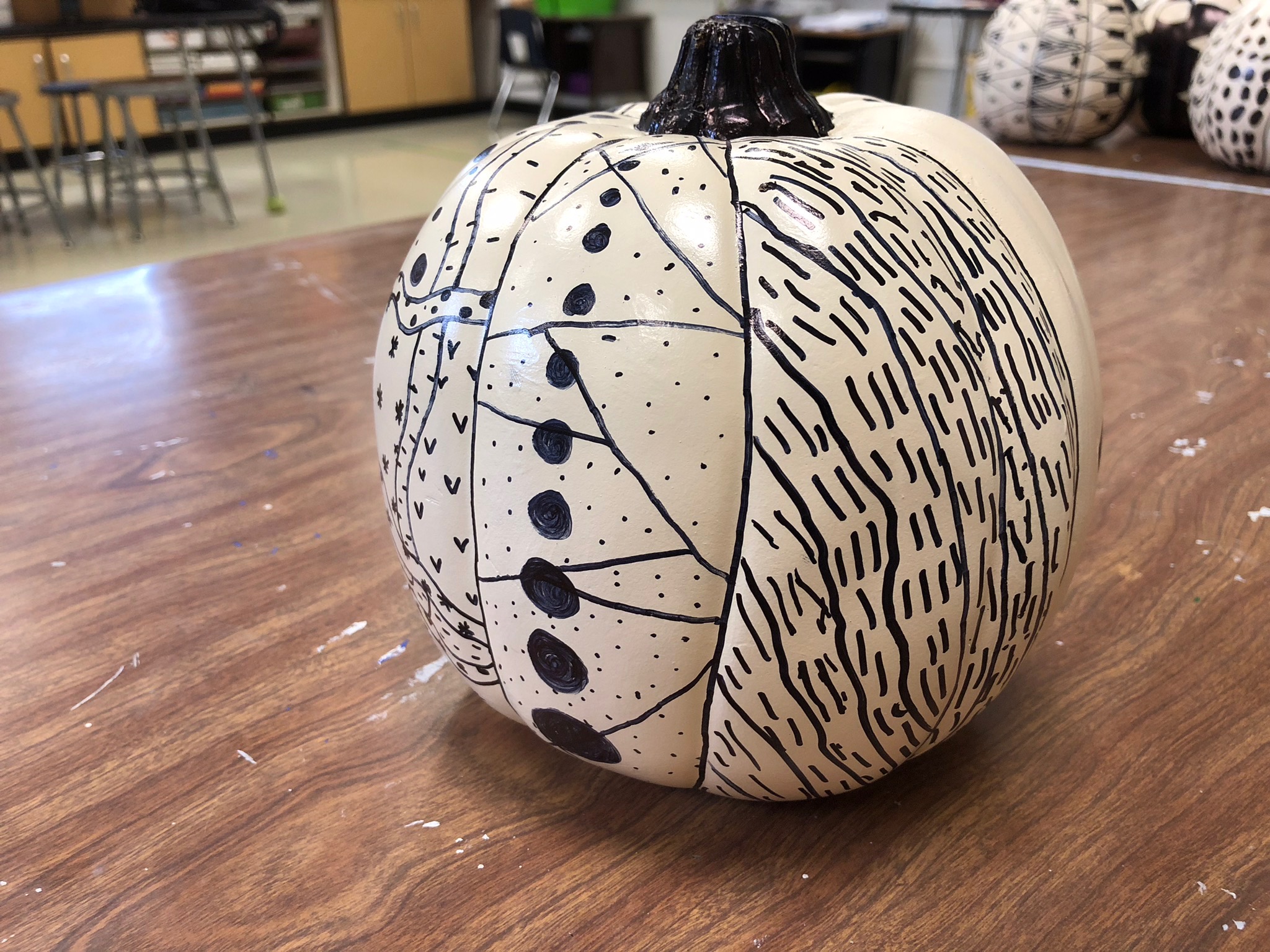
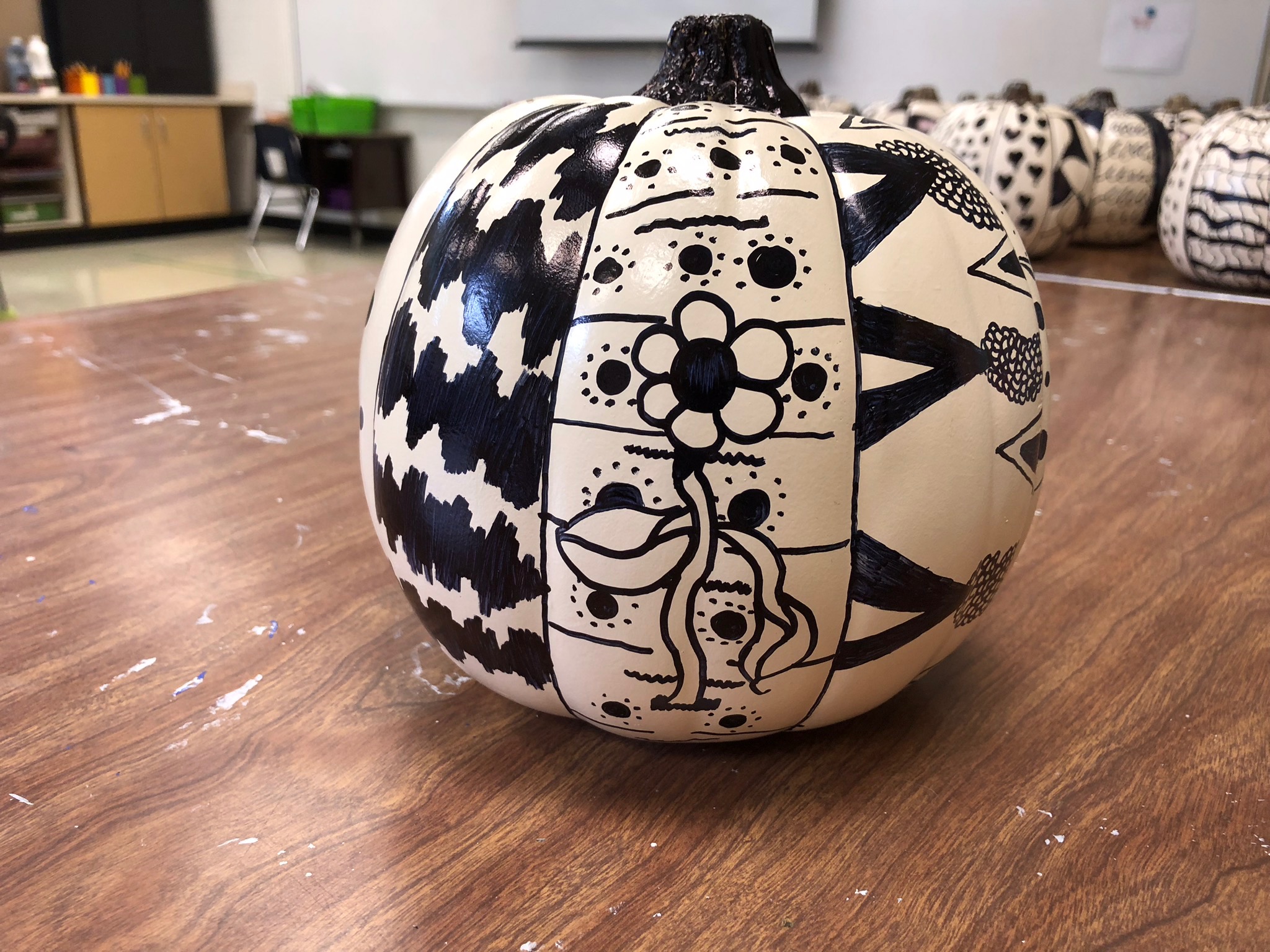
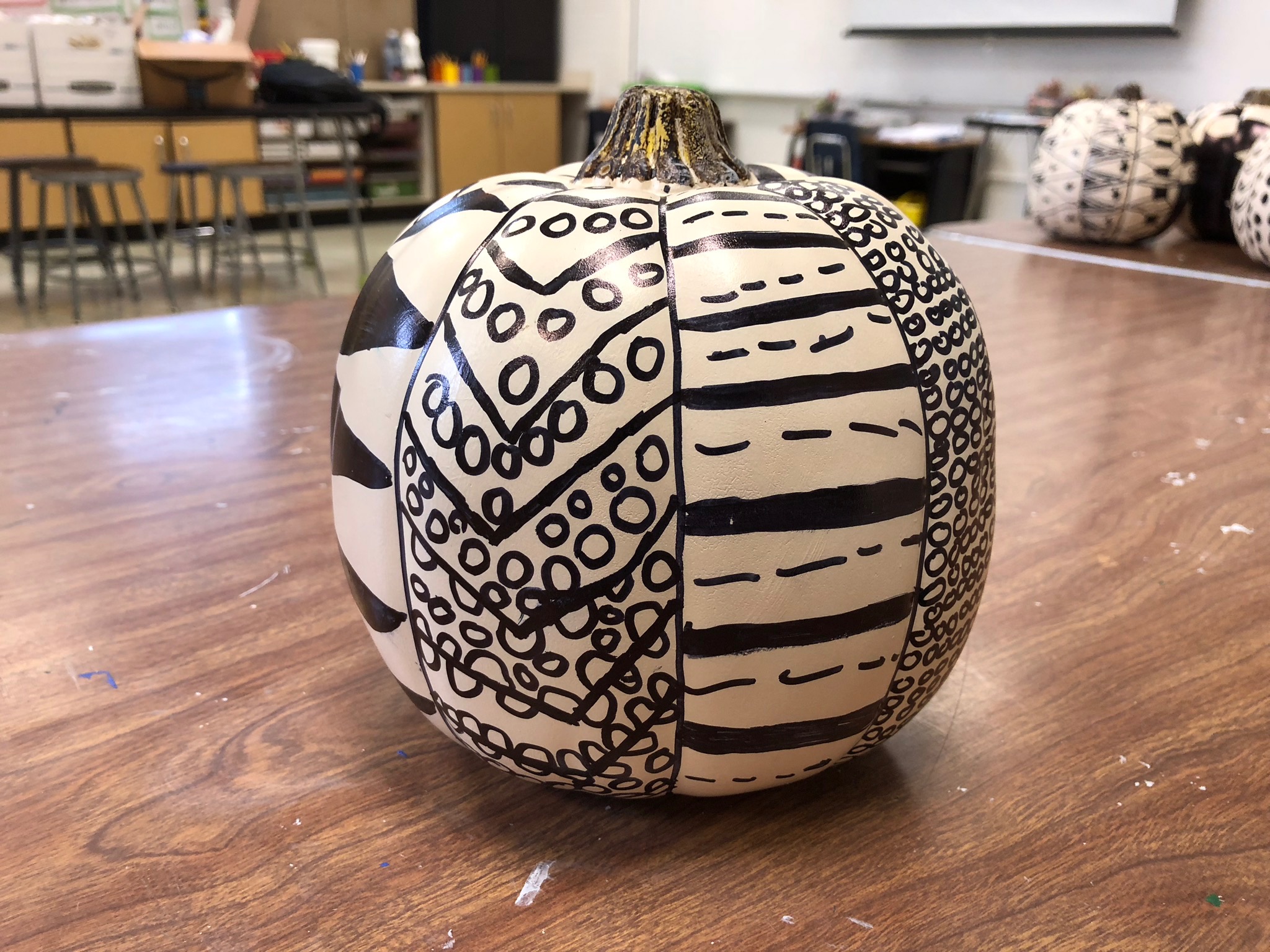
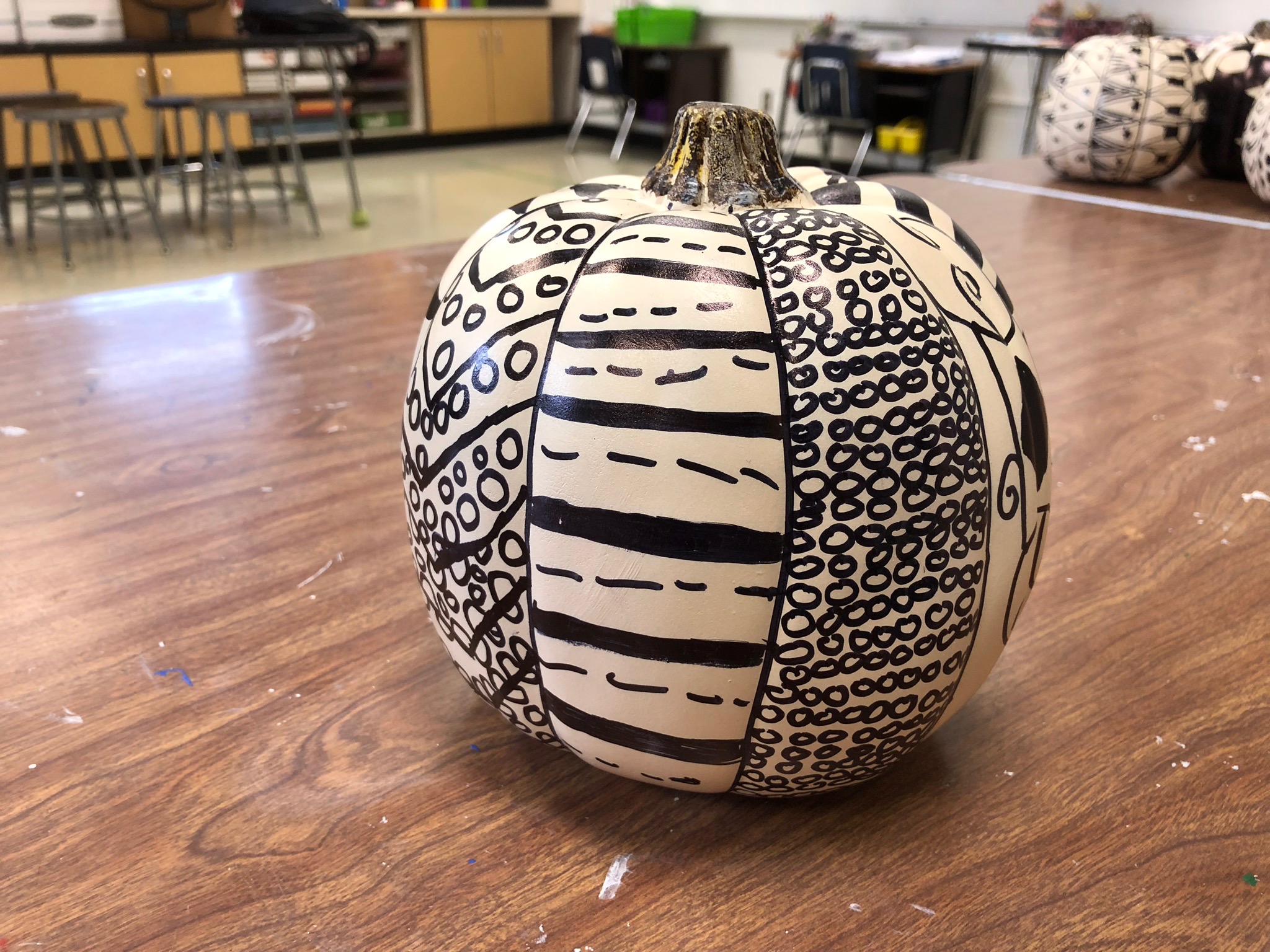
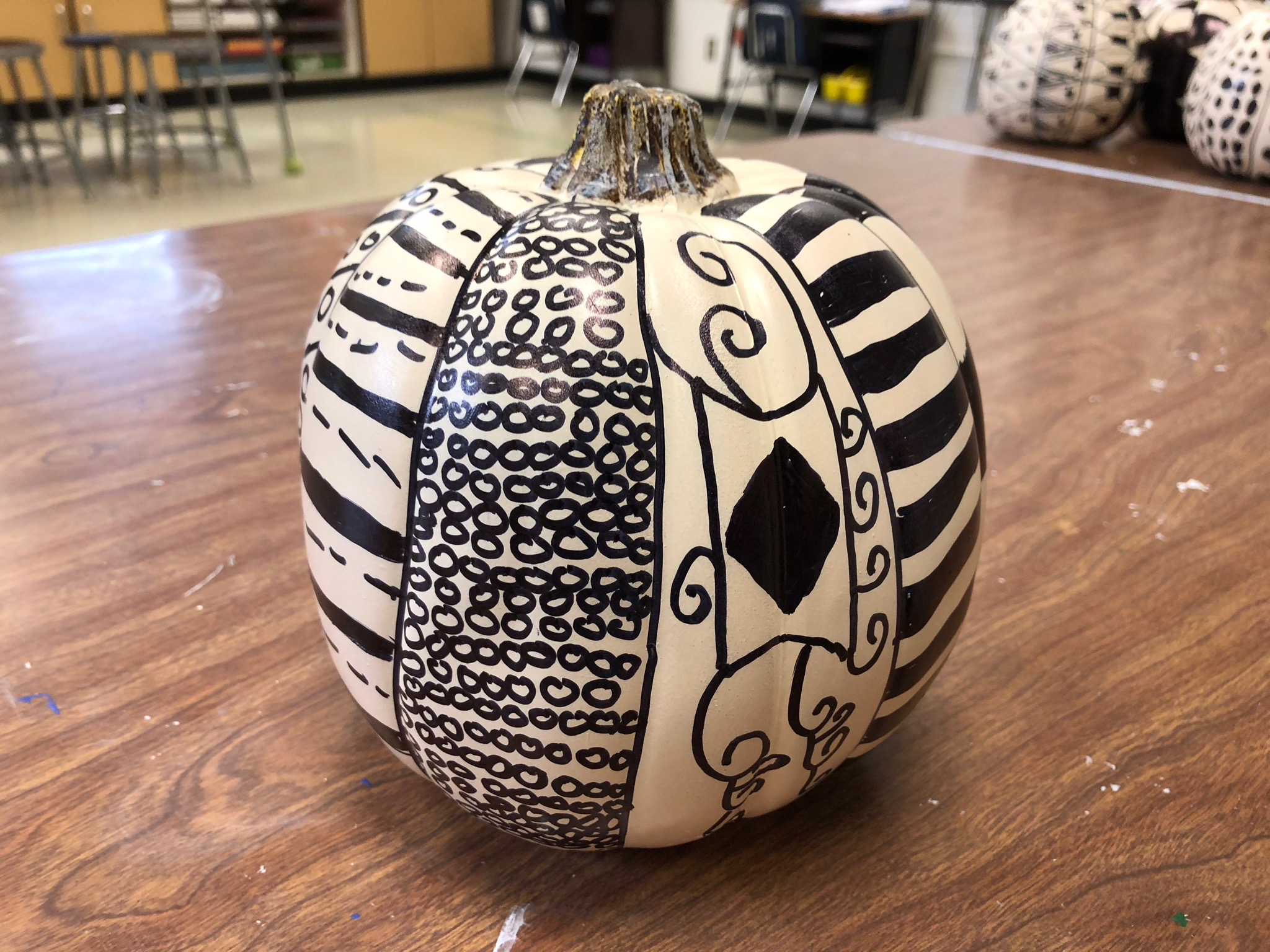
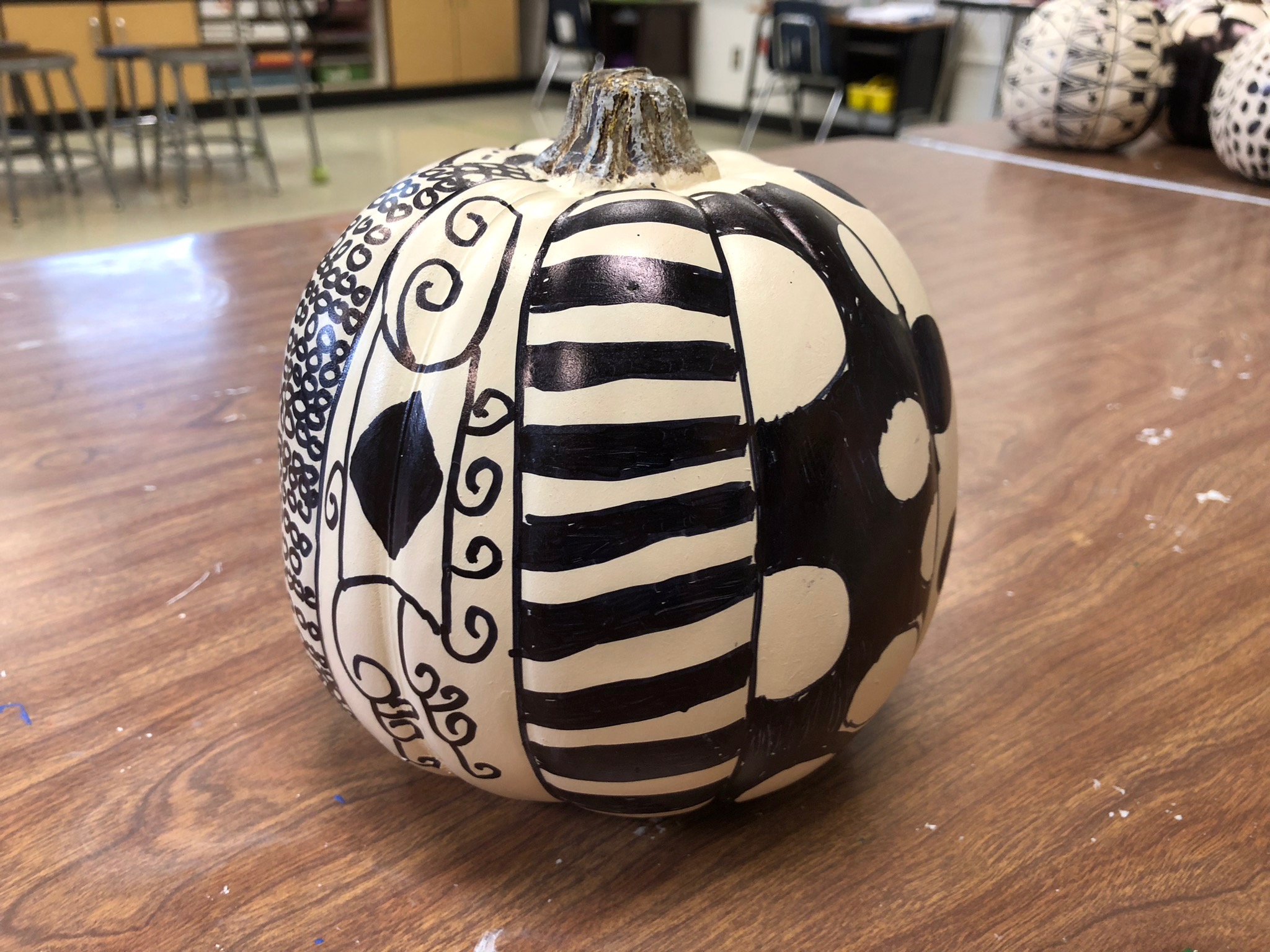
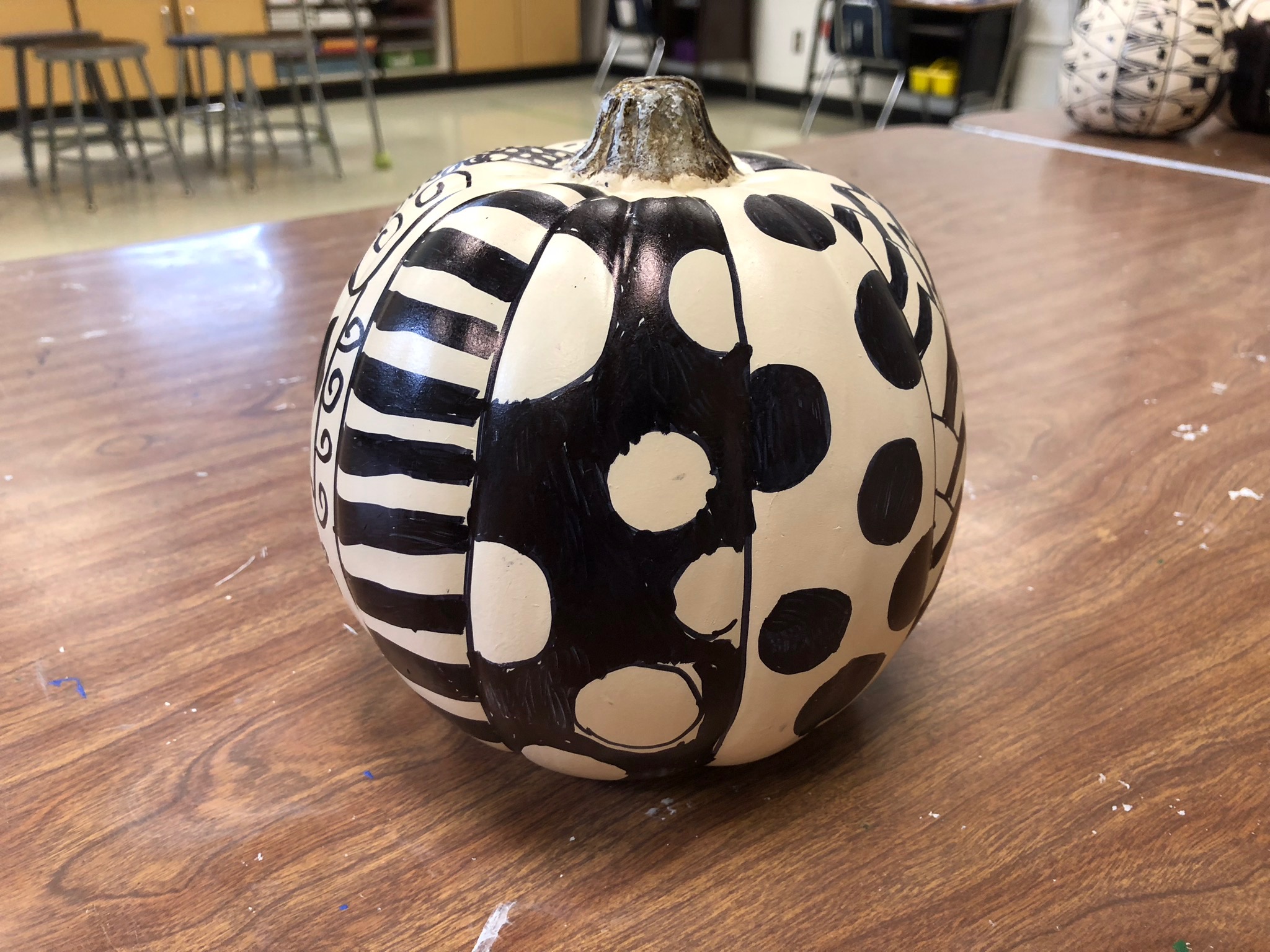
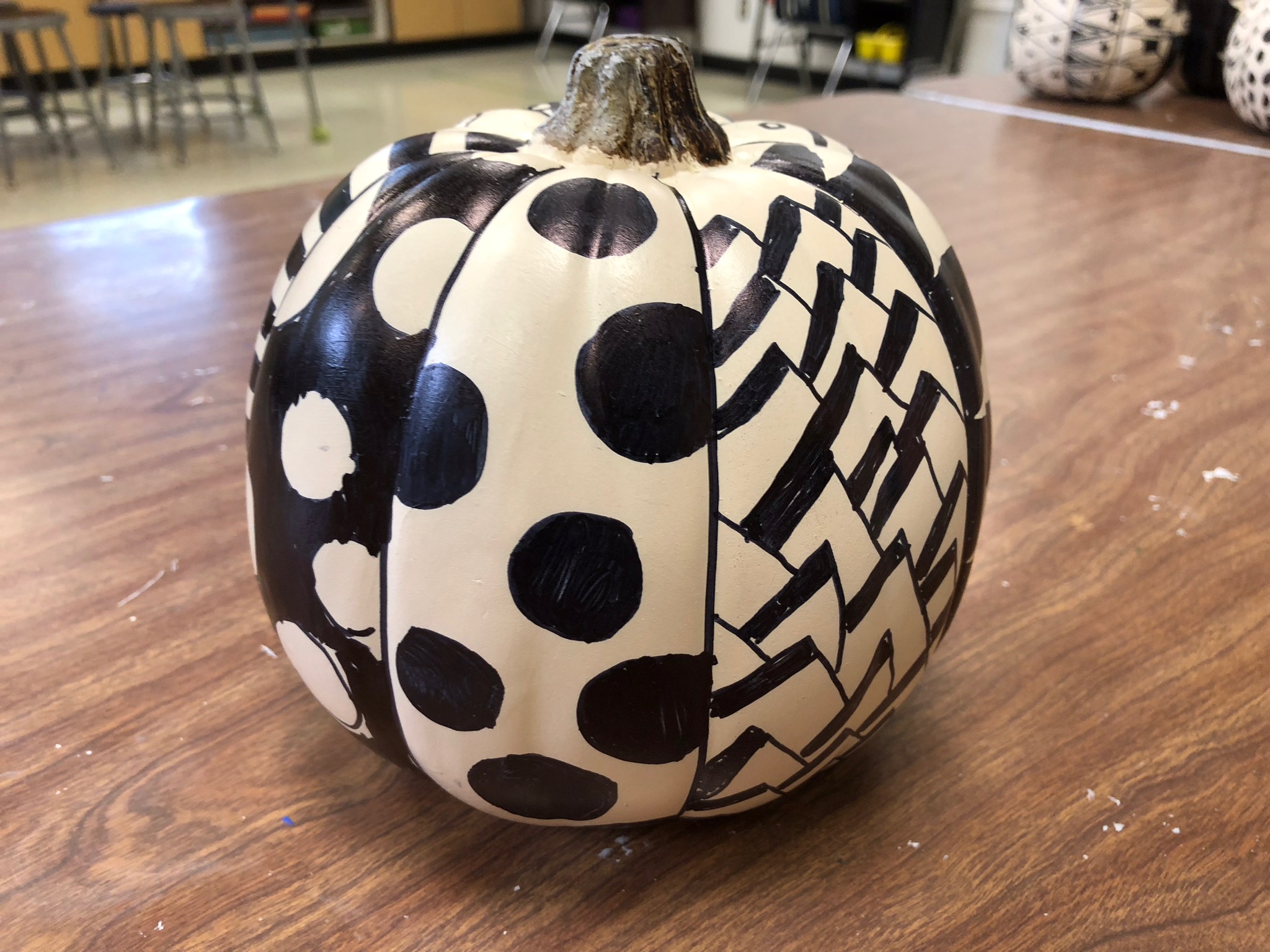
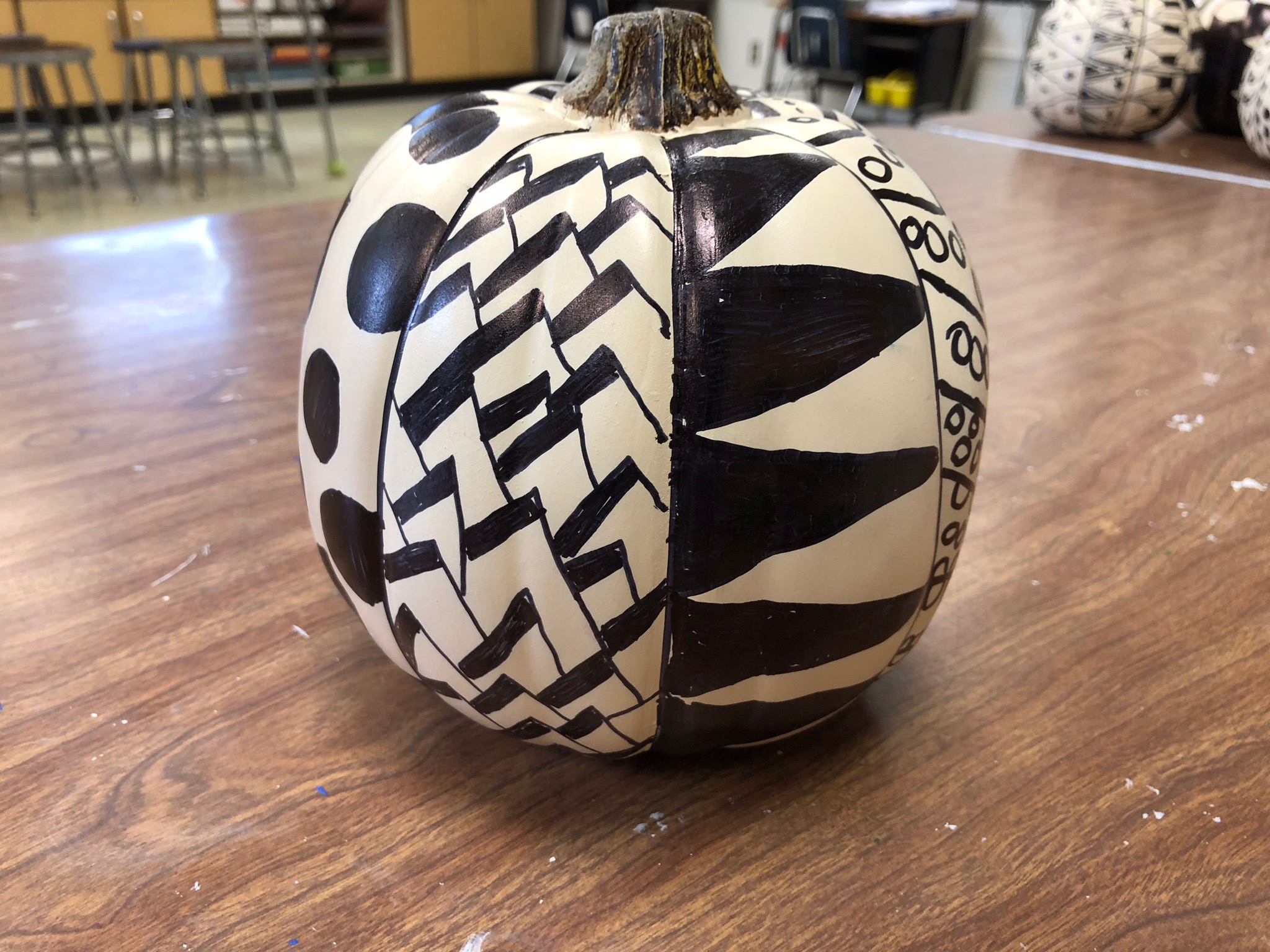
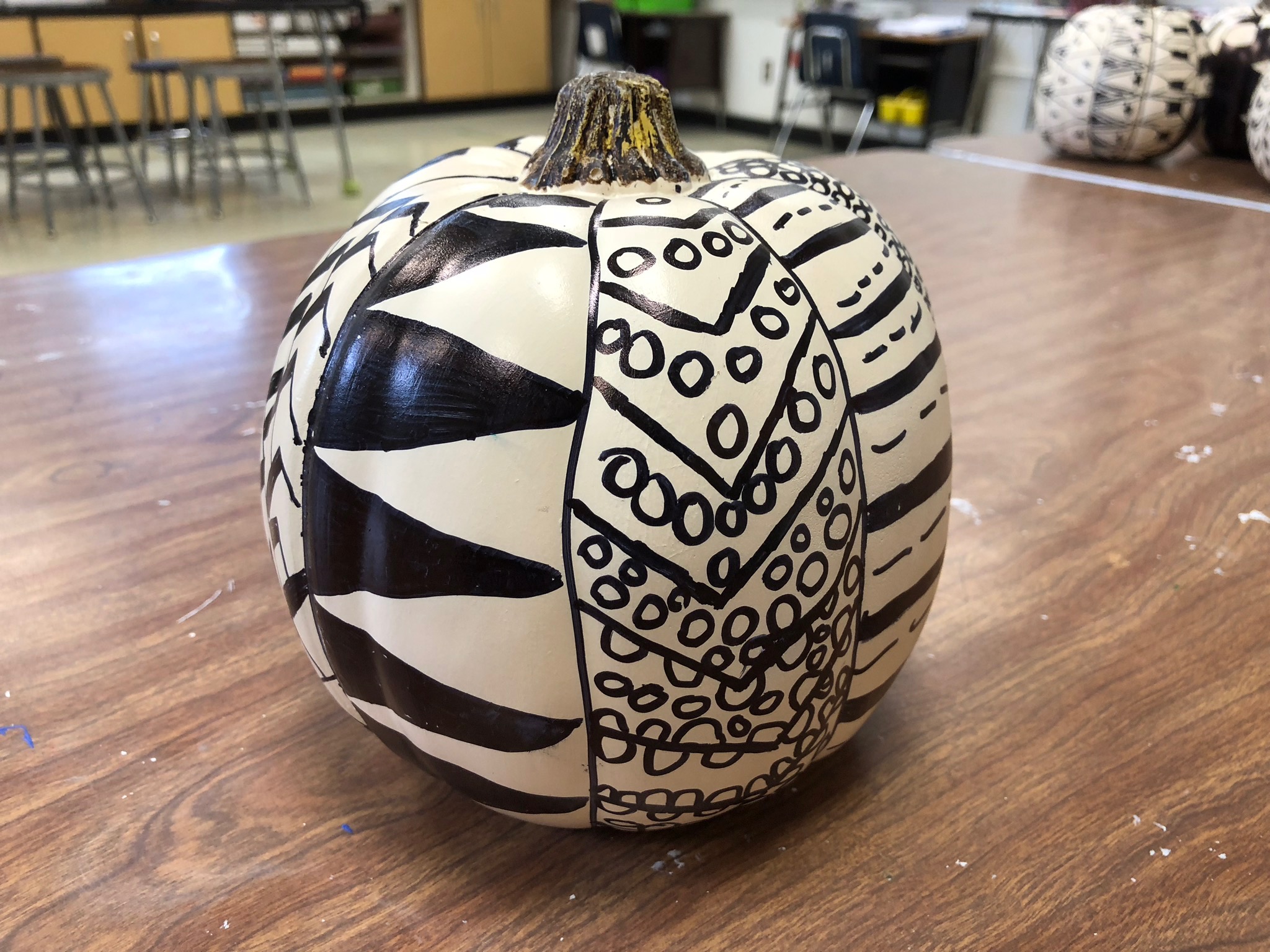
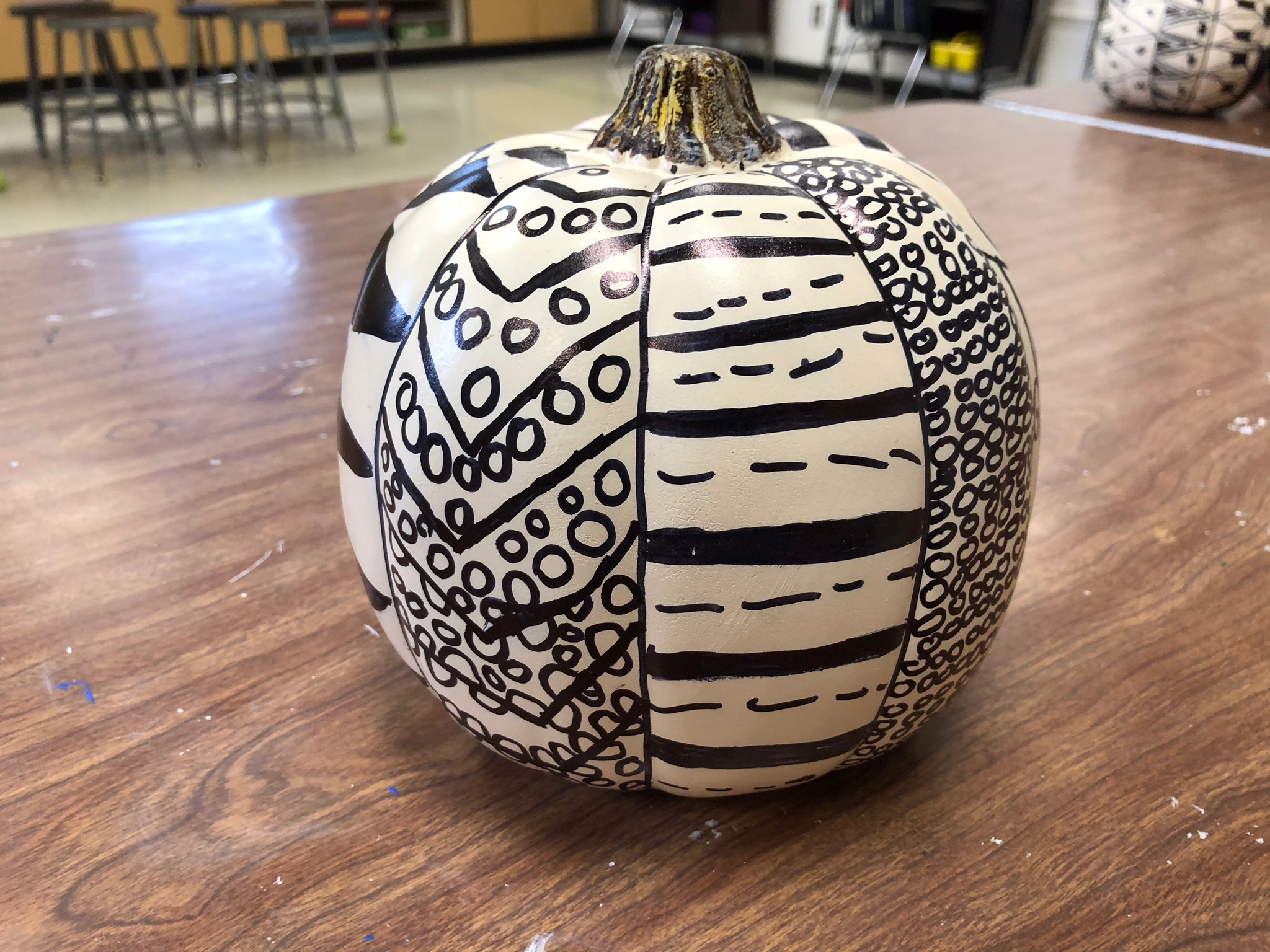
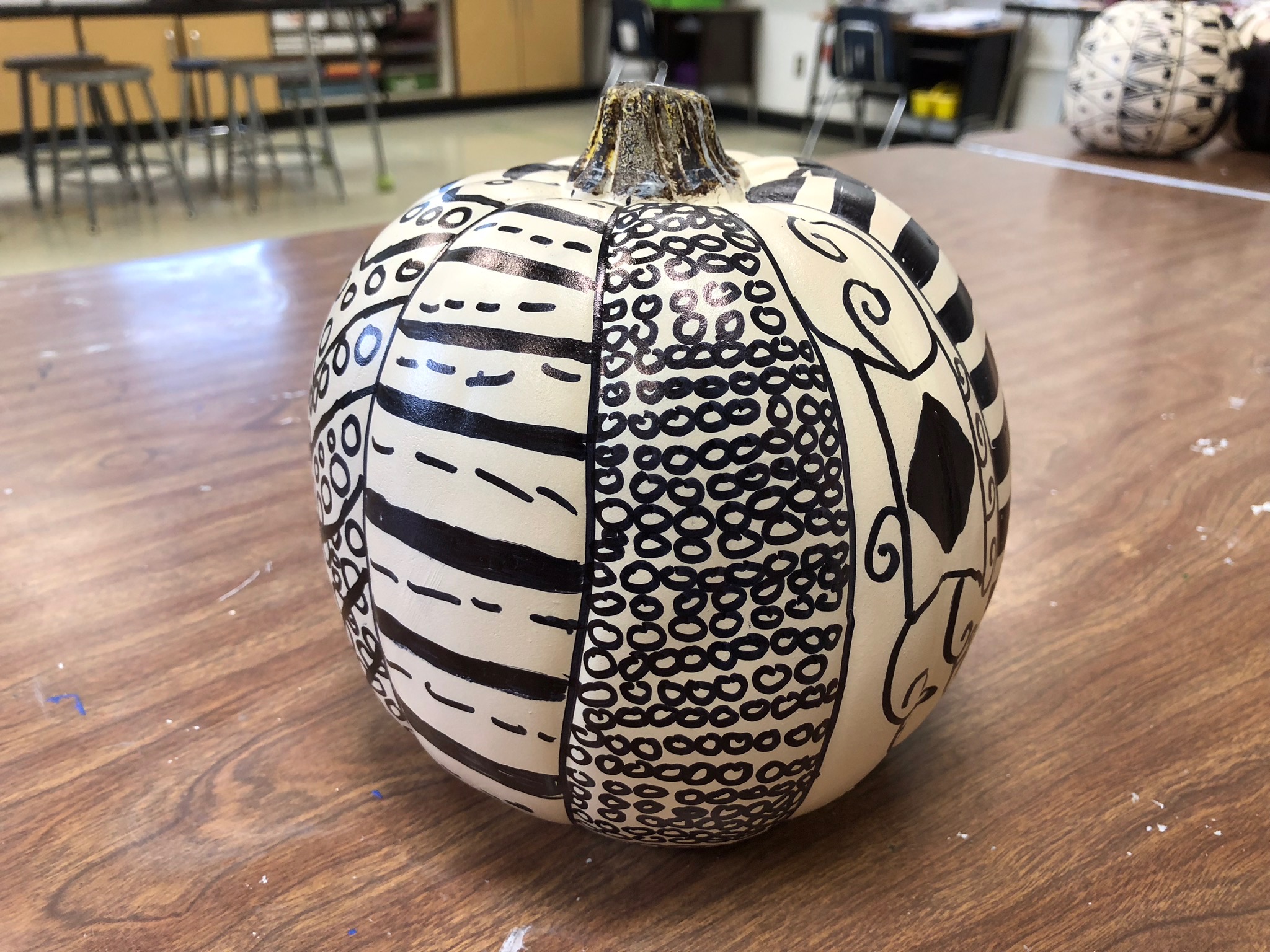
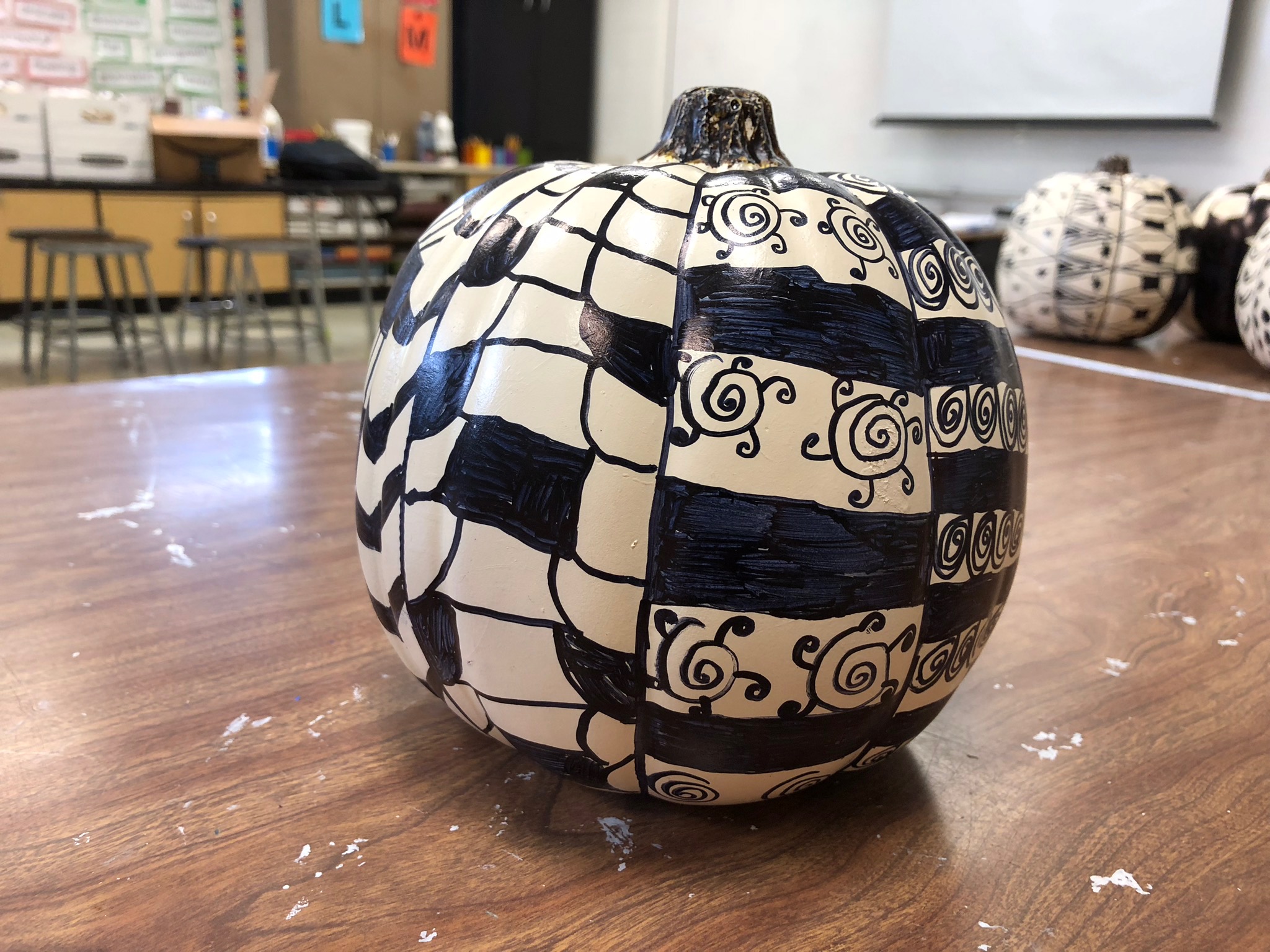
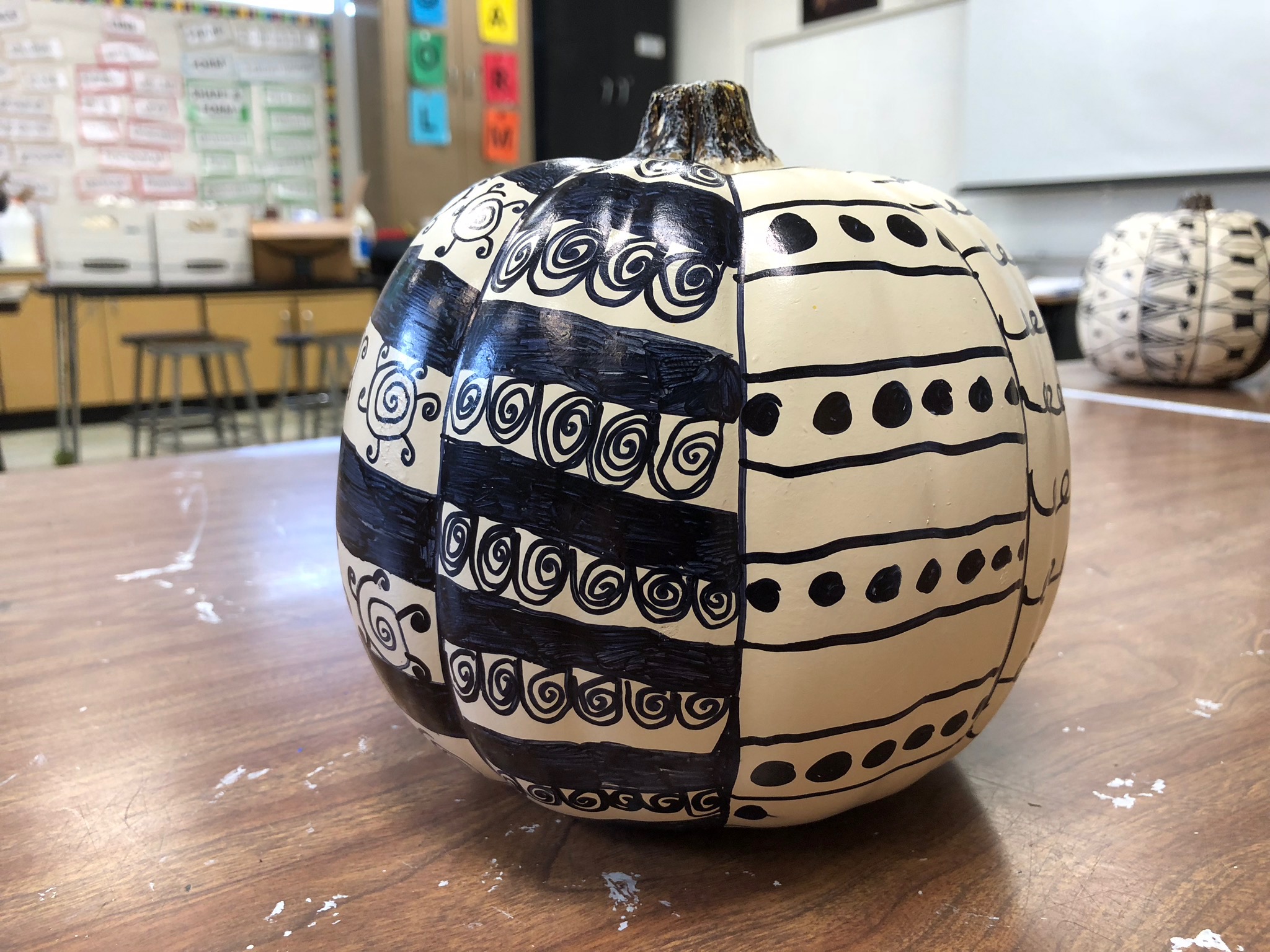
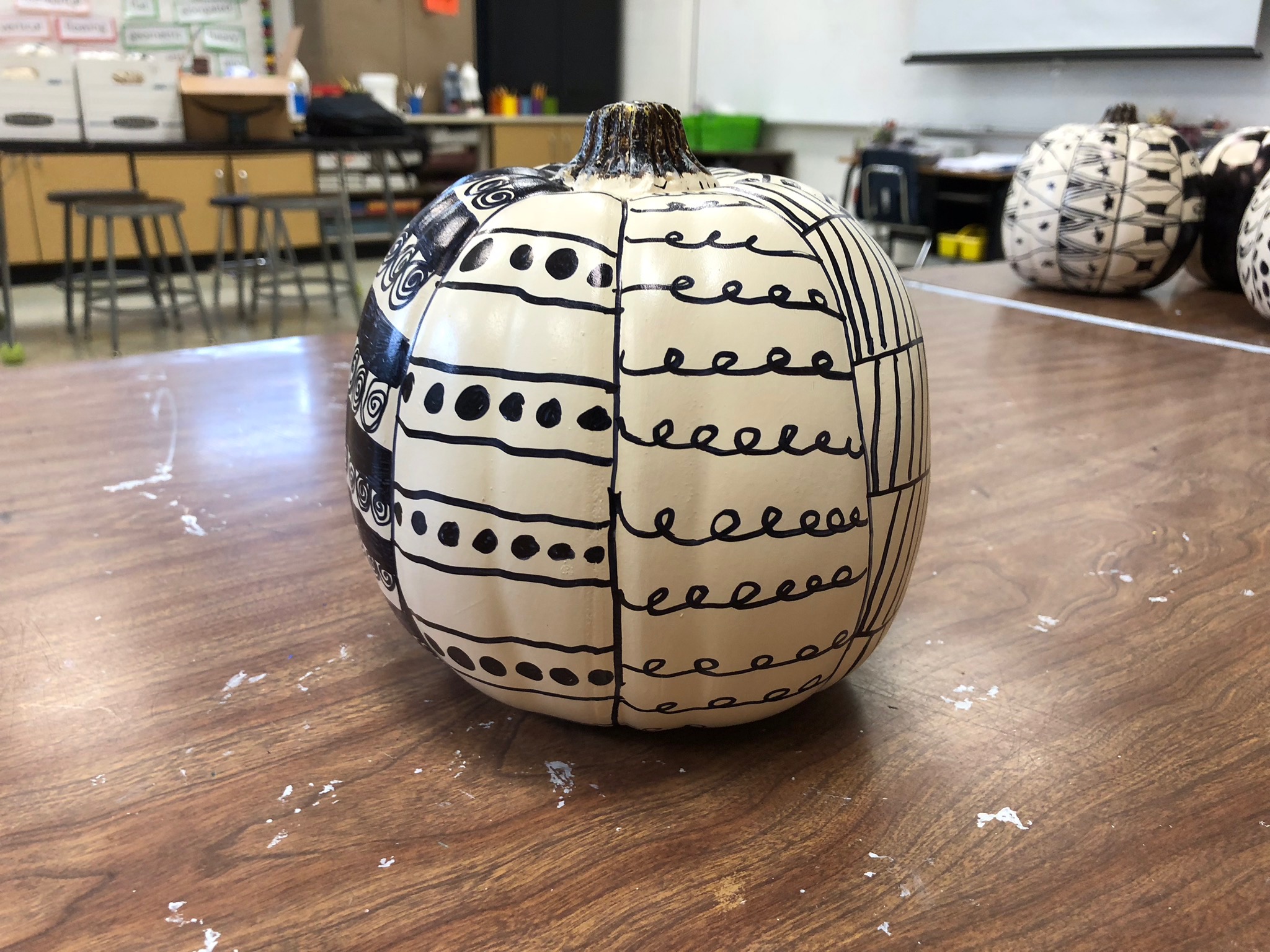
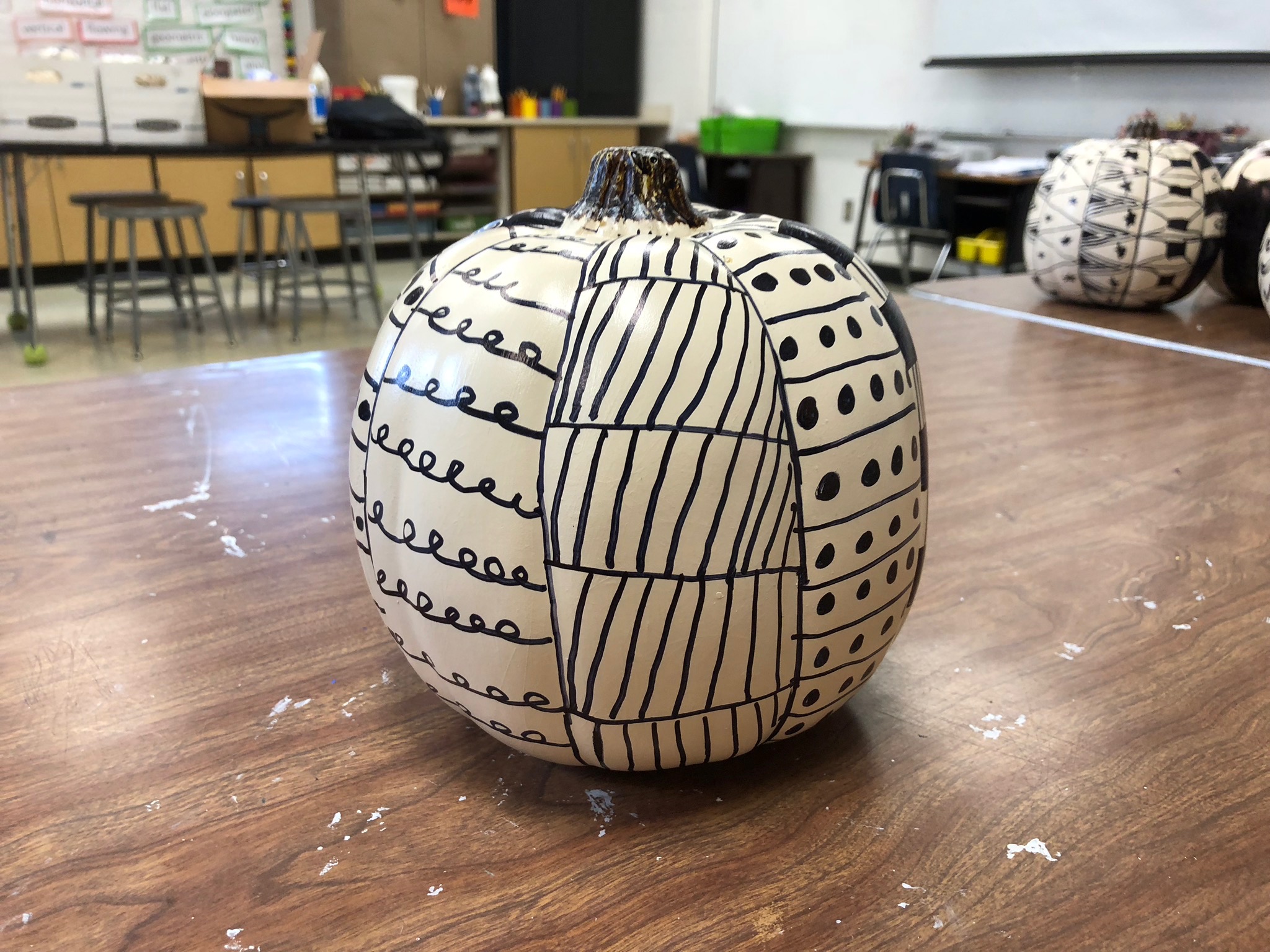
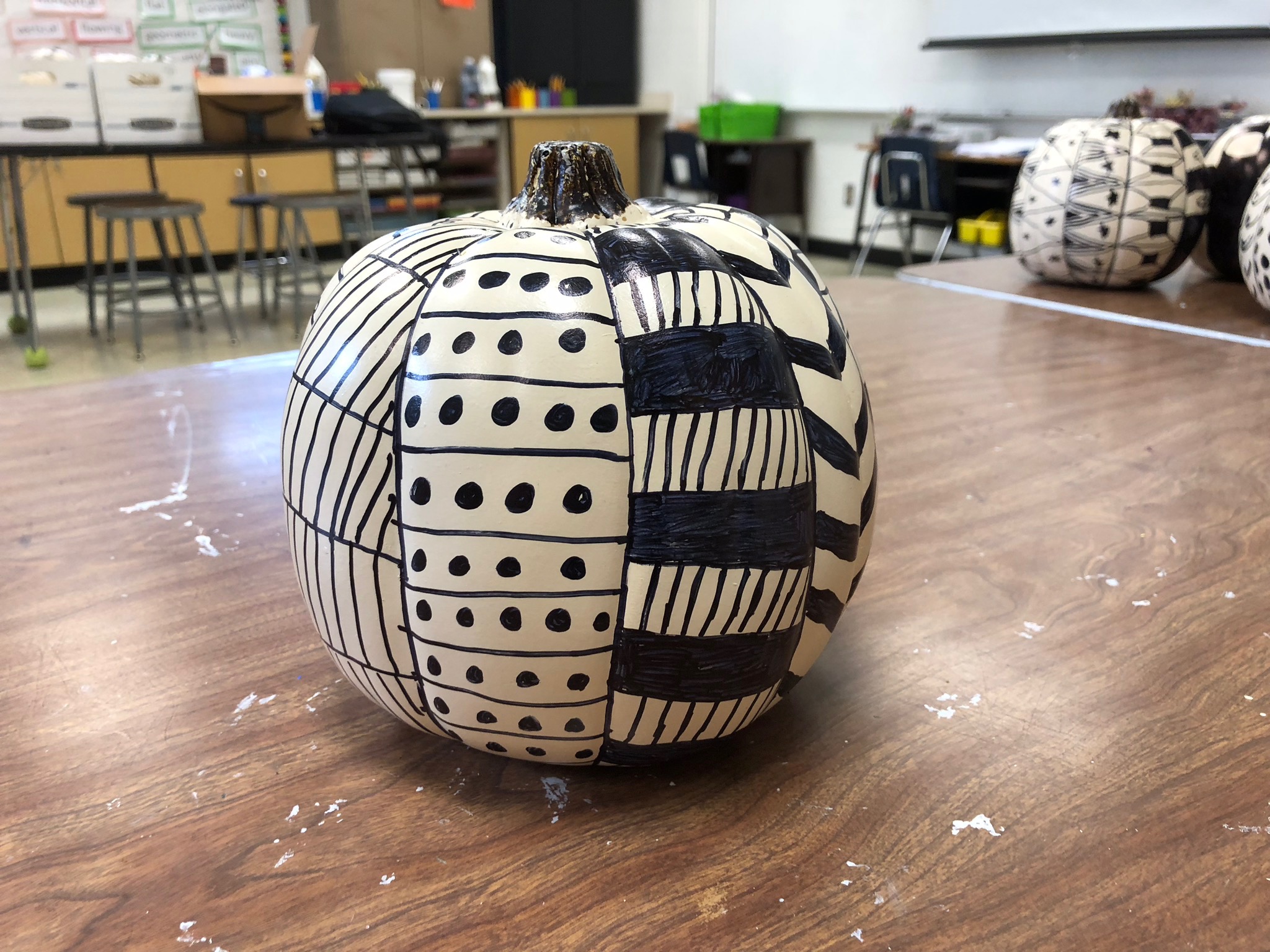
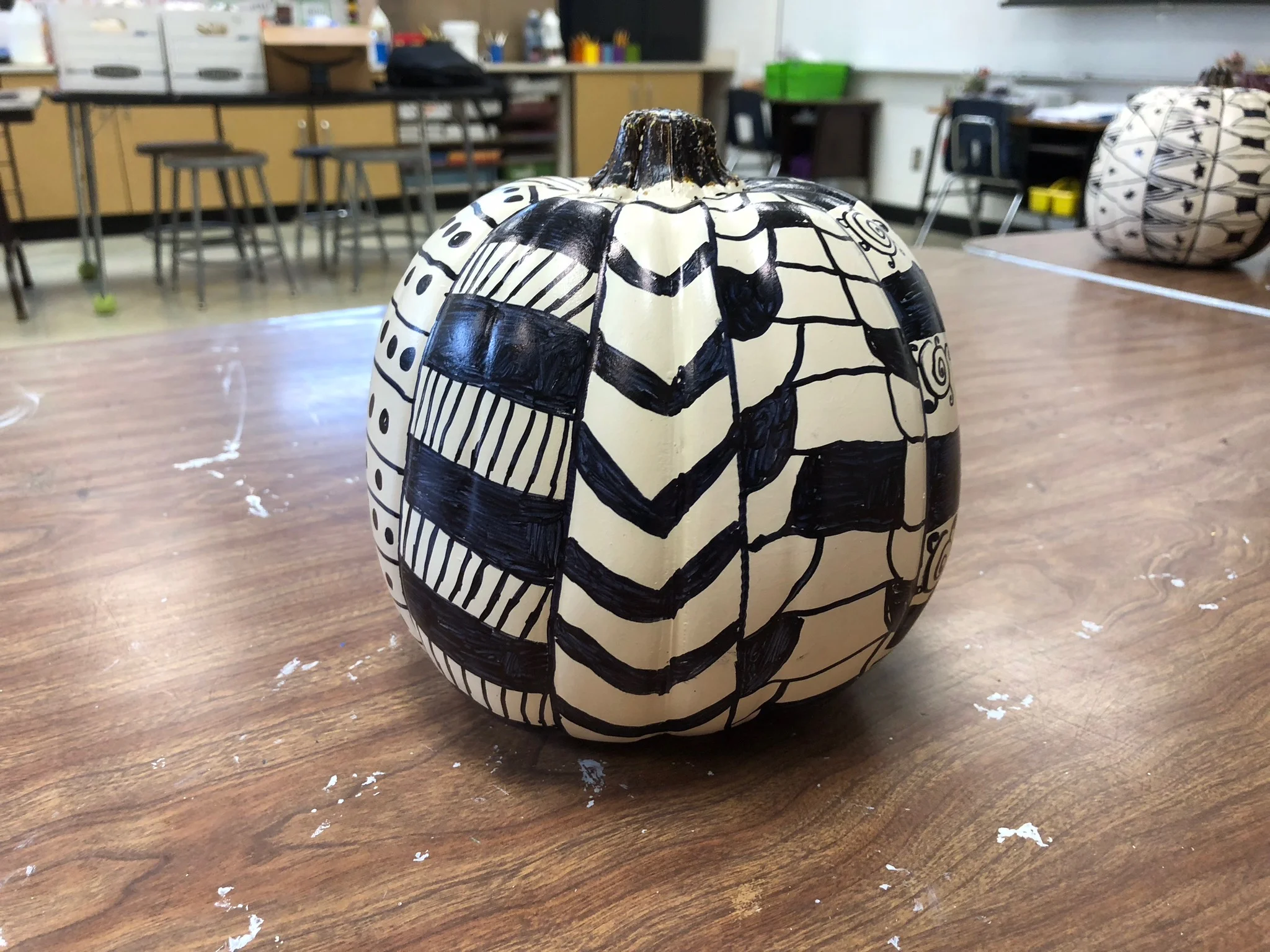
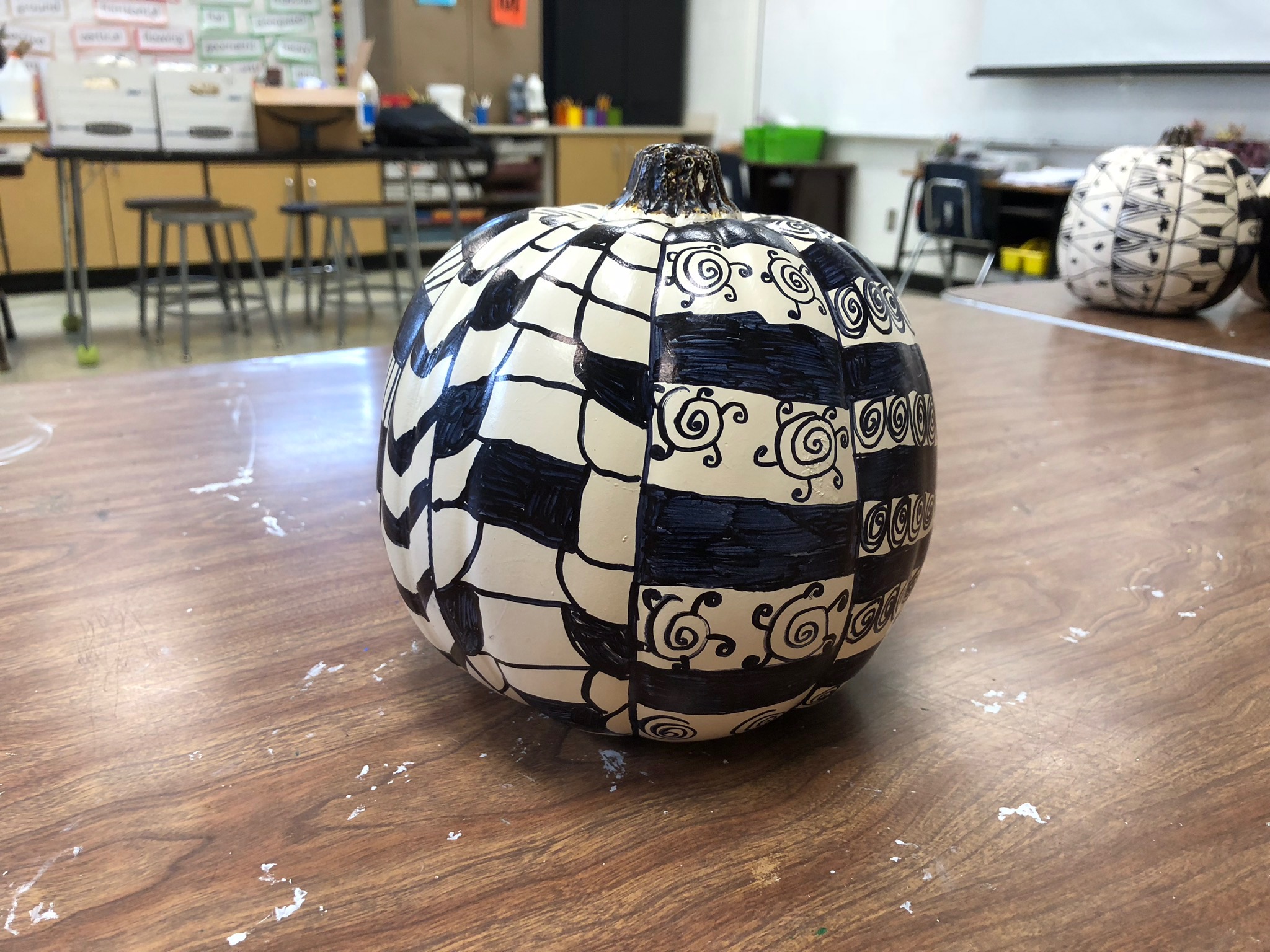
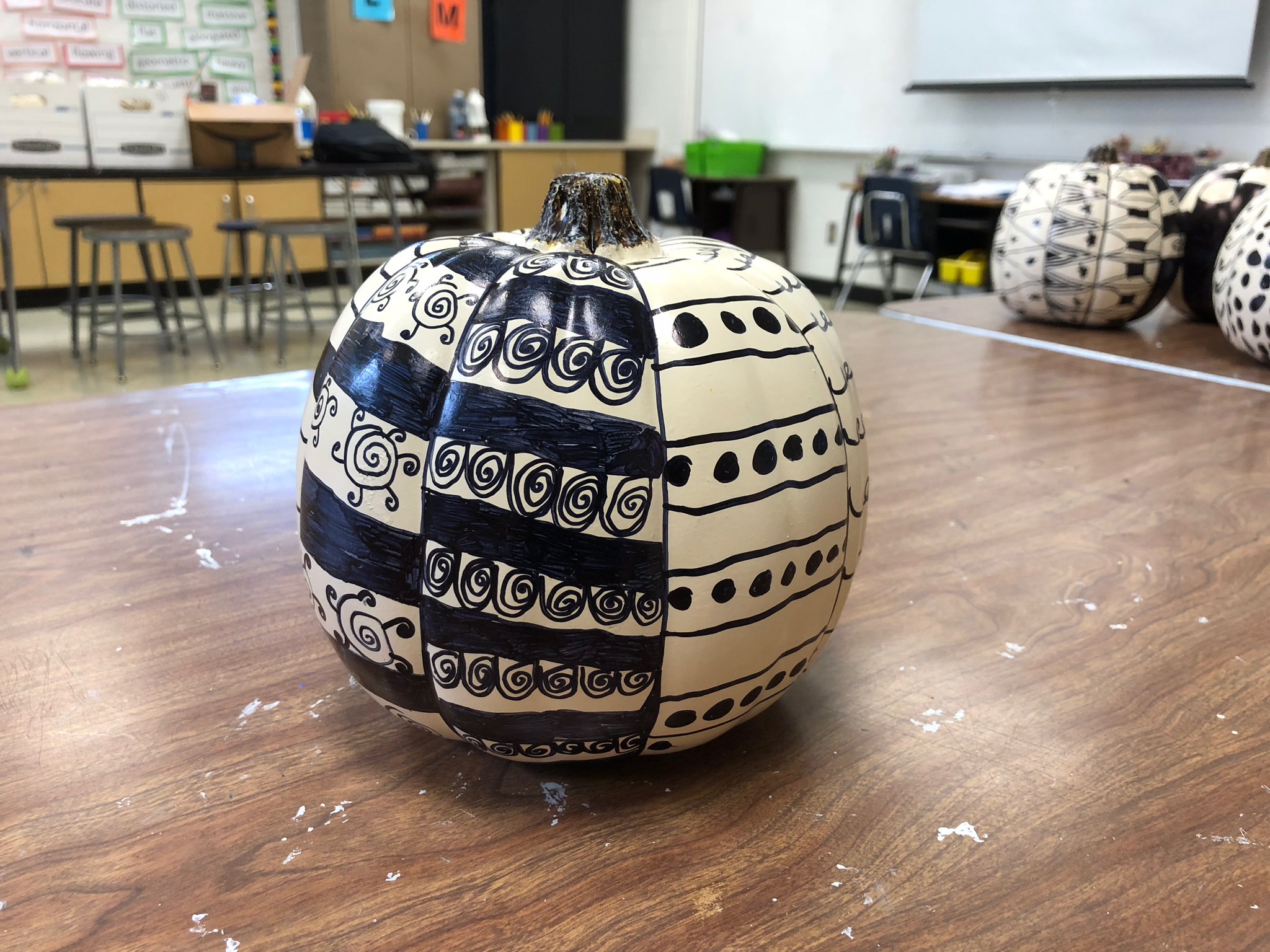
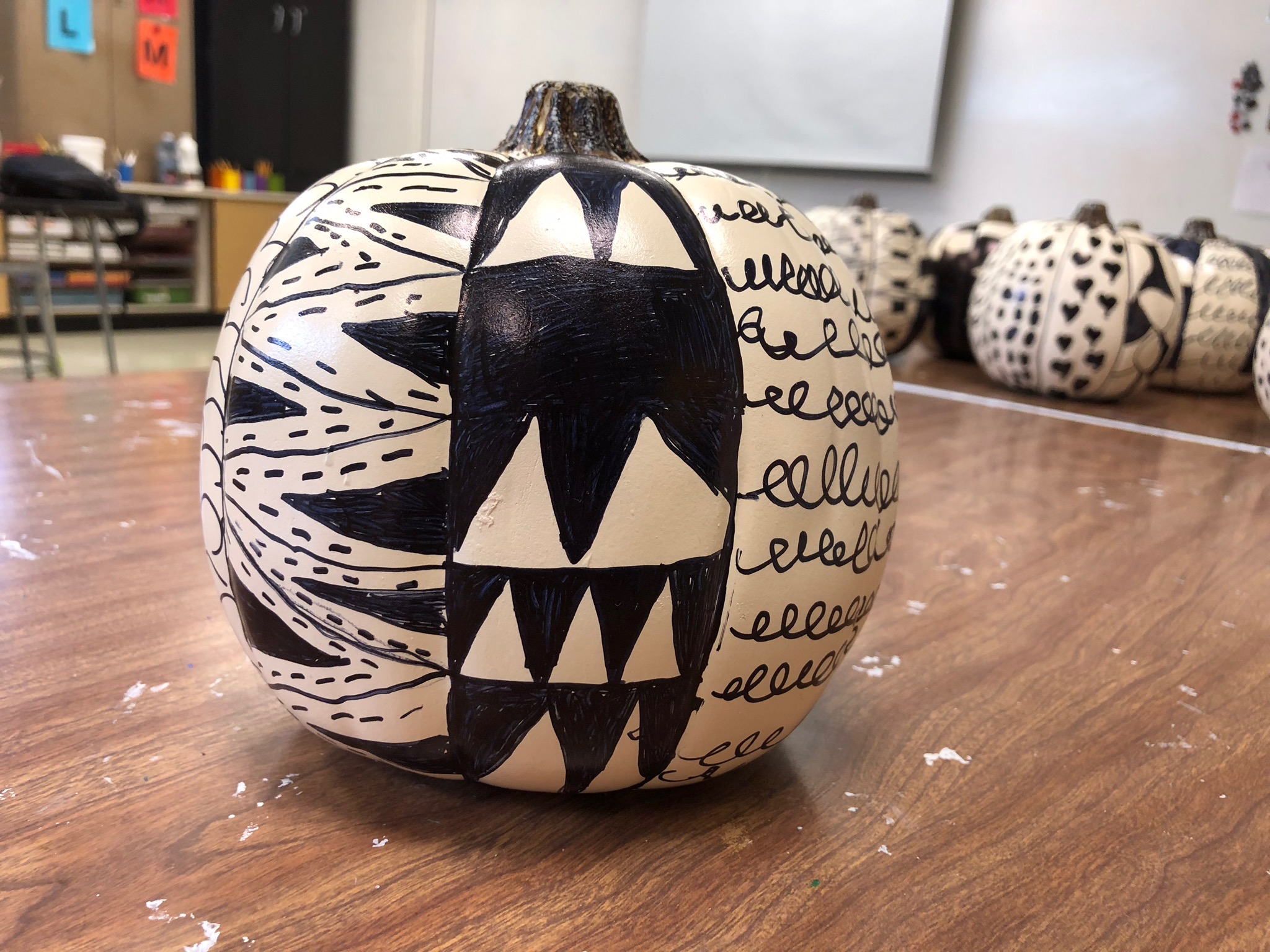
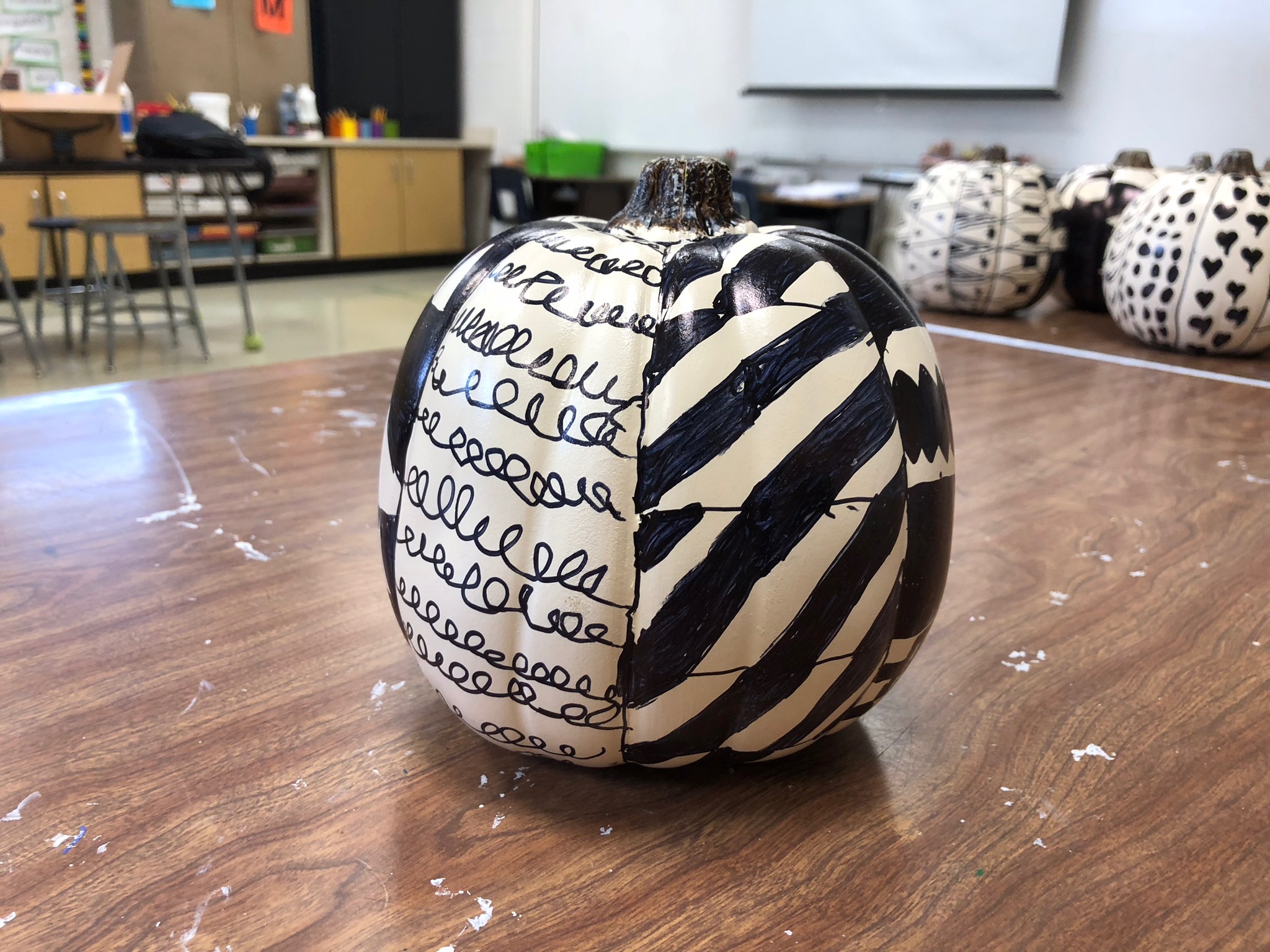
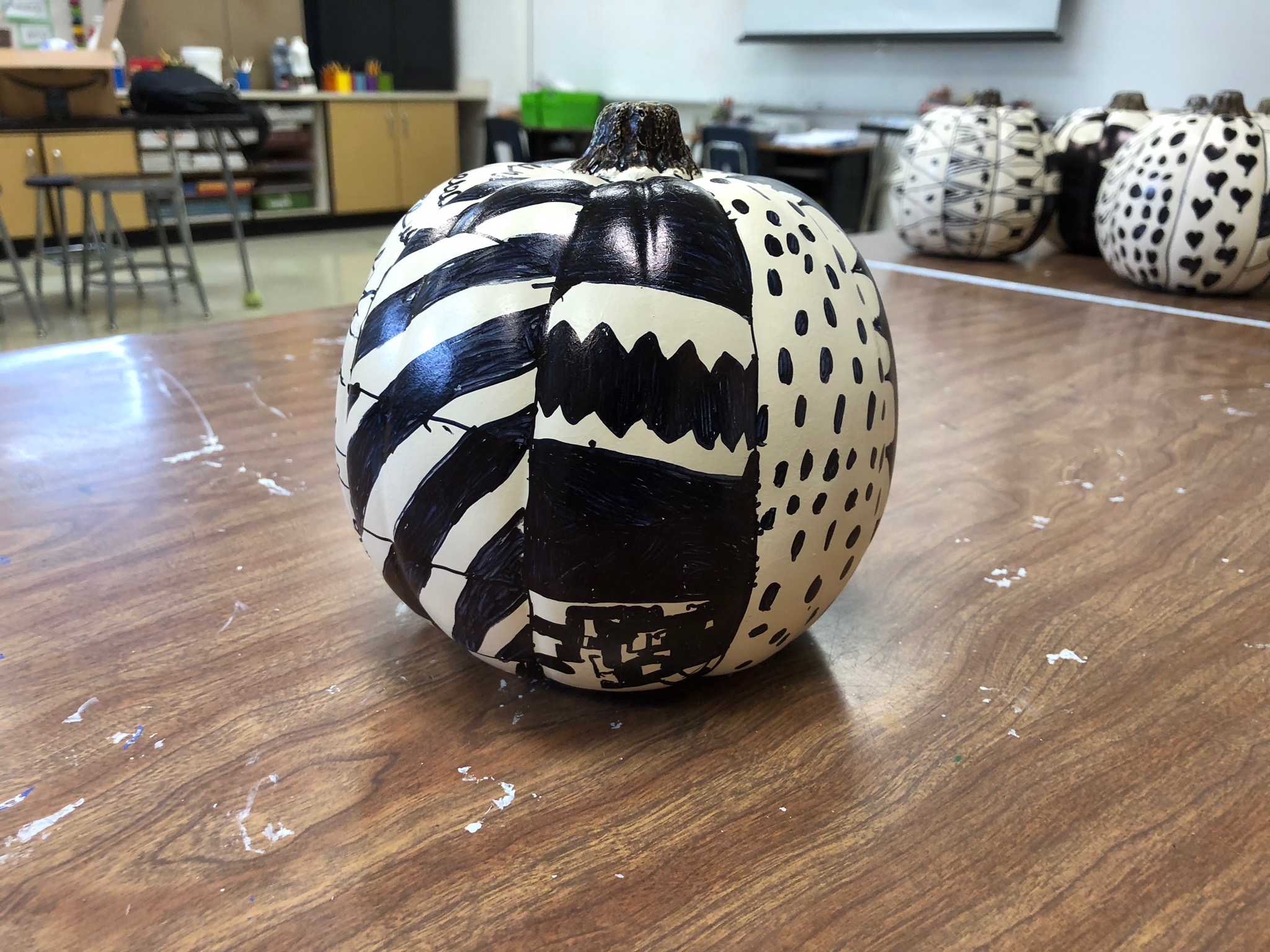

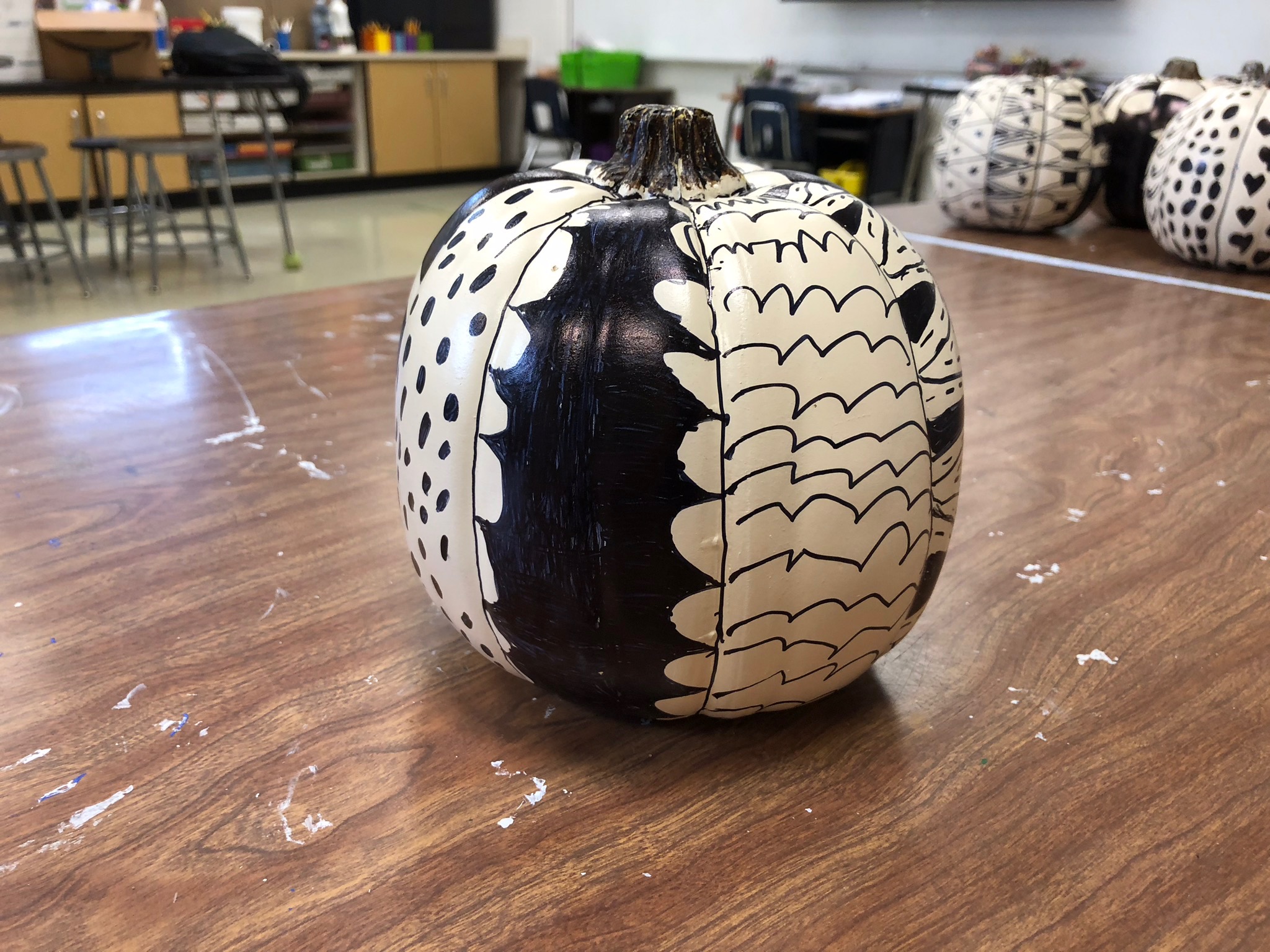
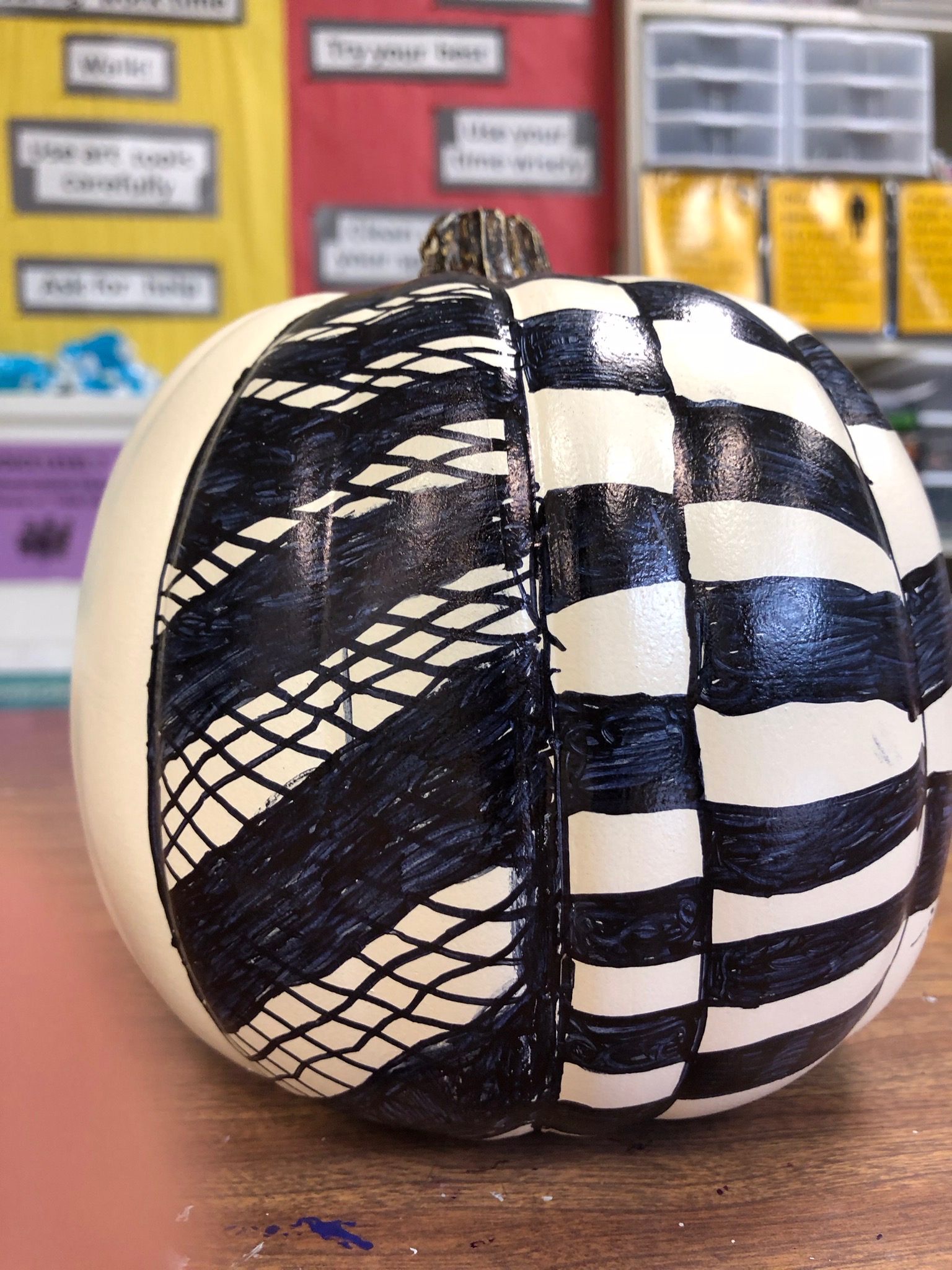
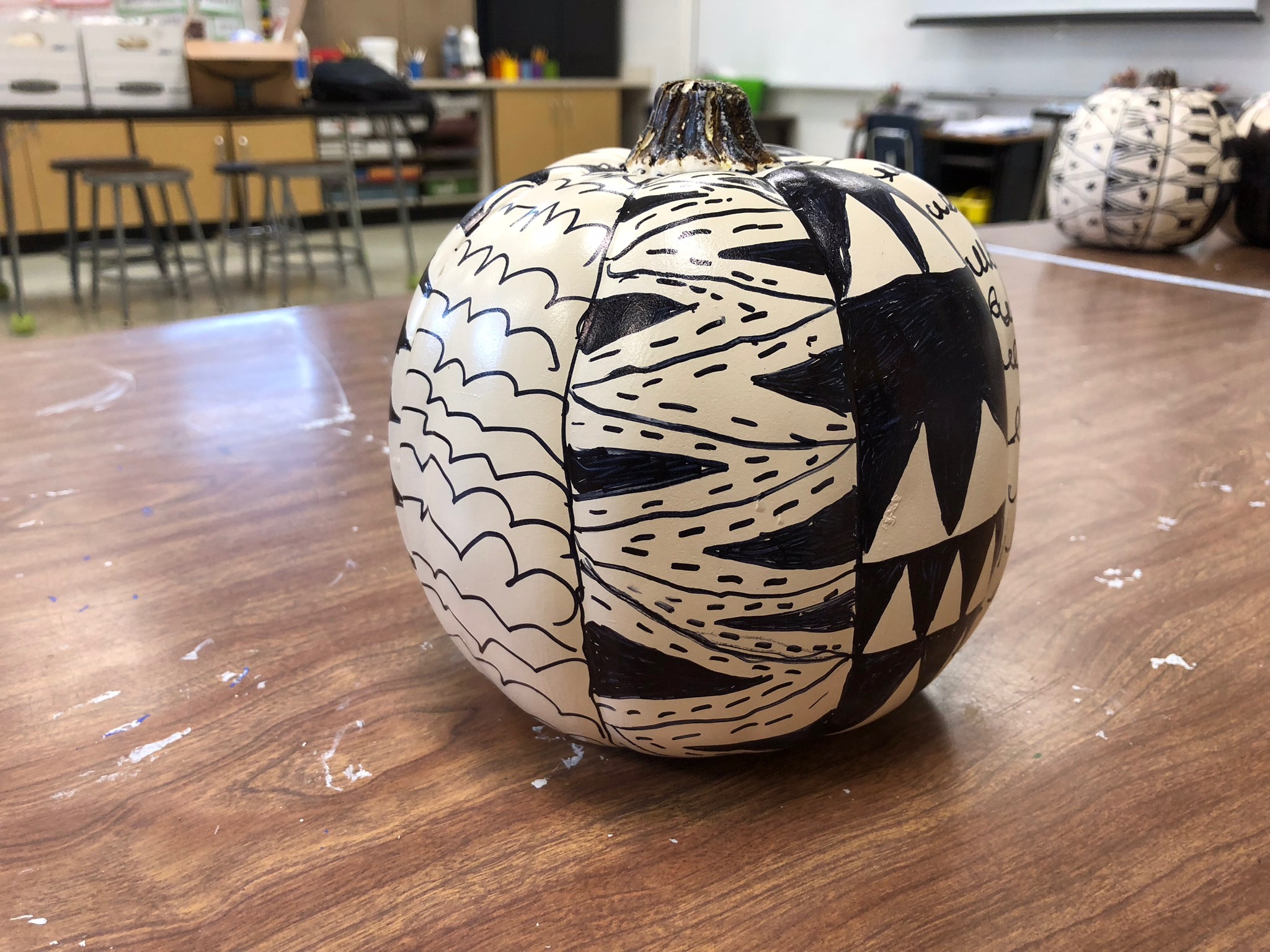
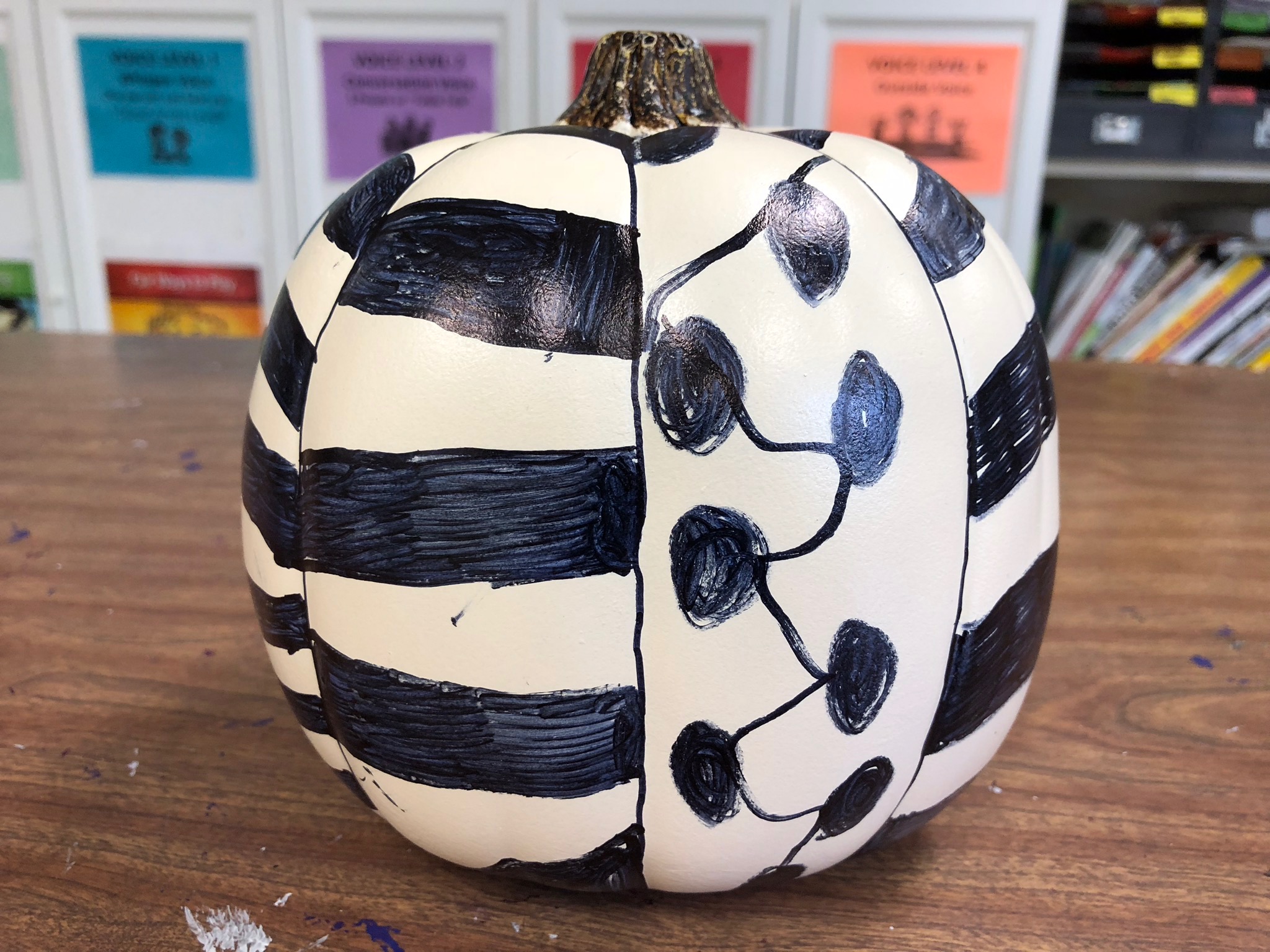

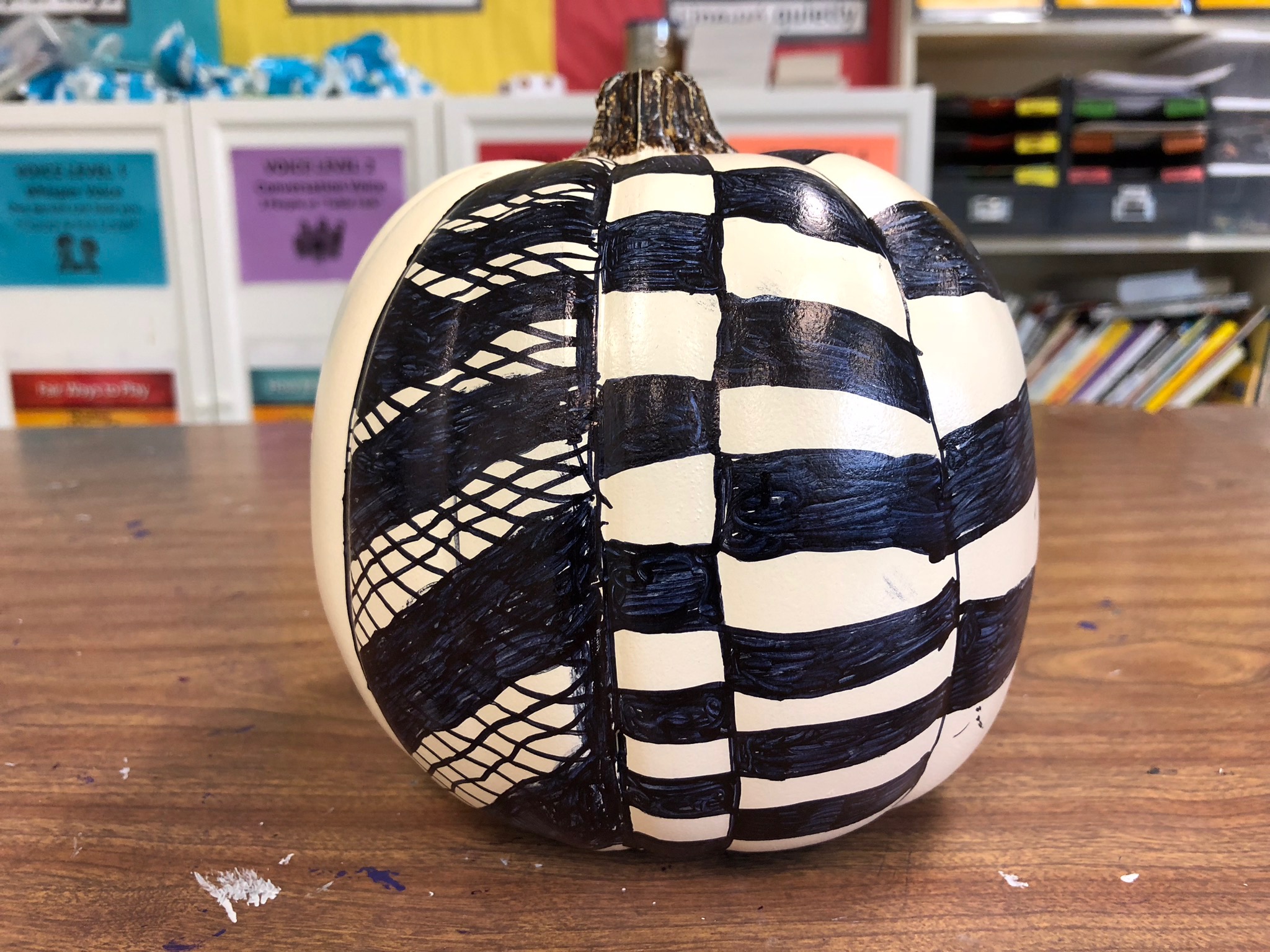
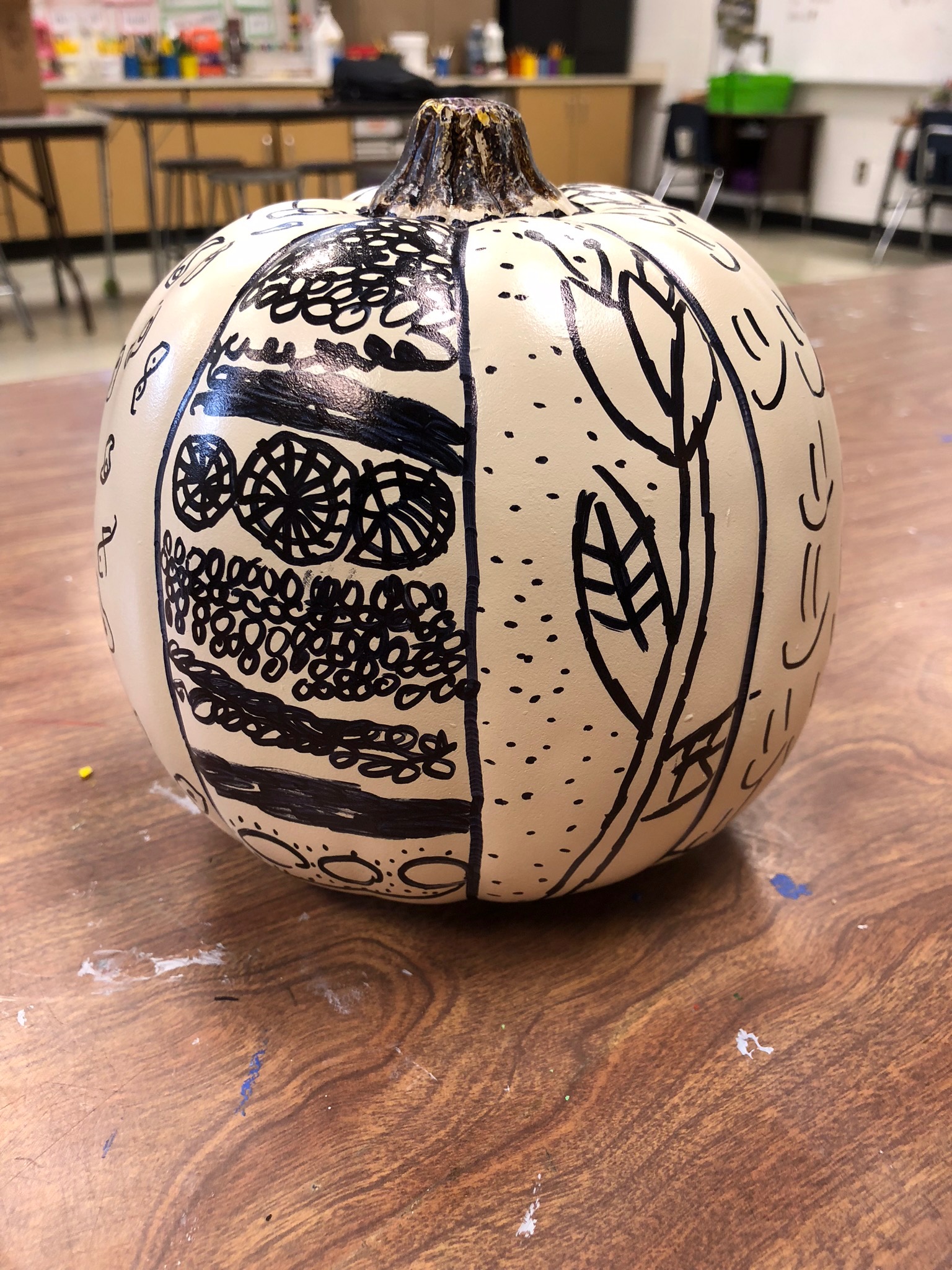
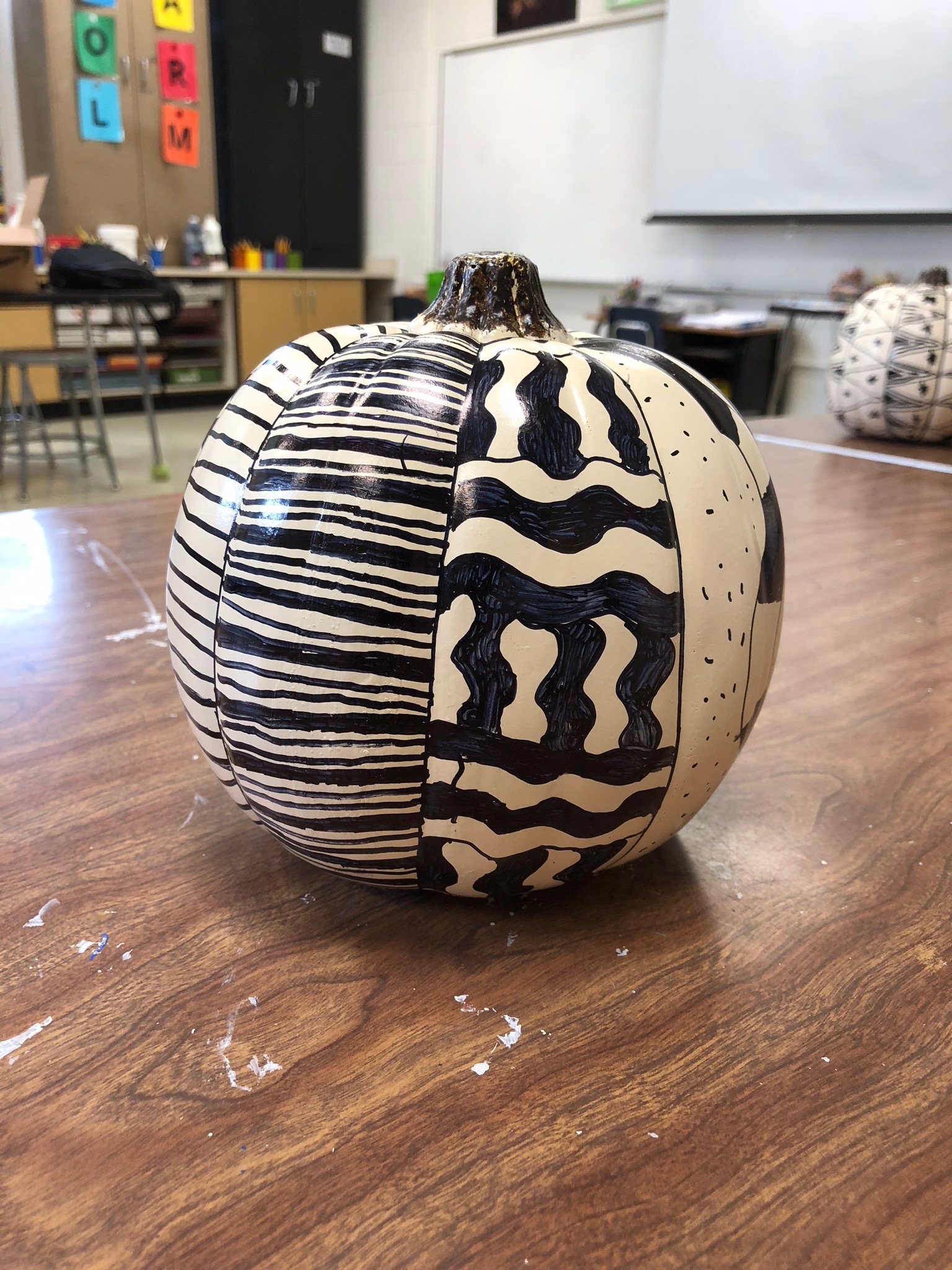
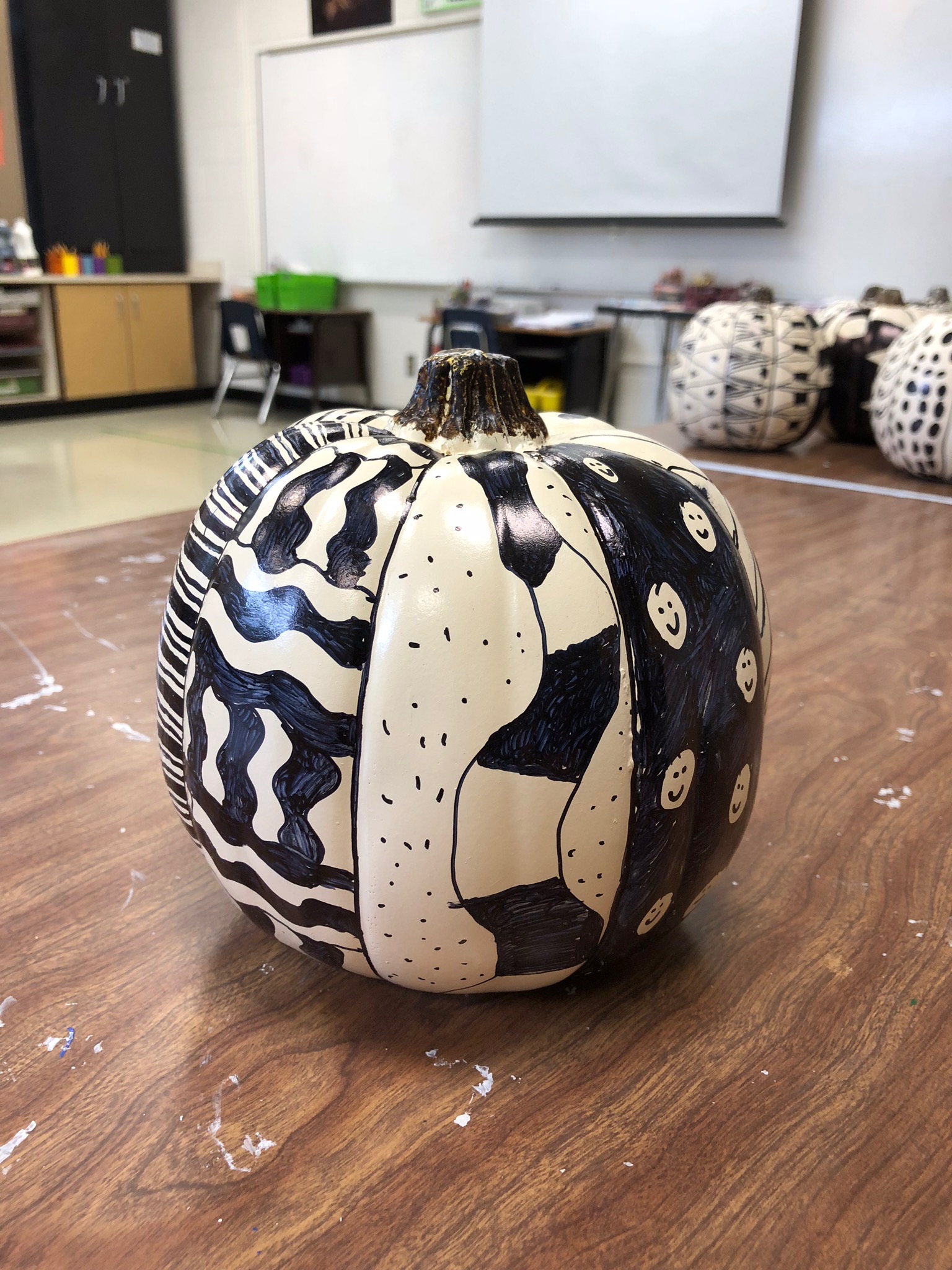
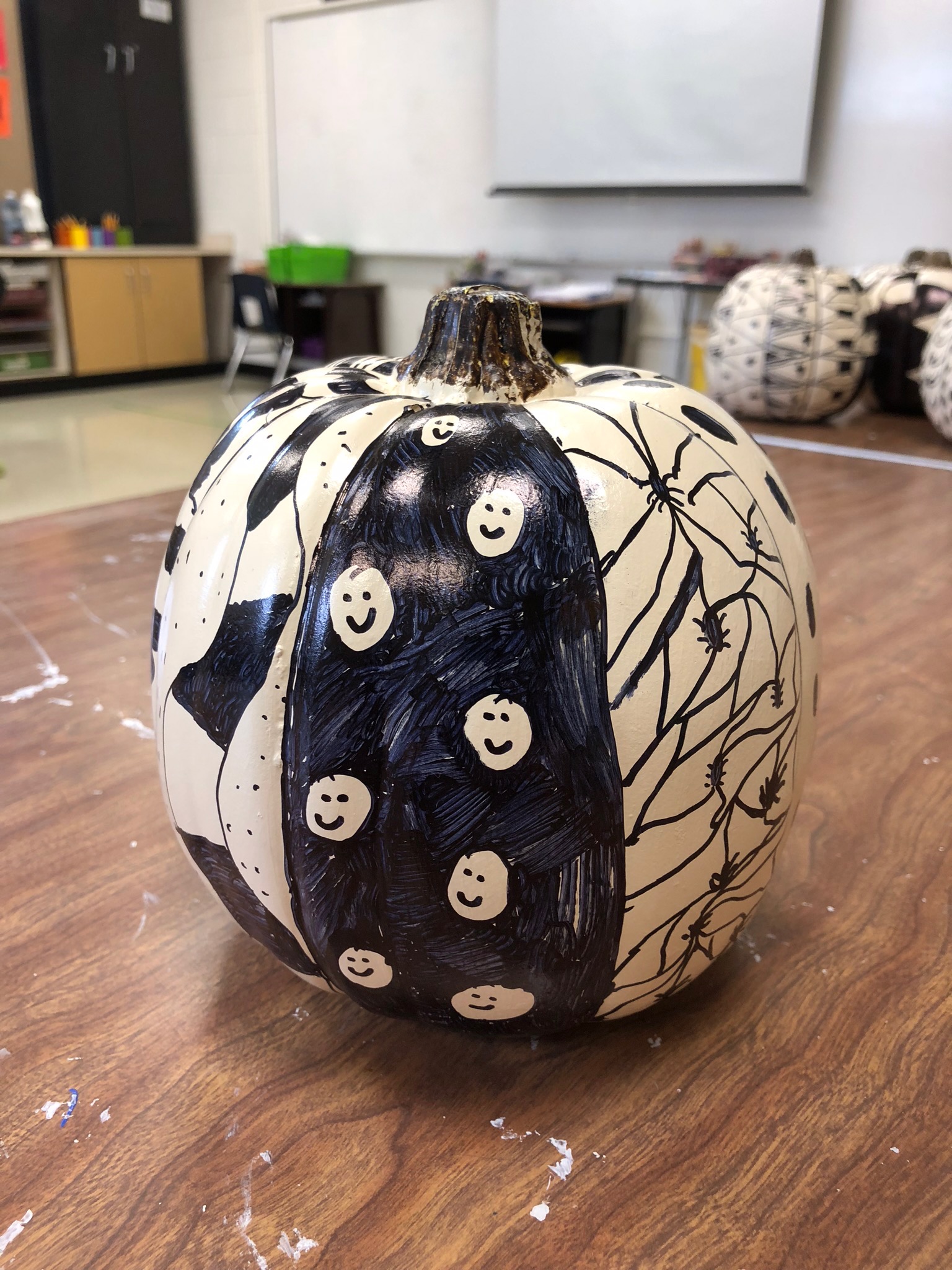
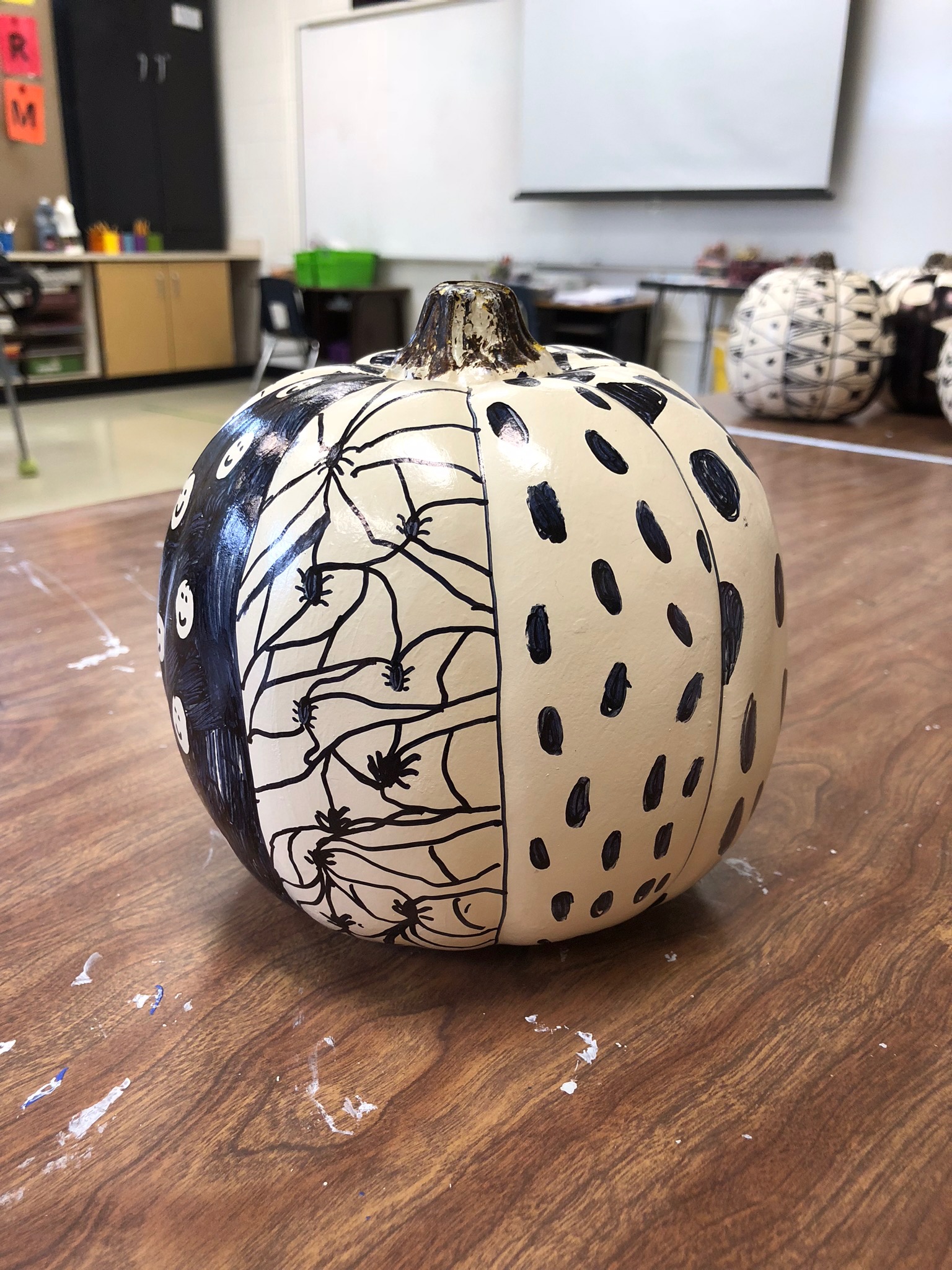
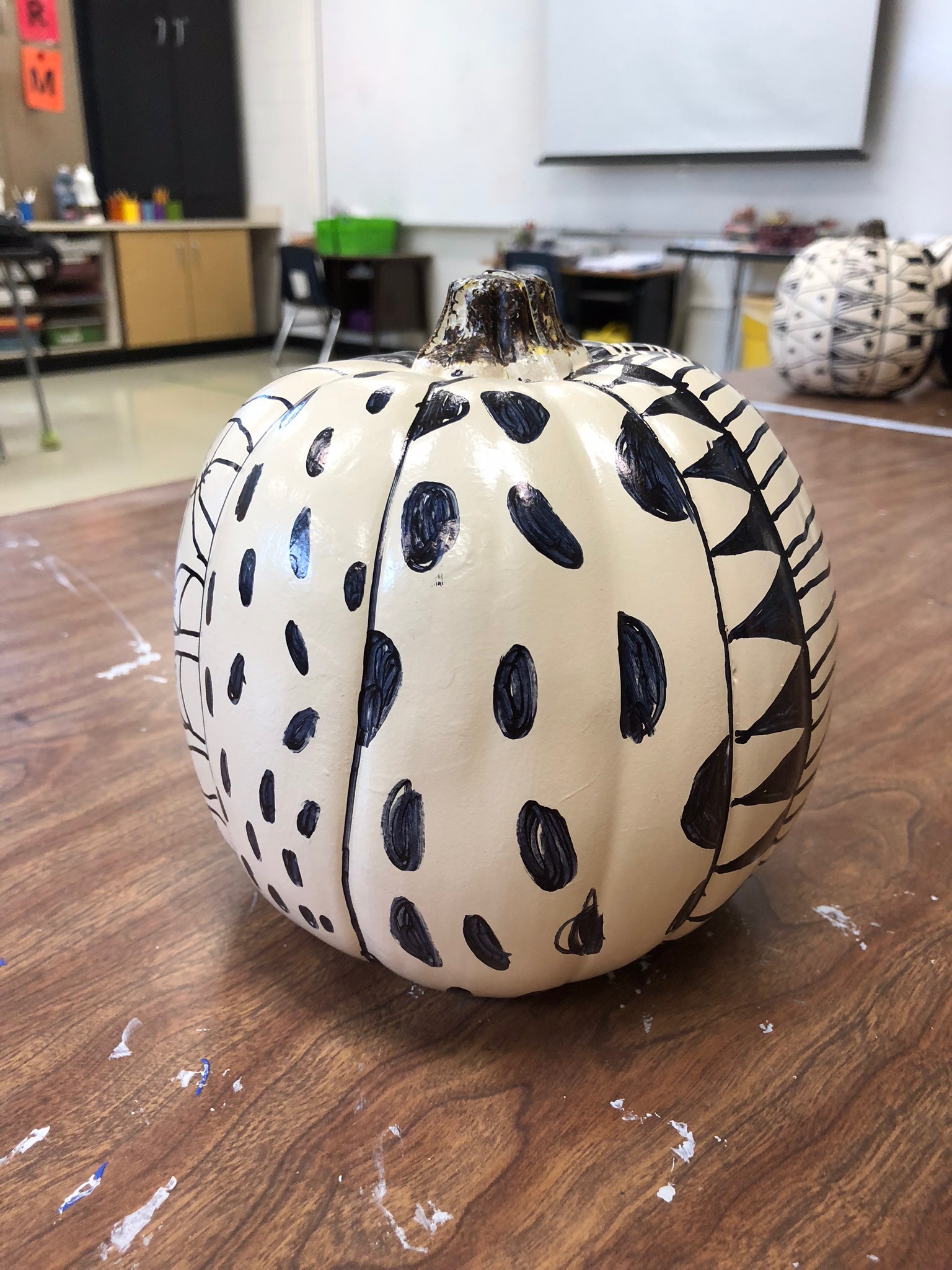
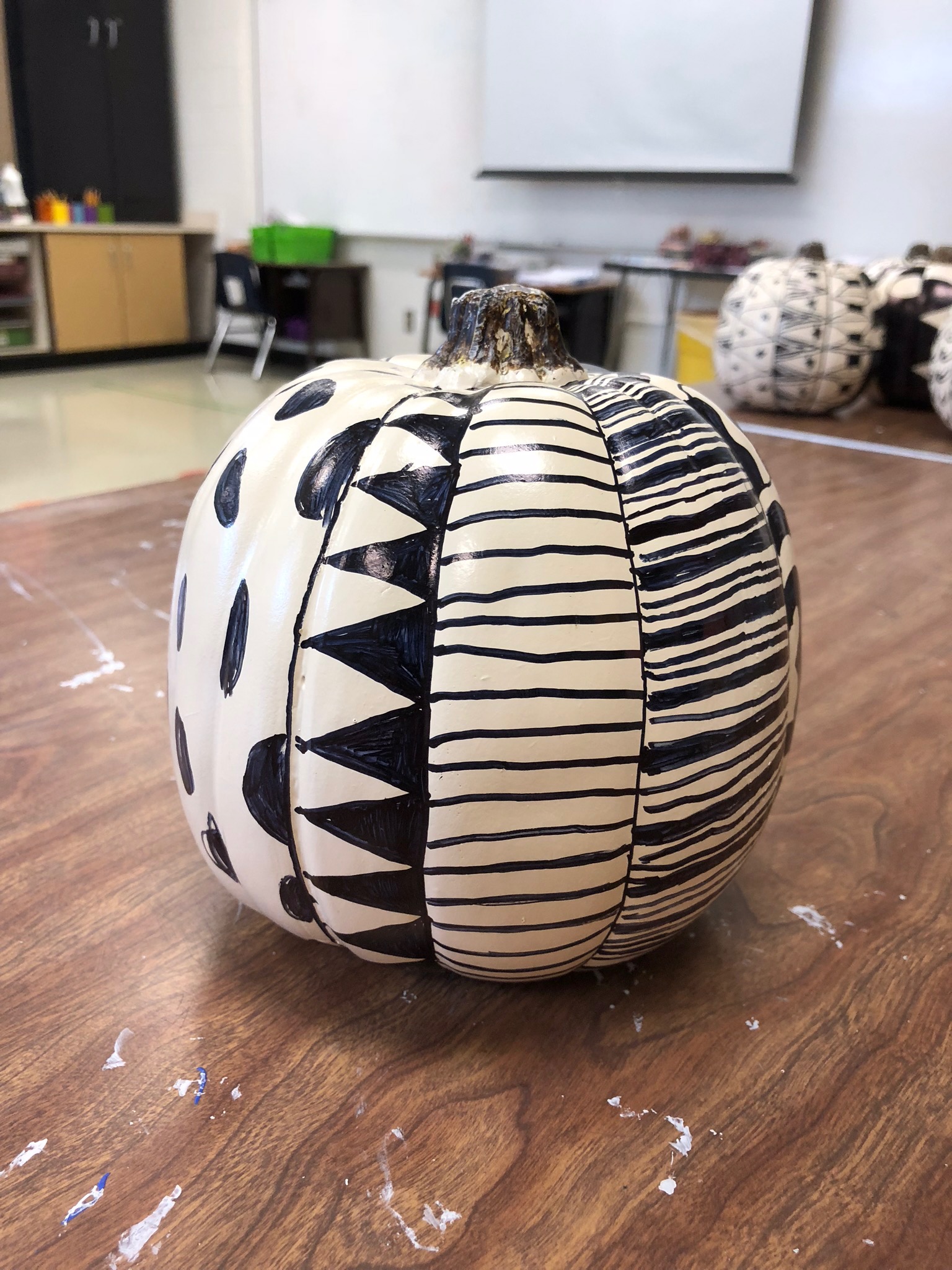
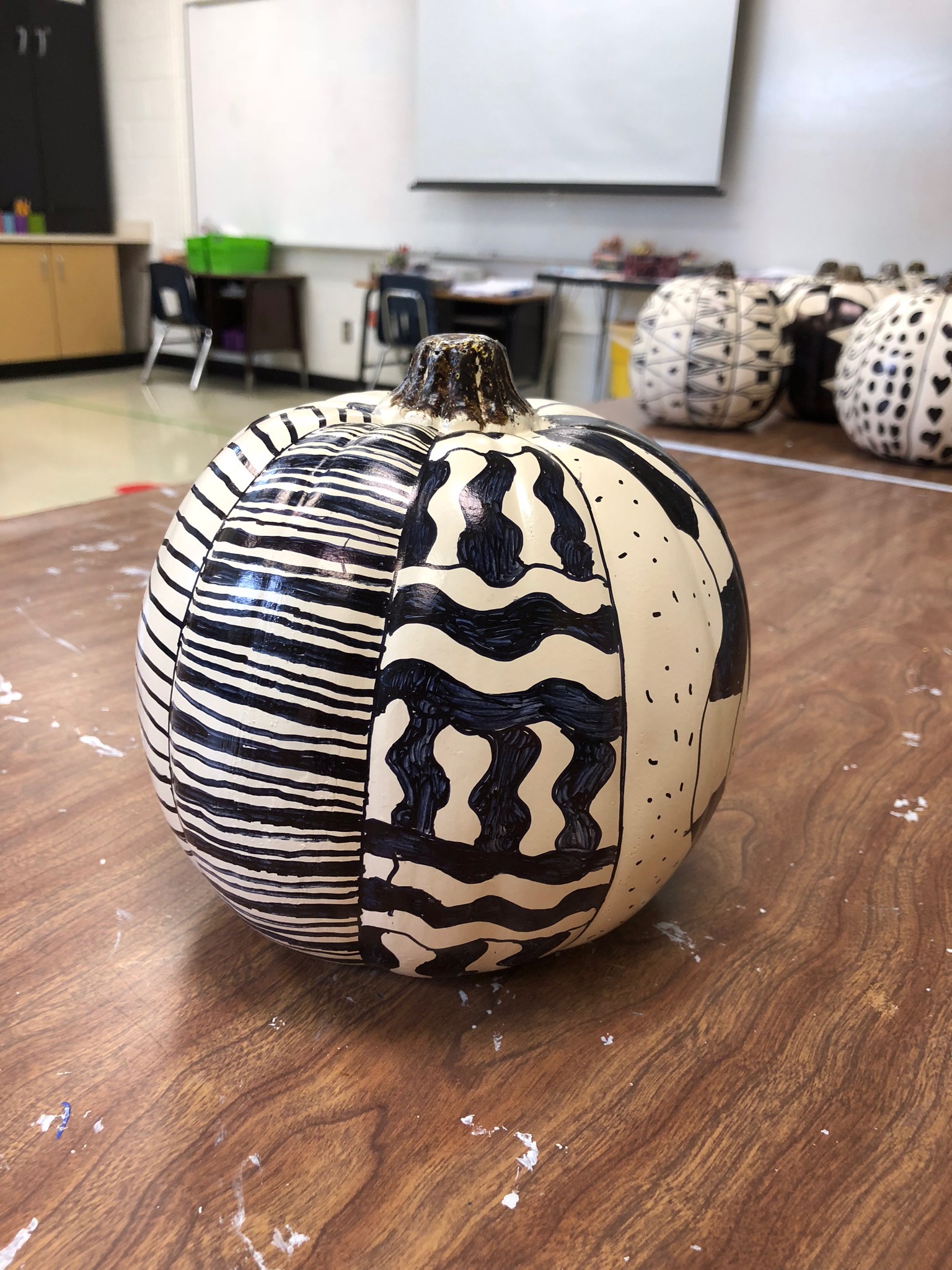
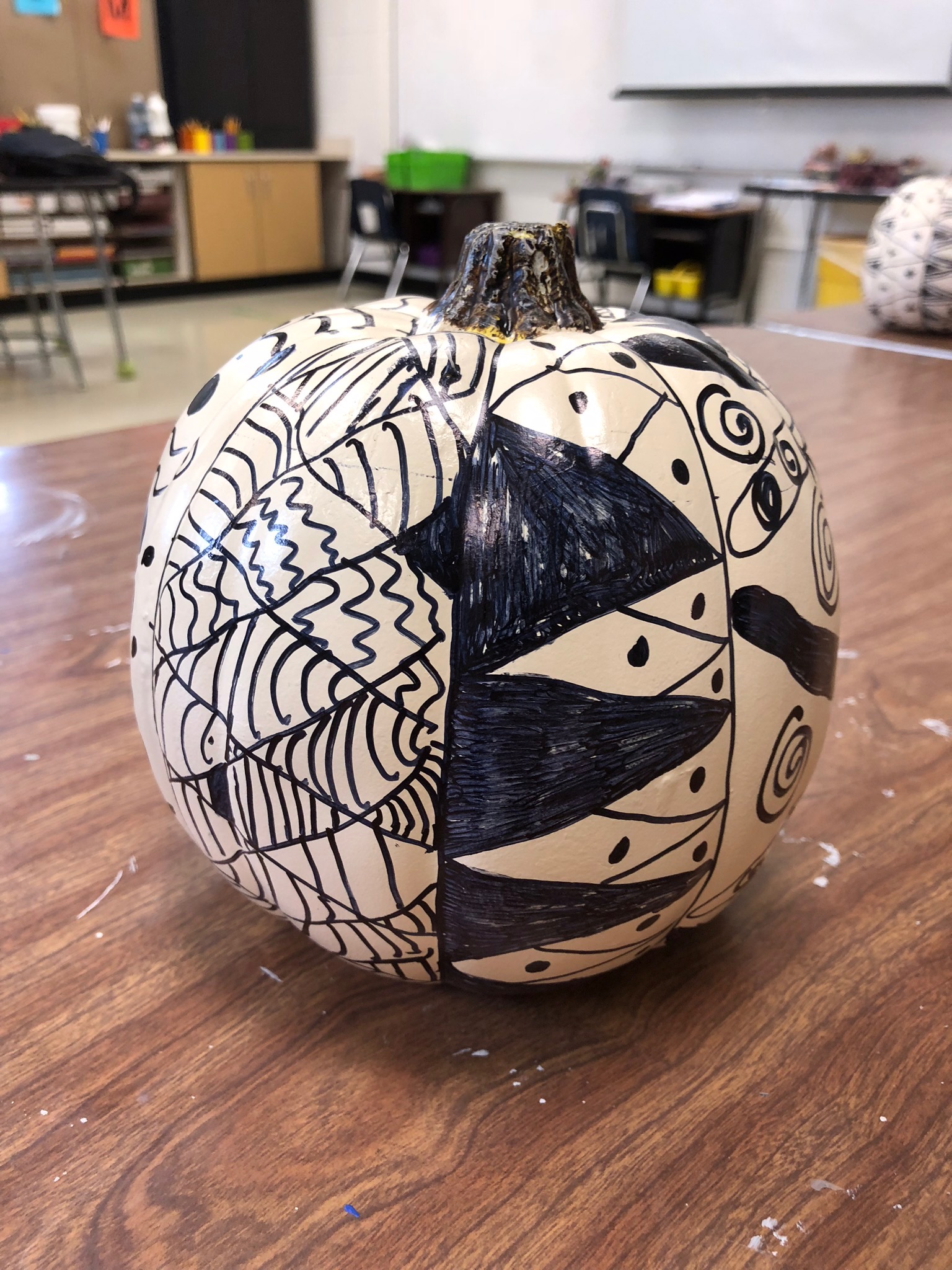
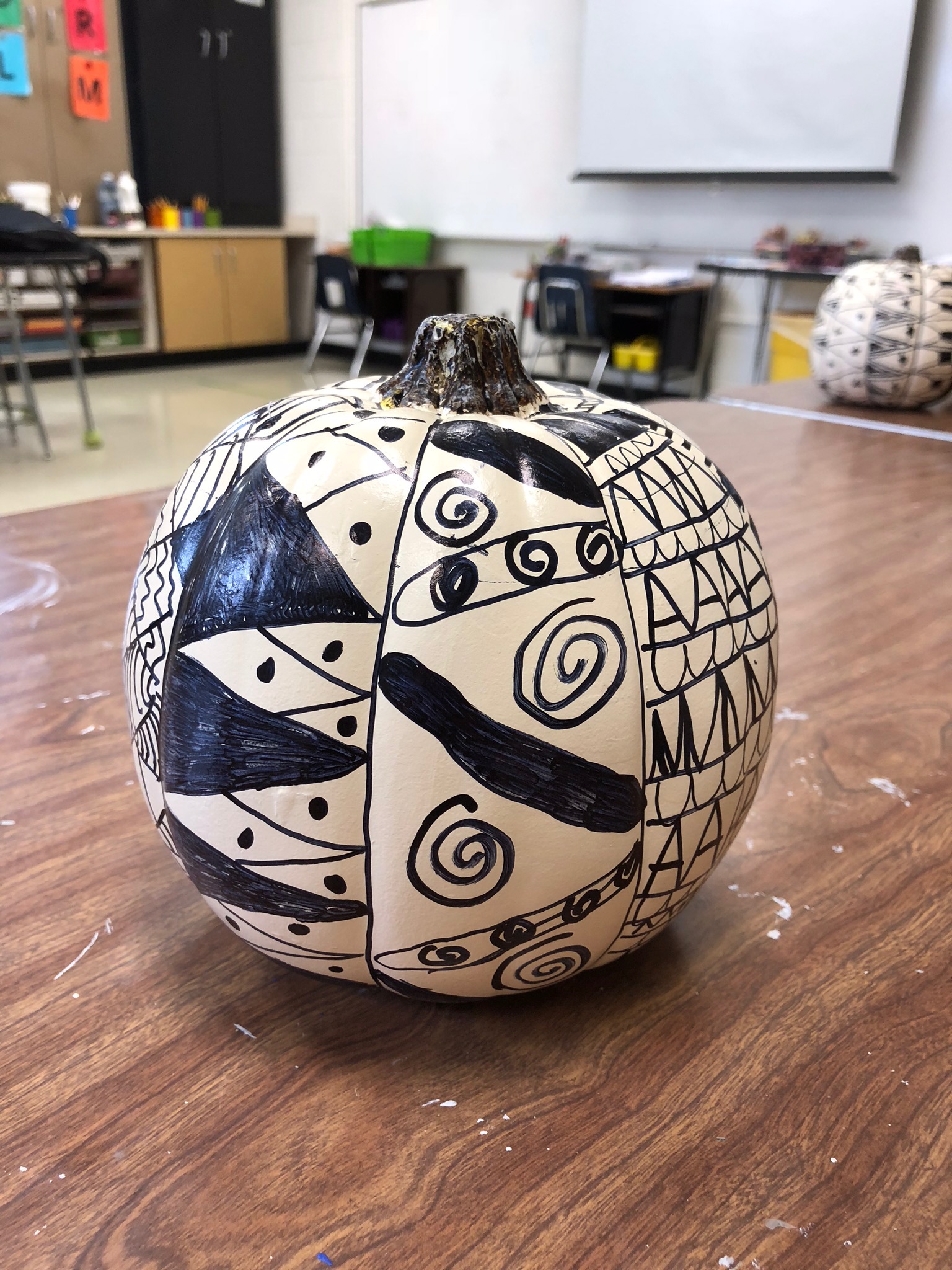
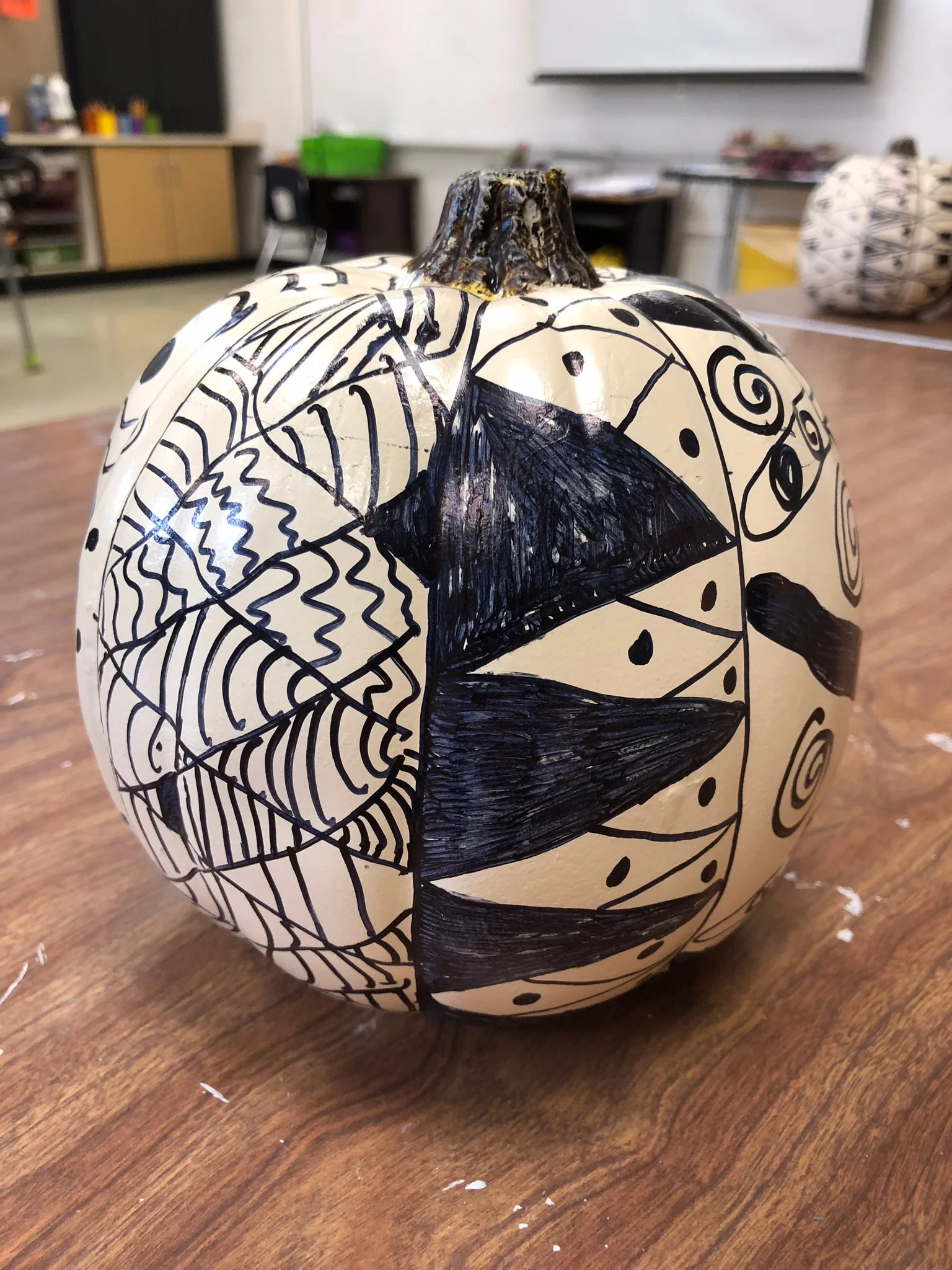
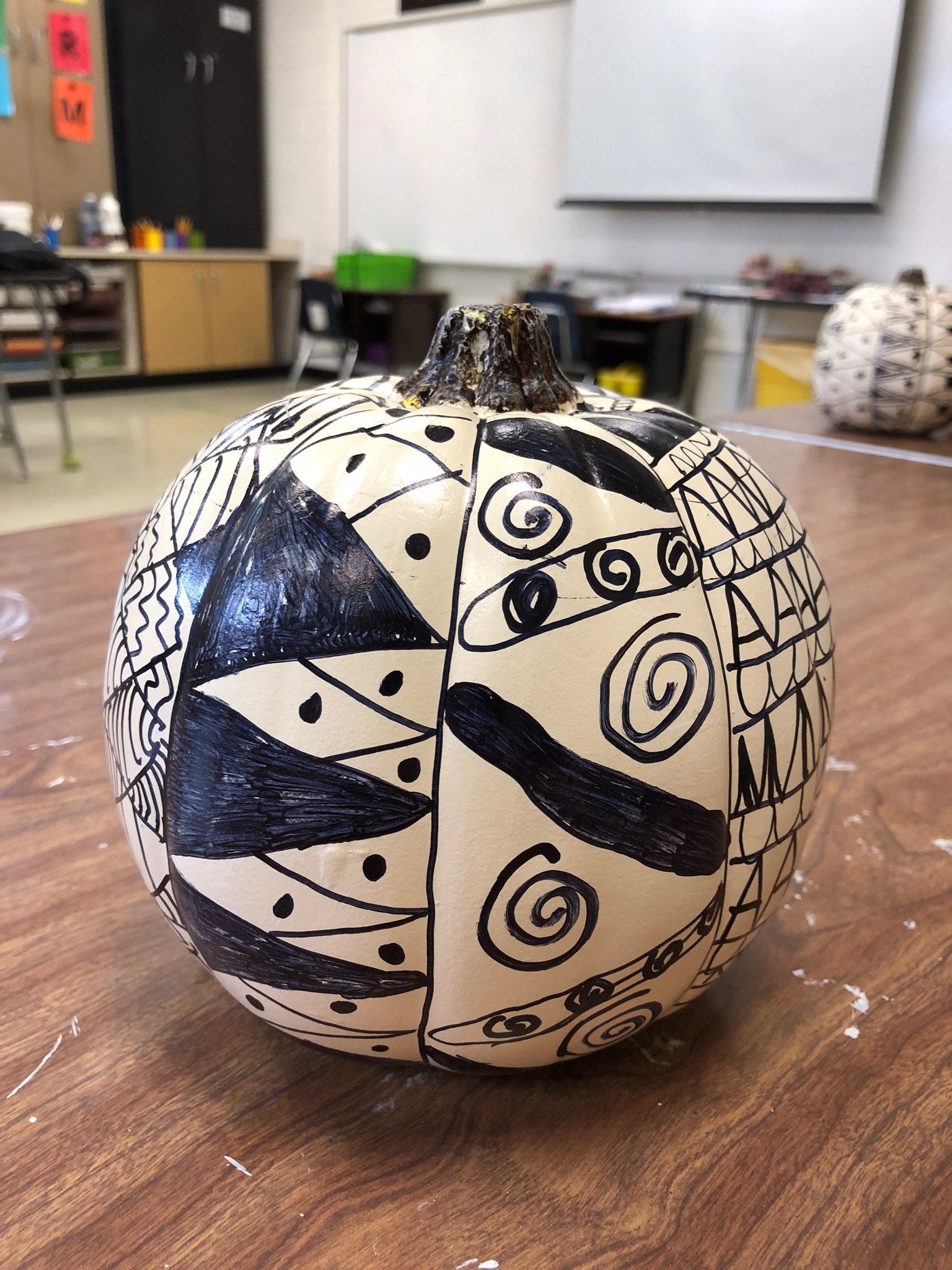
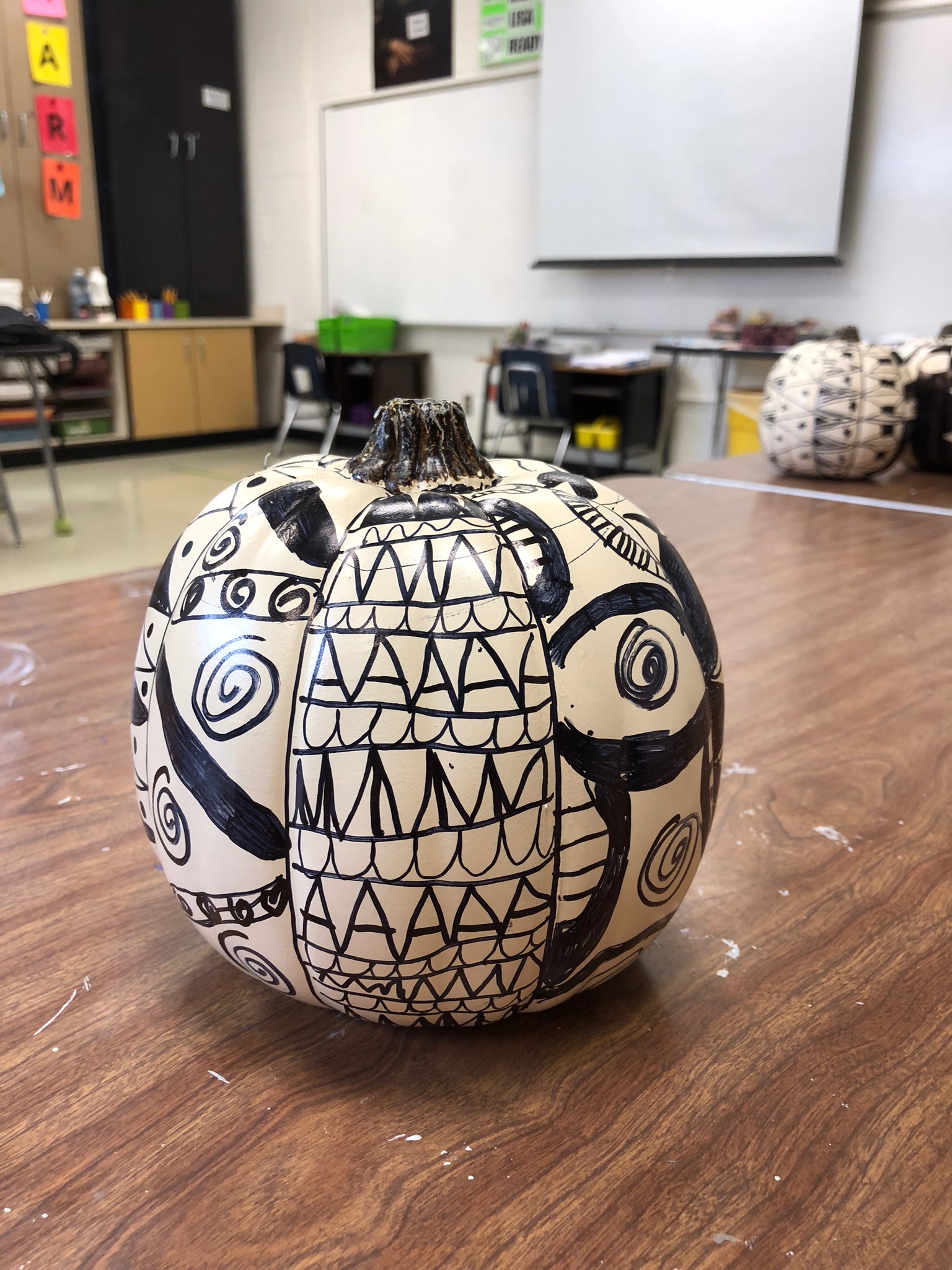
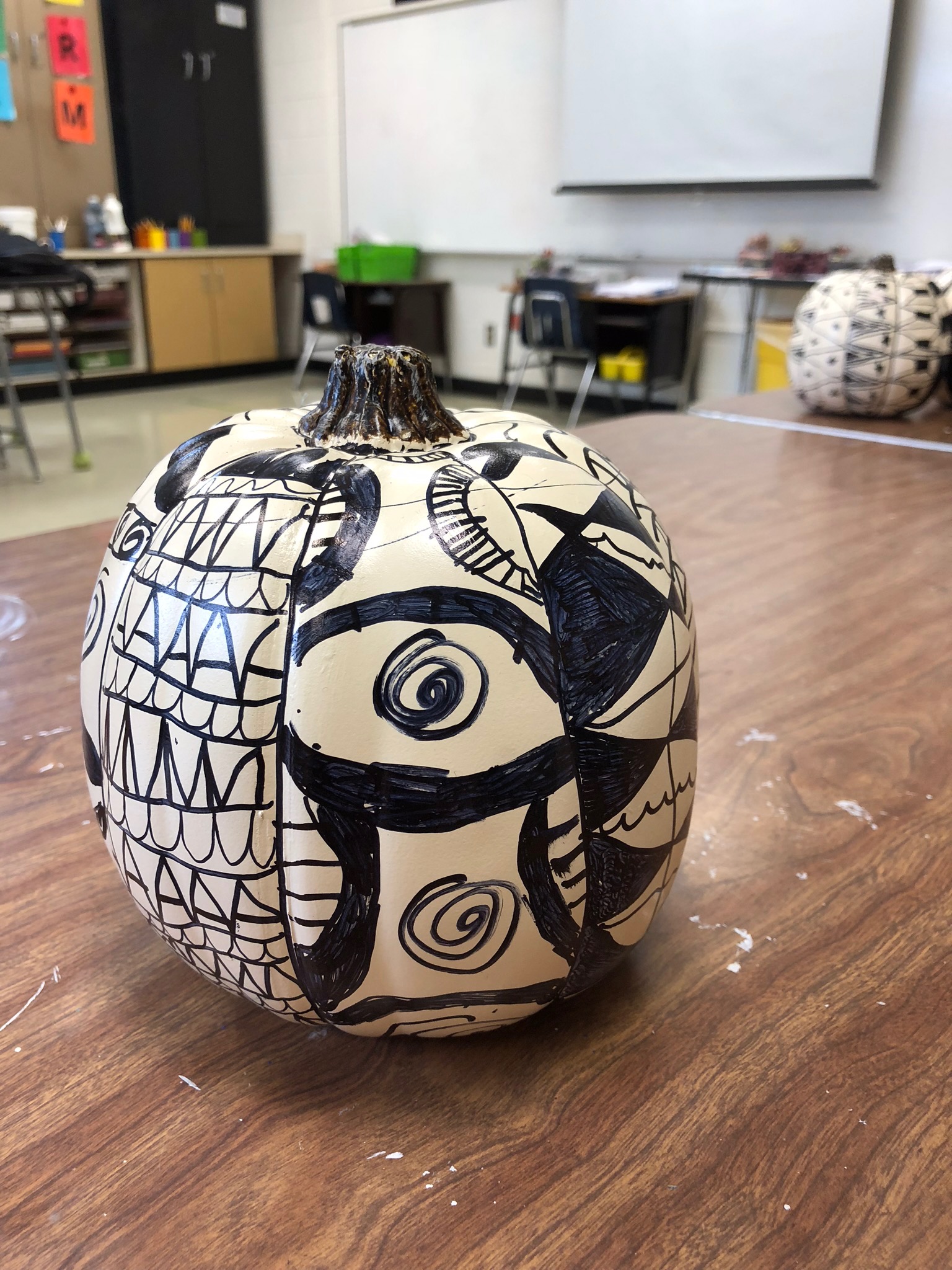
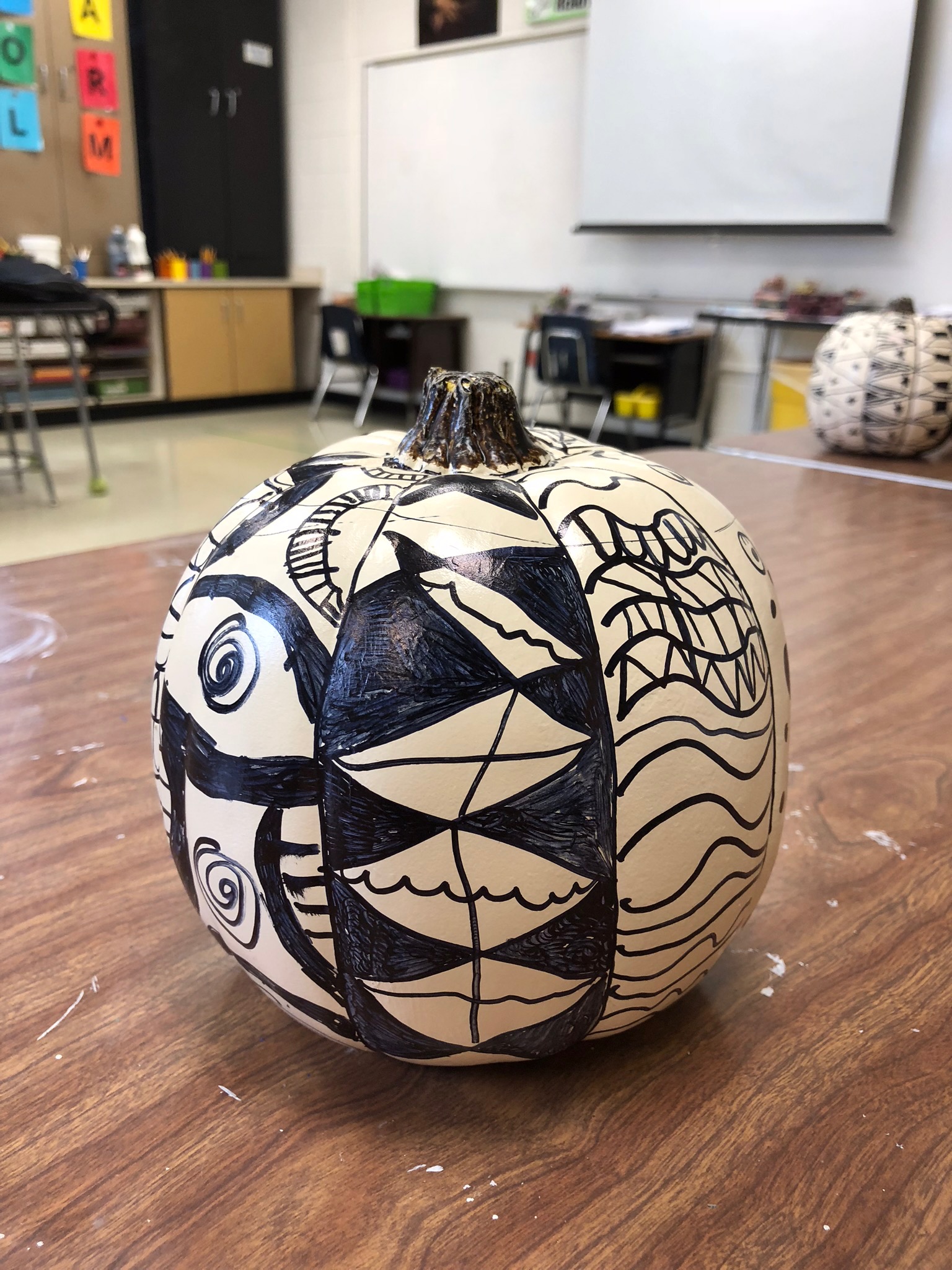
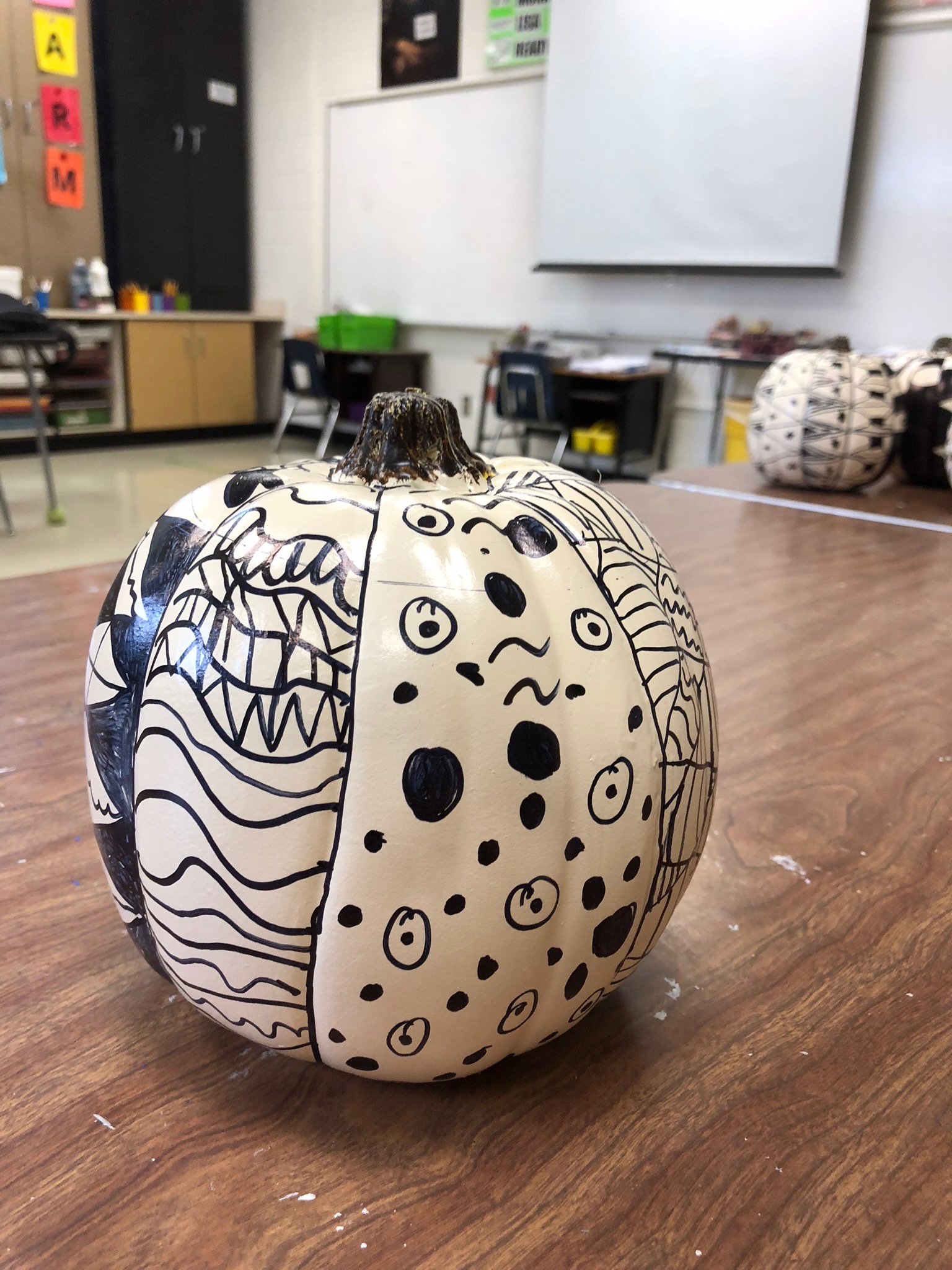
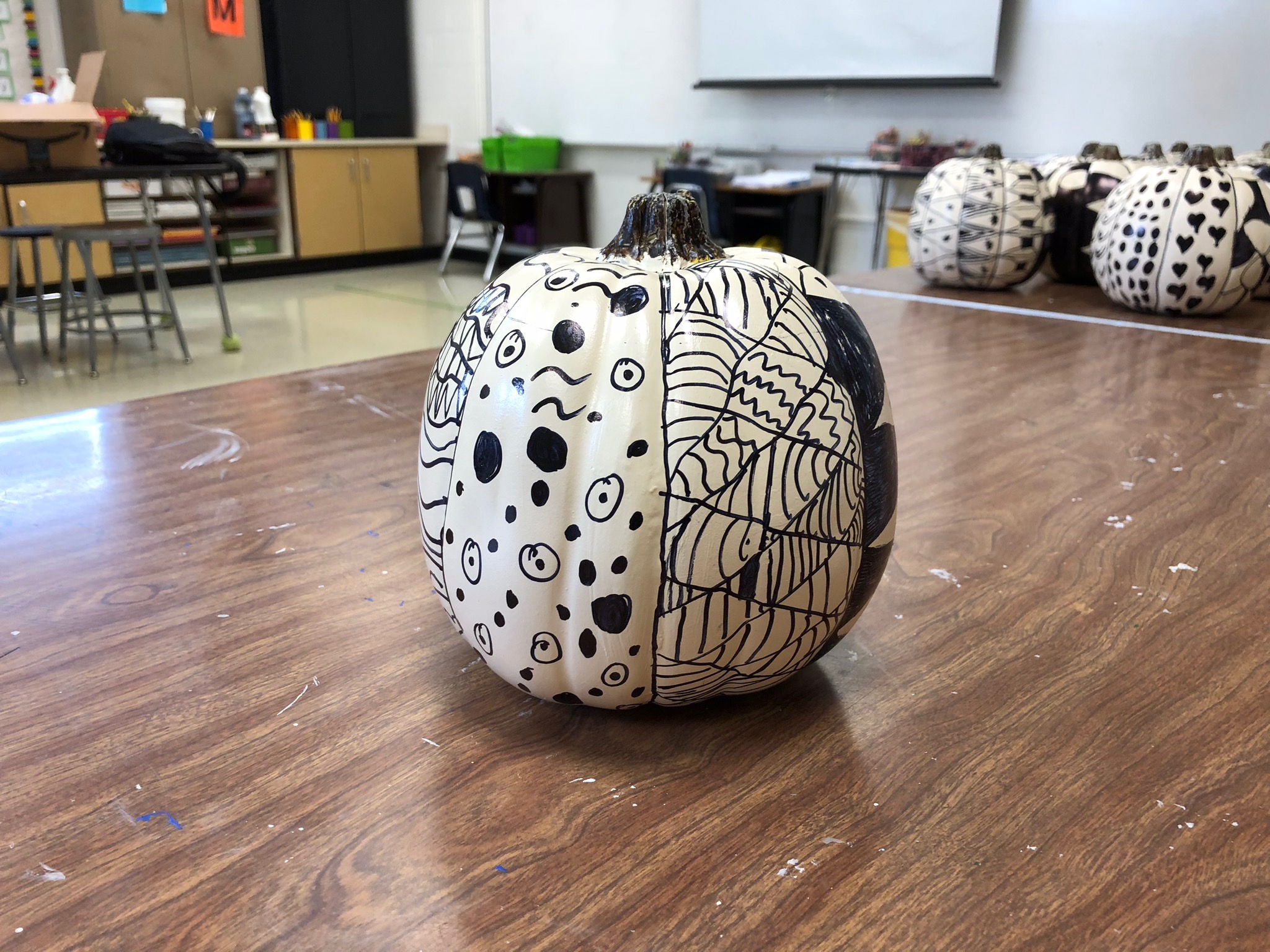
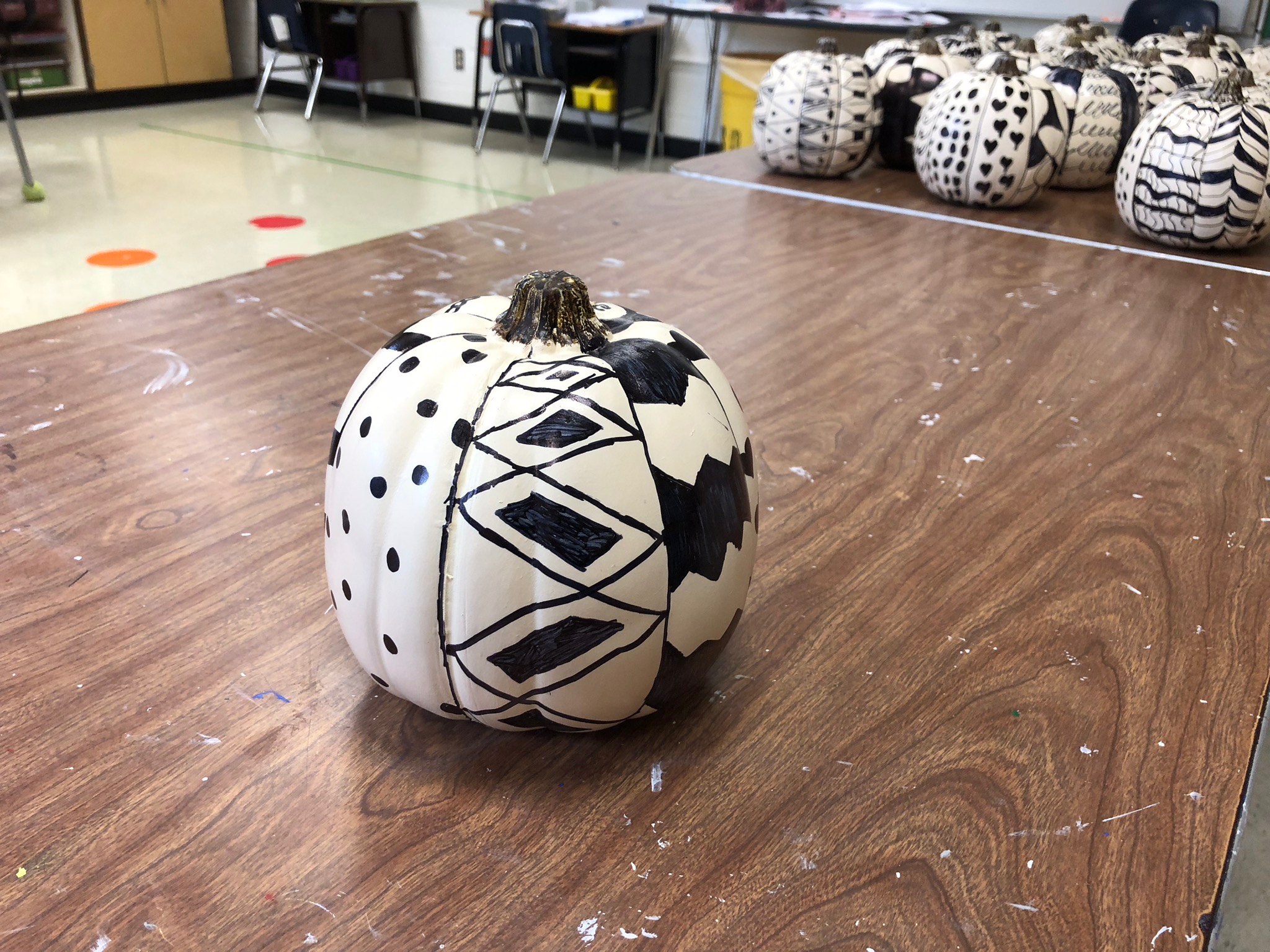
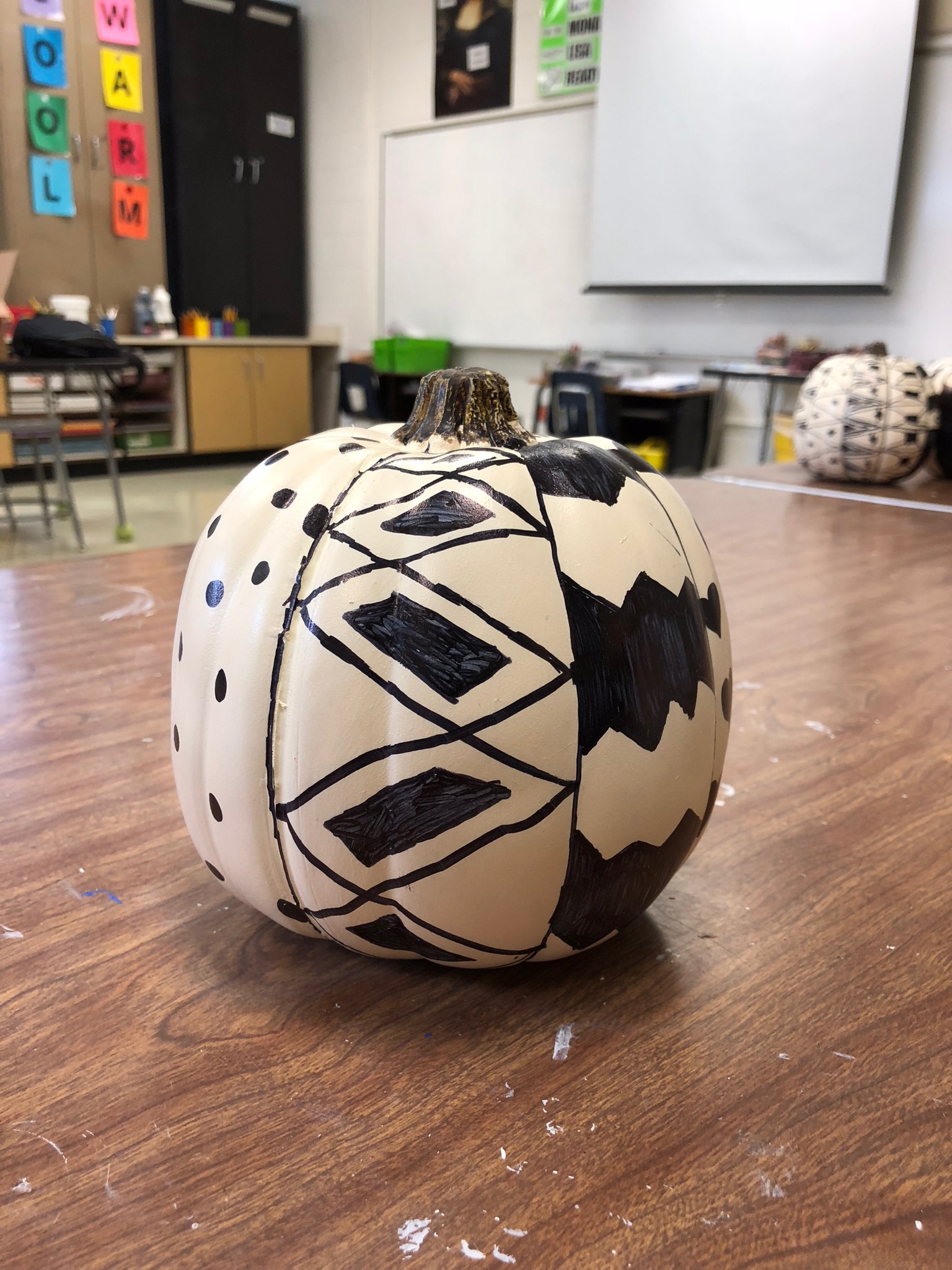
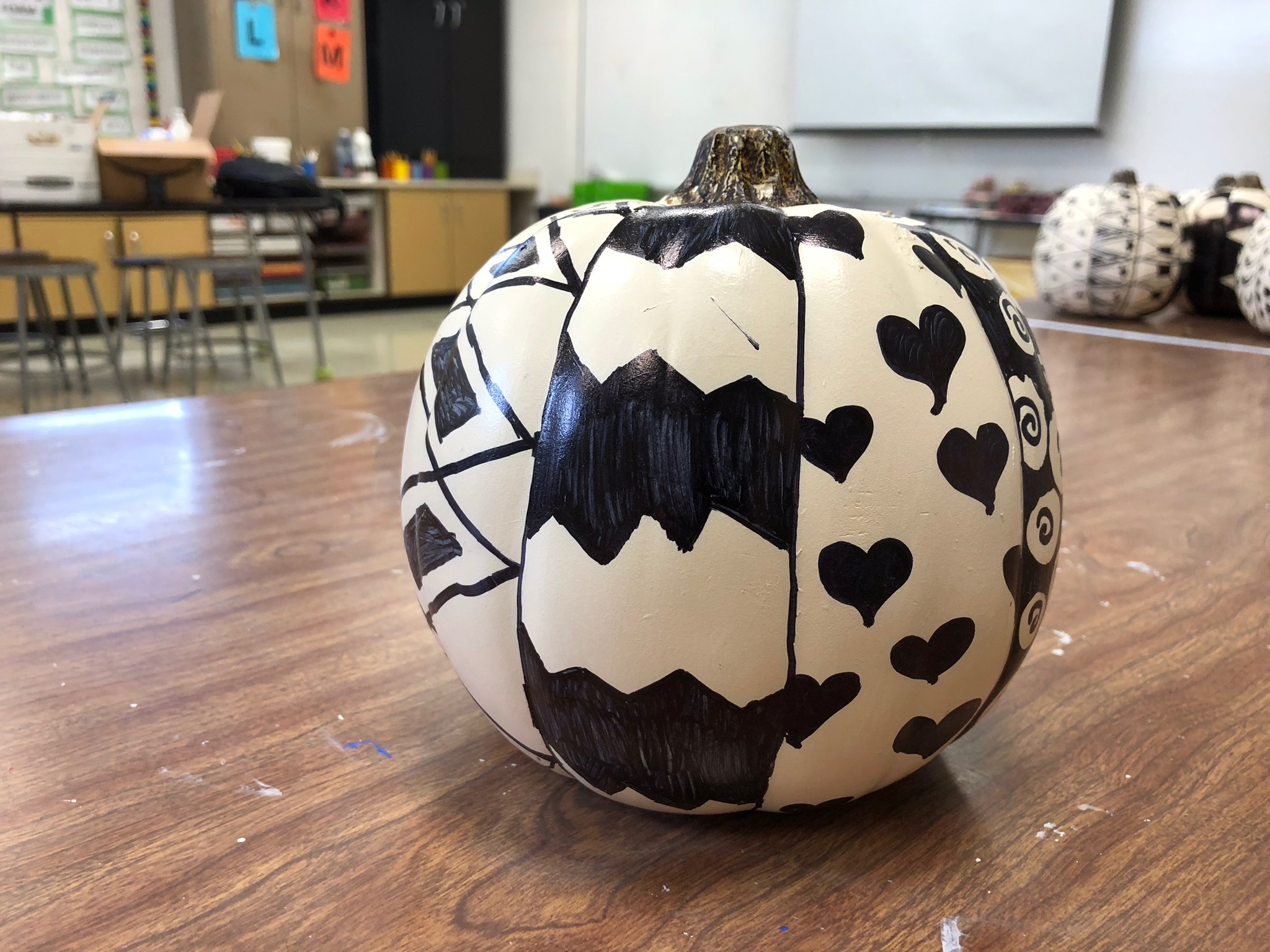
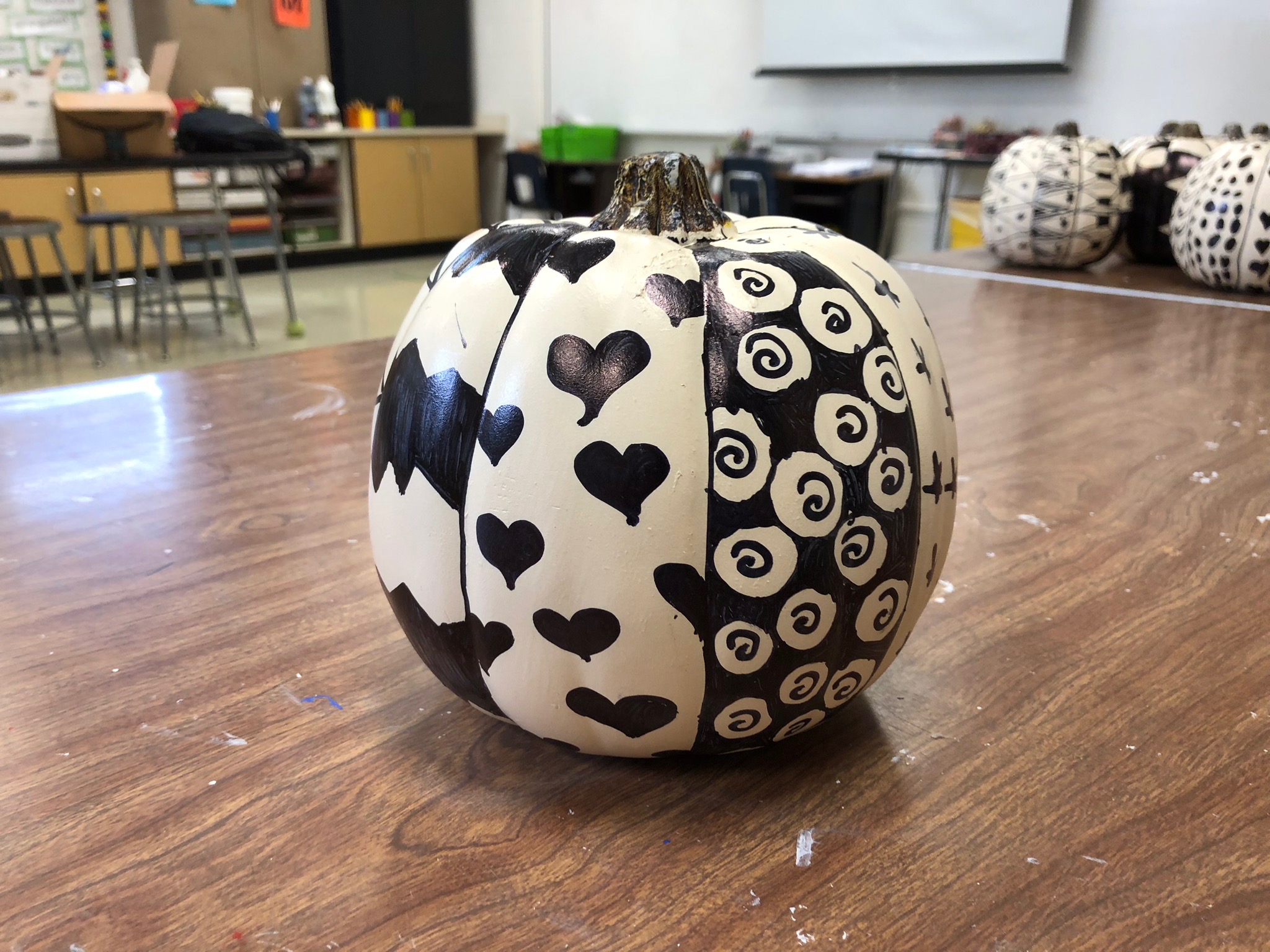
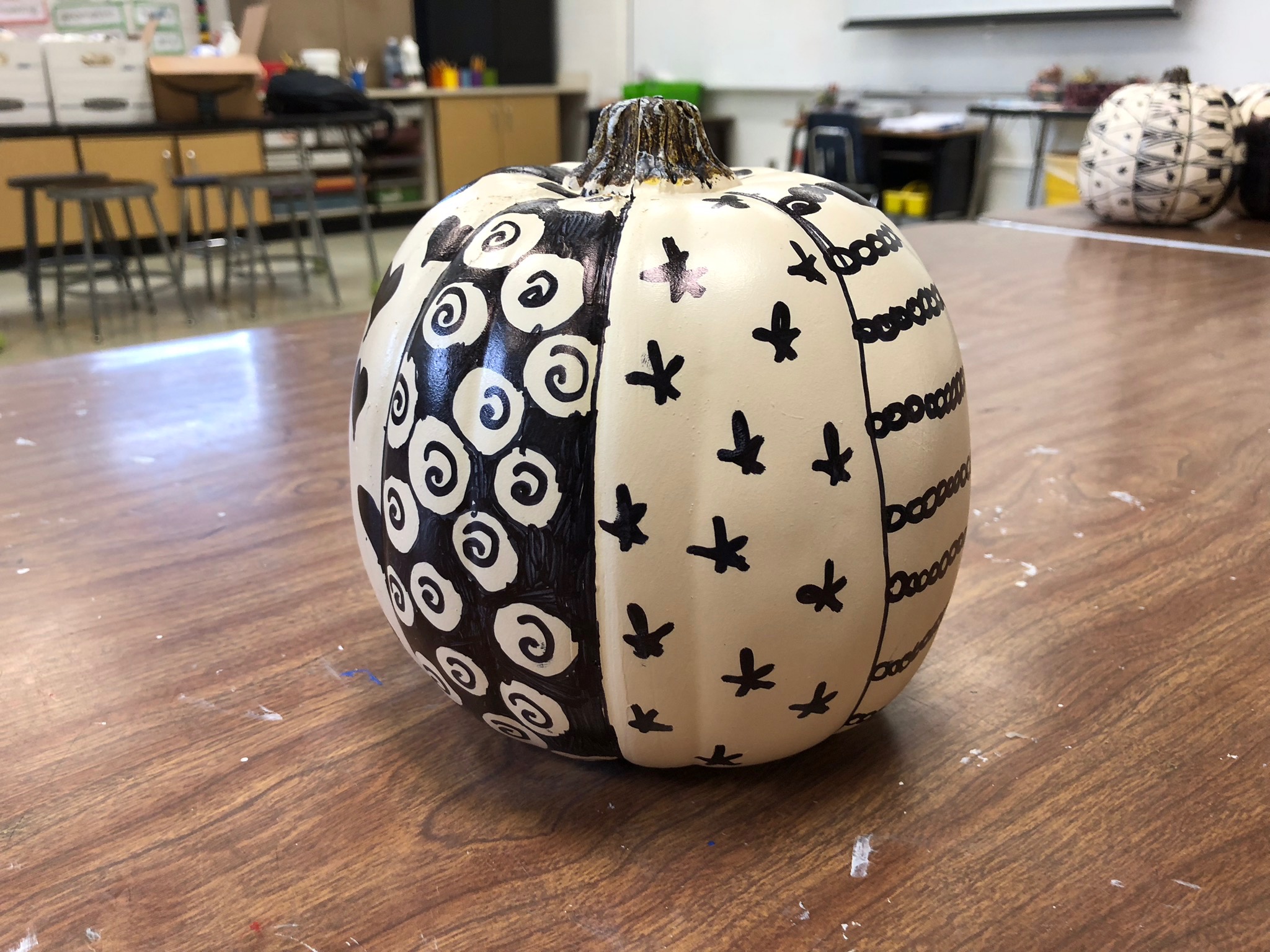
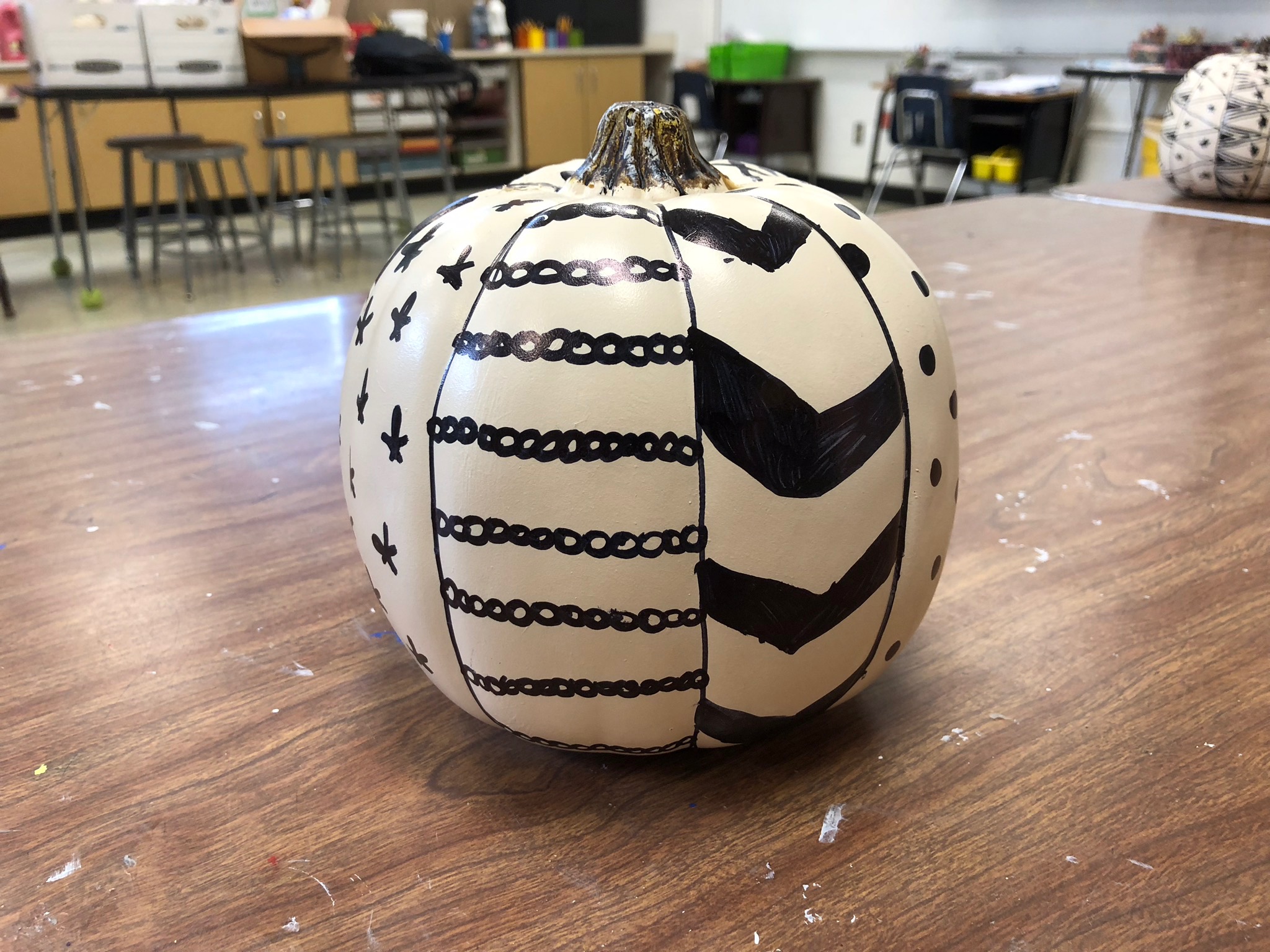
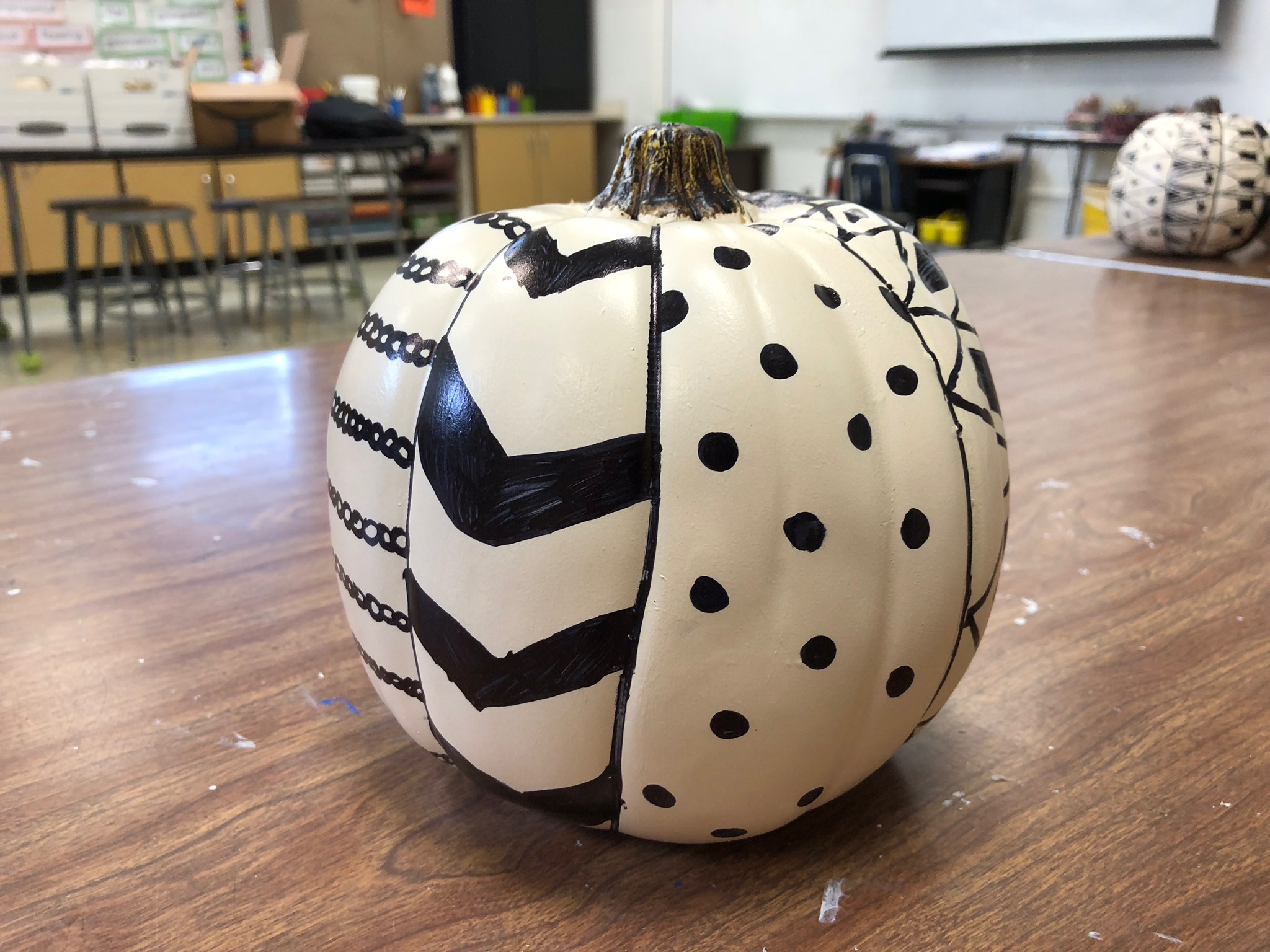
I also did pumpkins with second and third grade this year, and we focused our lesson on contrast (using a quick video as an anchor/talking point). They painted their pumpkin with acrylic paint in a color of choice (ROYGBV). We were short on time to finish these before Fall Festival, so I talked about keeping it to simple patterns and streamlined choices to adding black or white paint. Which will add most contrast to you pumpkin's color: black or white? There are a lot of great resources for making 3D pumpkins, i.e. ceramics or paper mache. If you are in a pinch, you can take Dollar Tree foam pumpkins, and the kids can prime them with acrylic gesso, or you can work with ready-made craft pumpkins from Michaels (as seen in these drip pumpkin and mosaic pumpkin projects) if there's room in your budget!
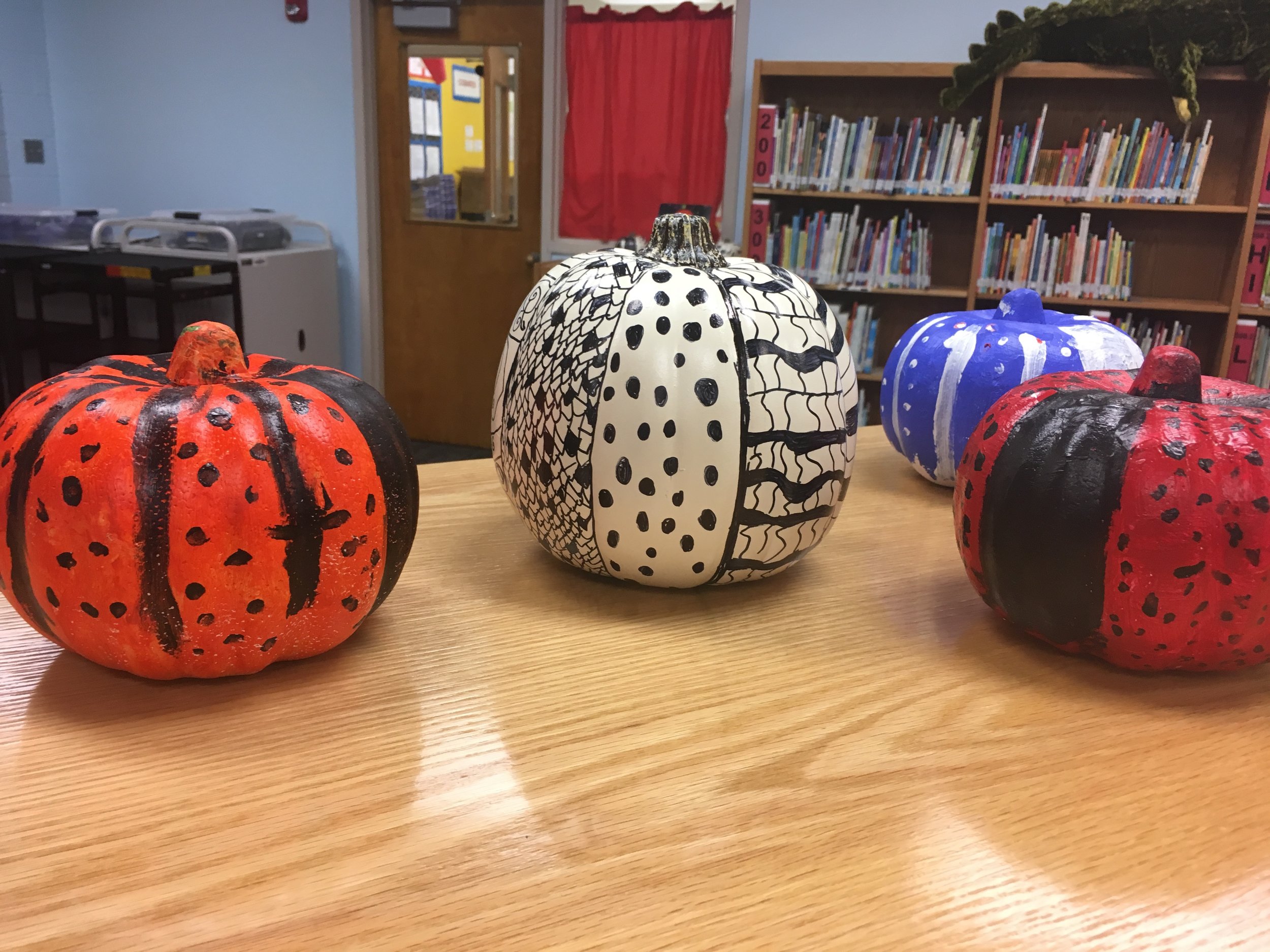
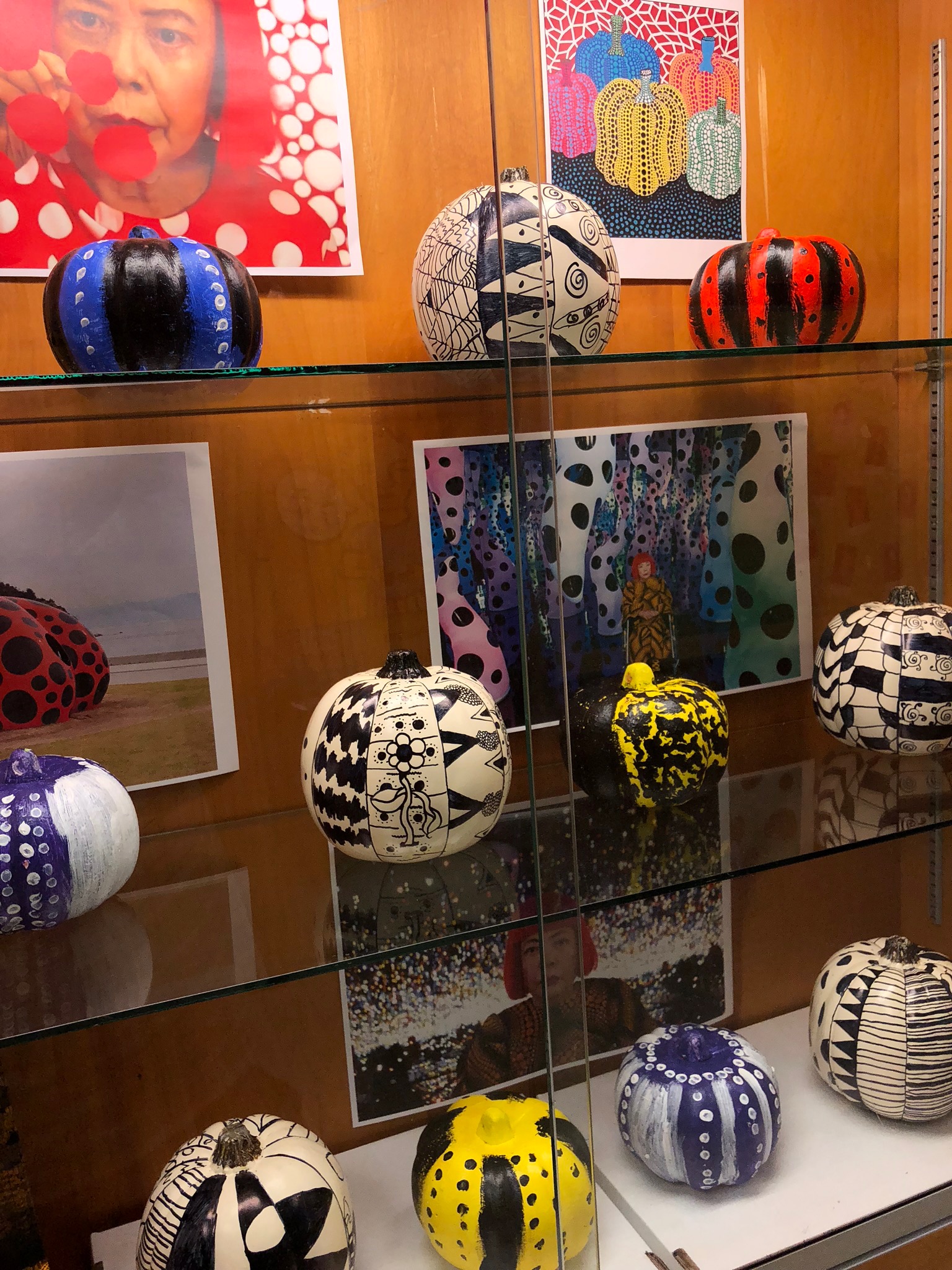
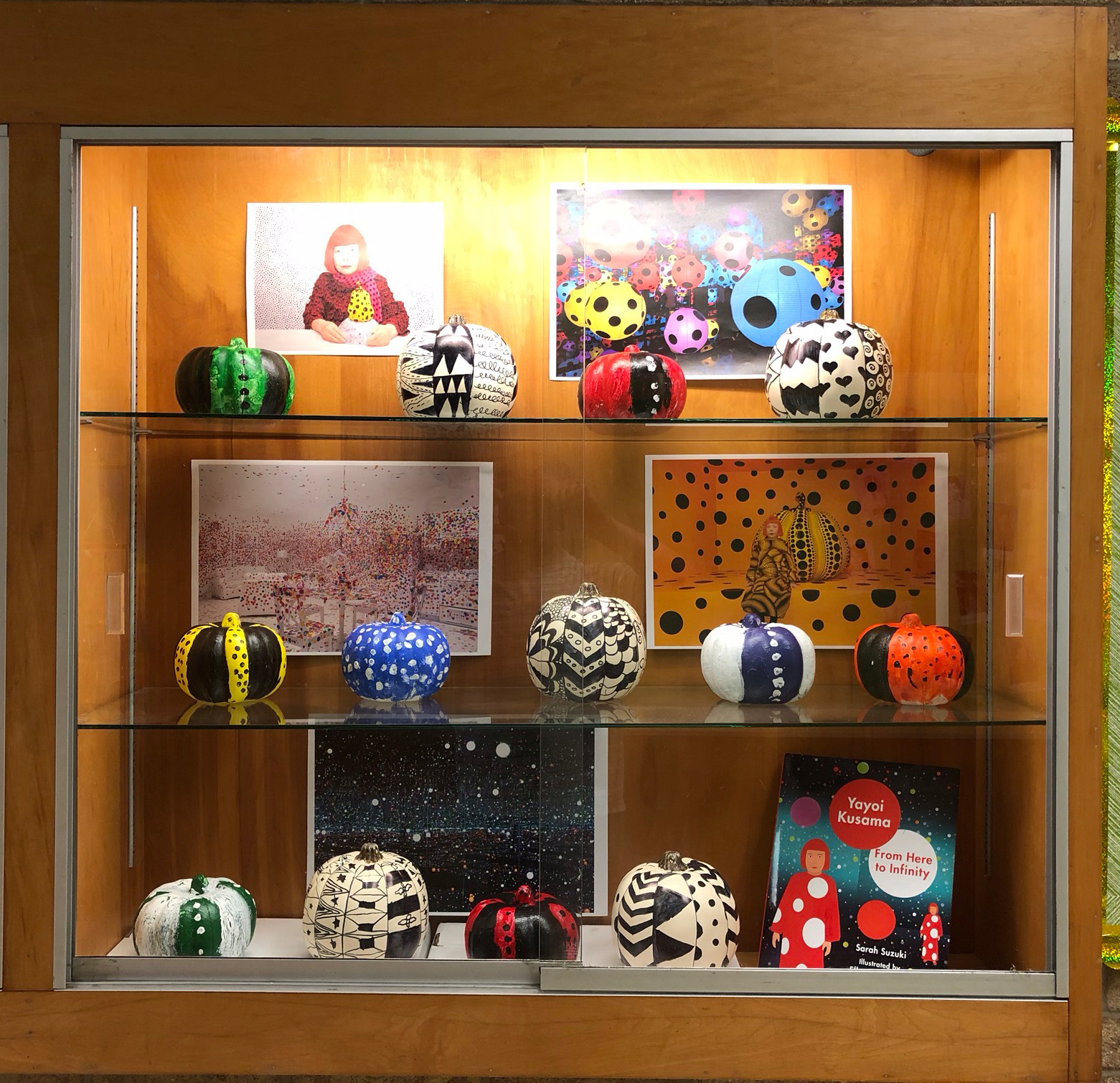
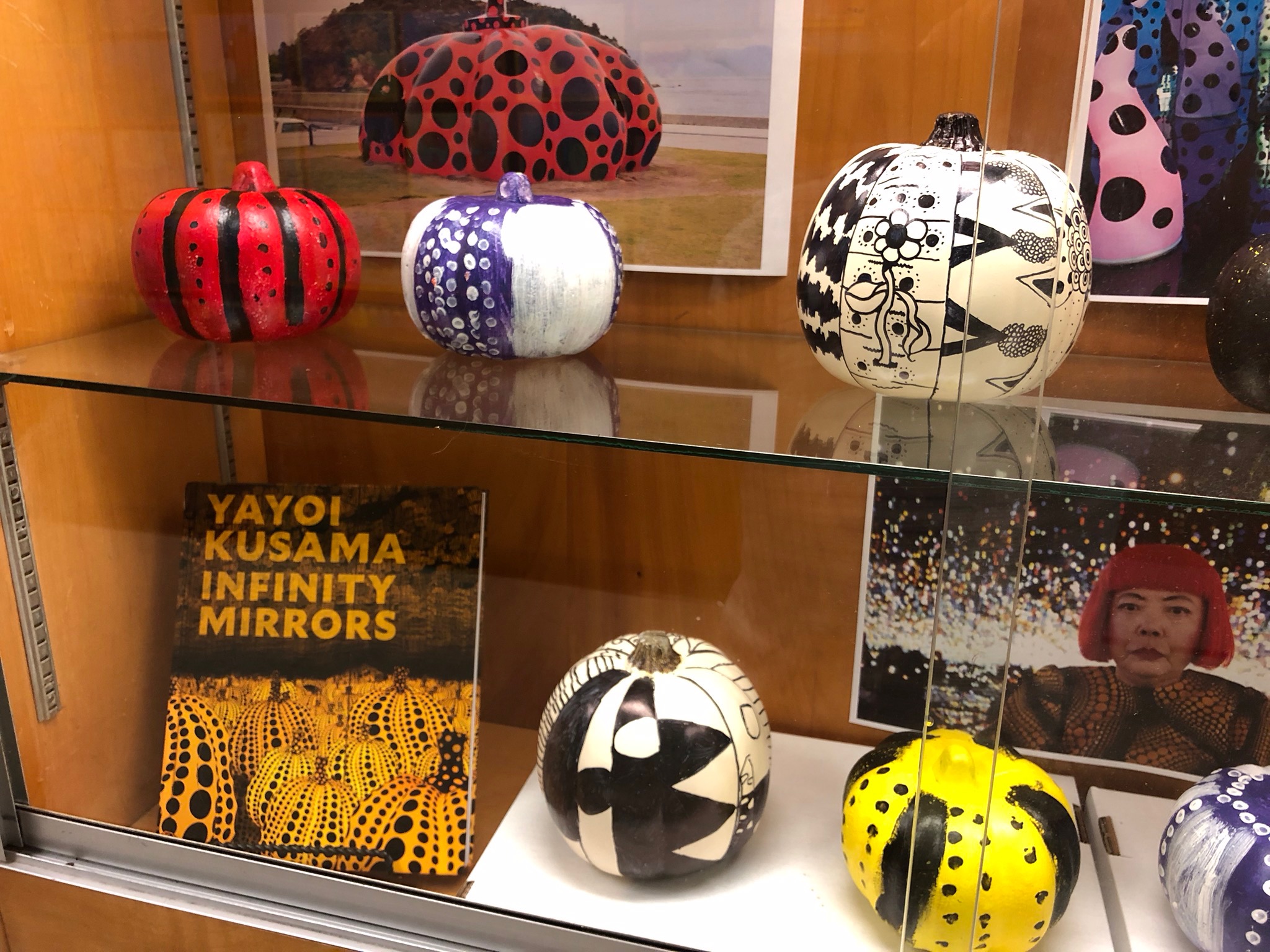
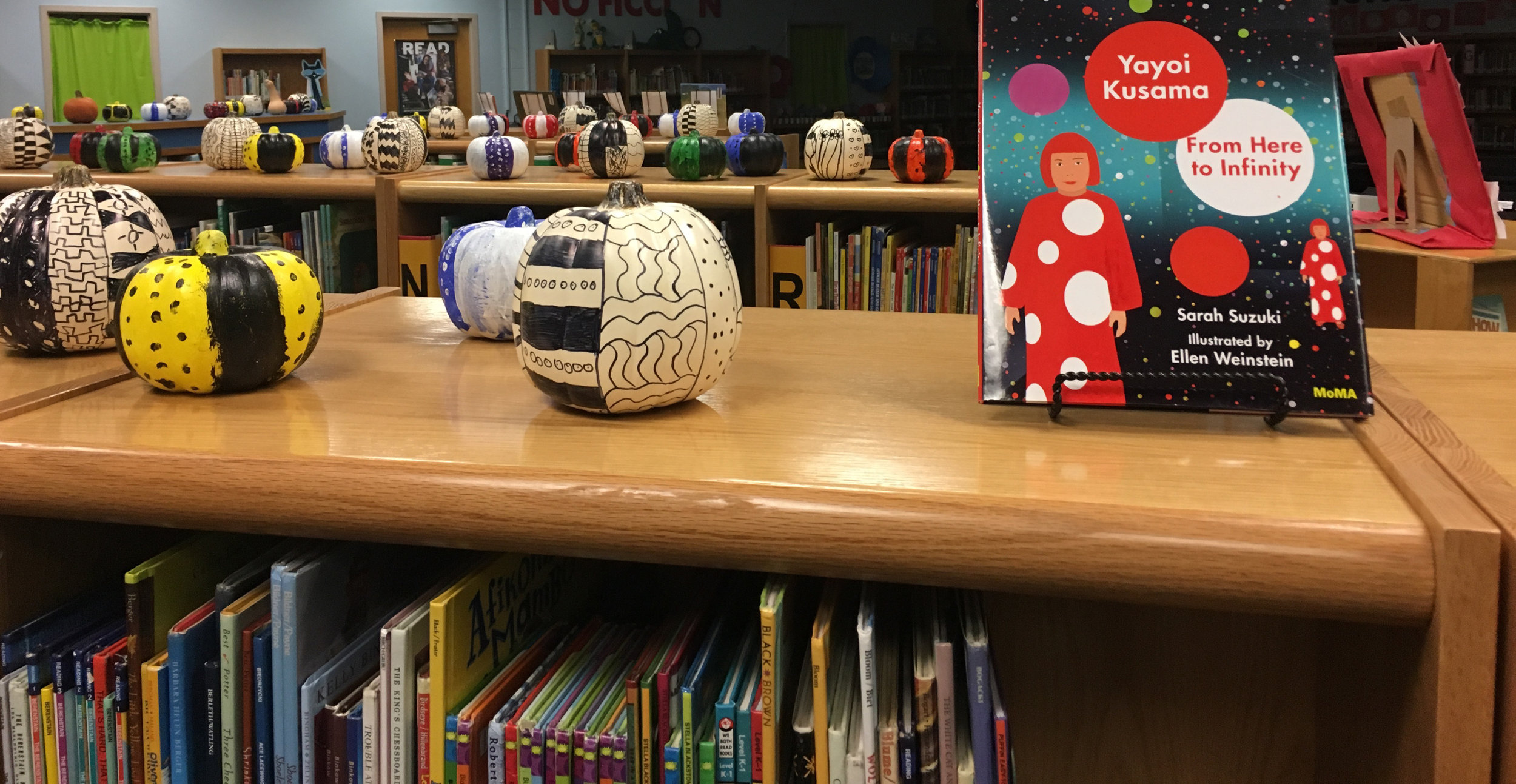
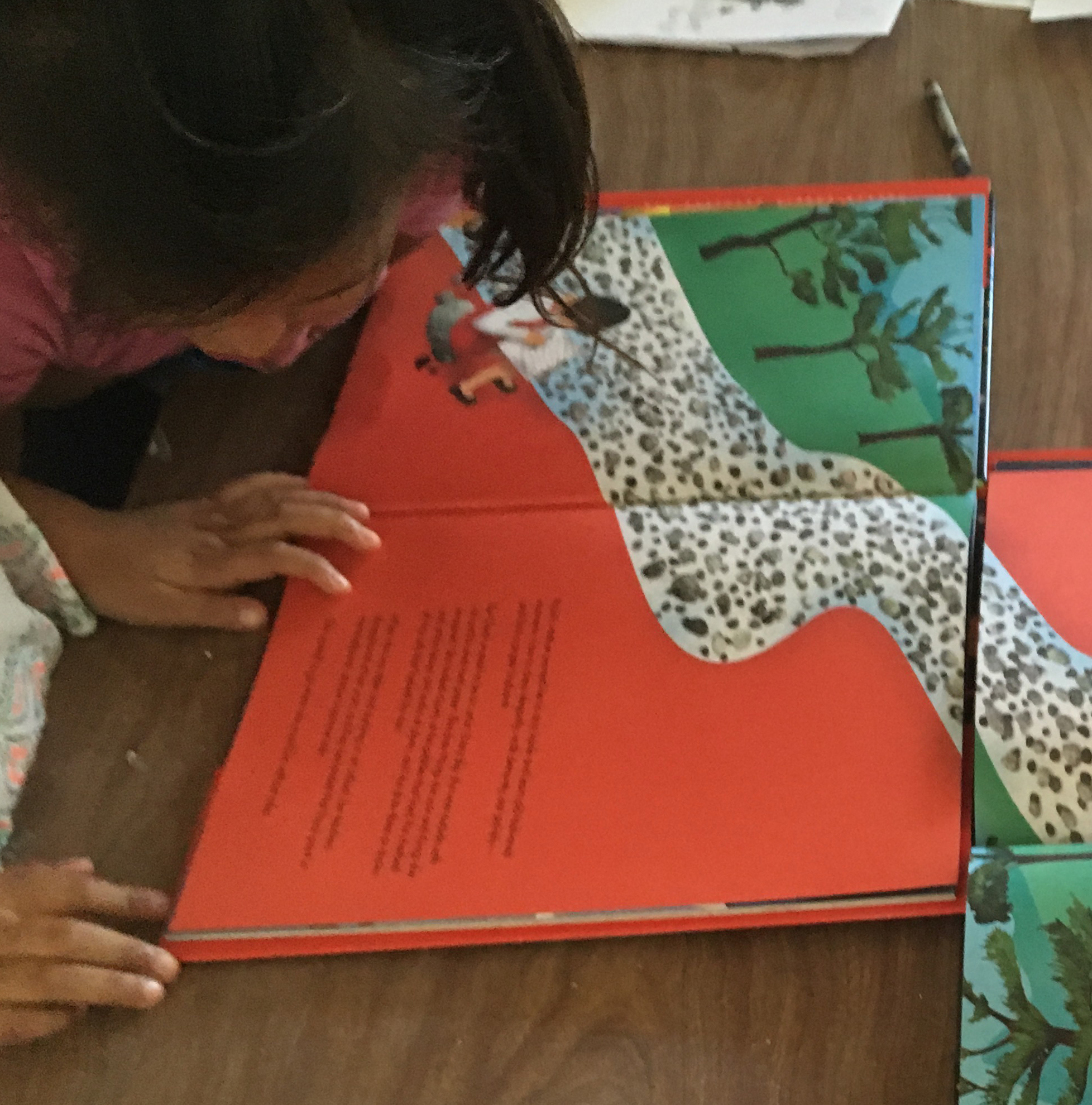
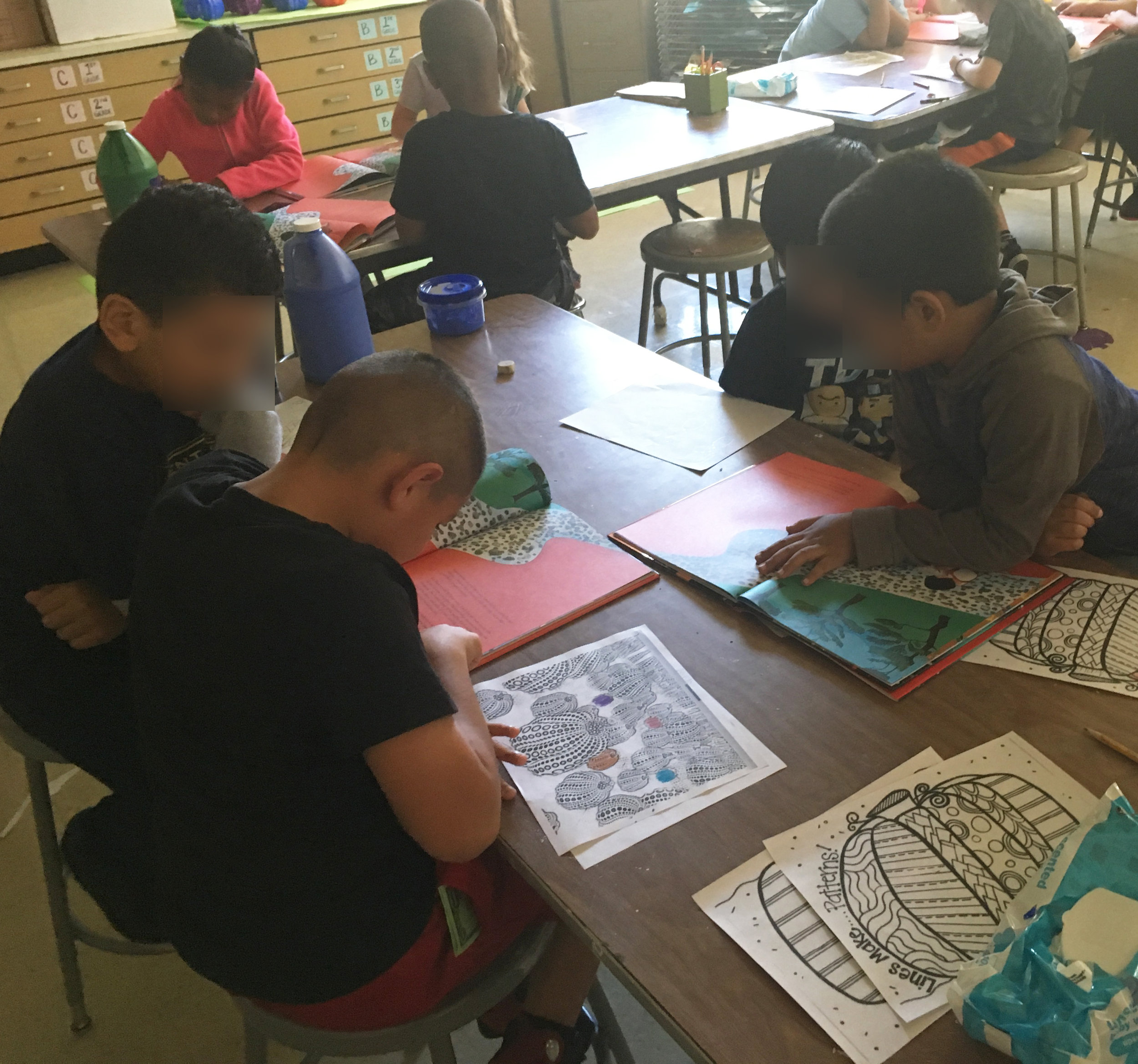
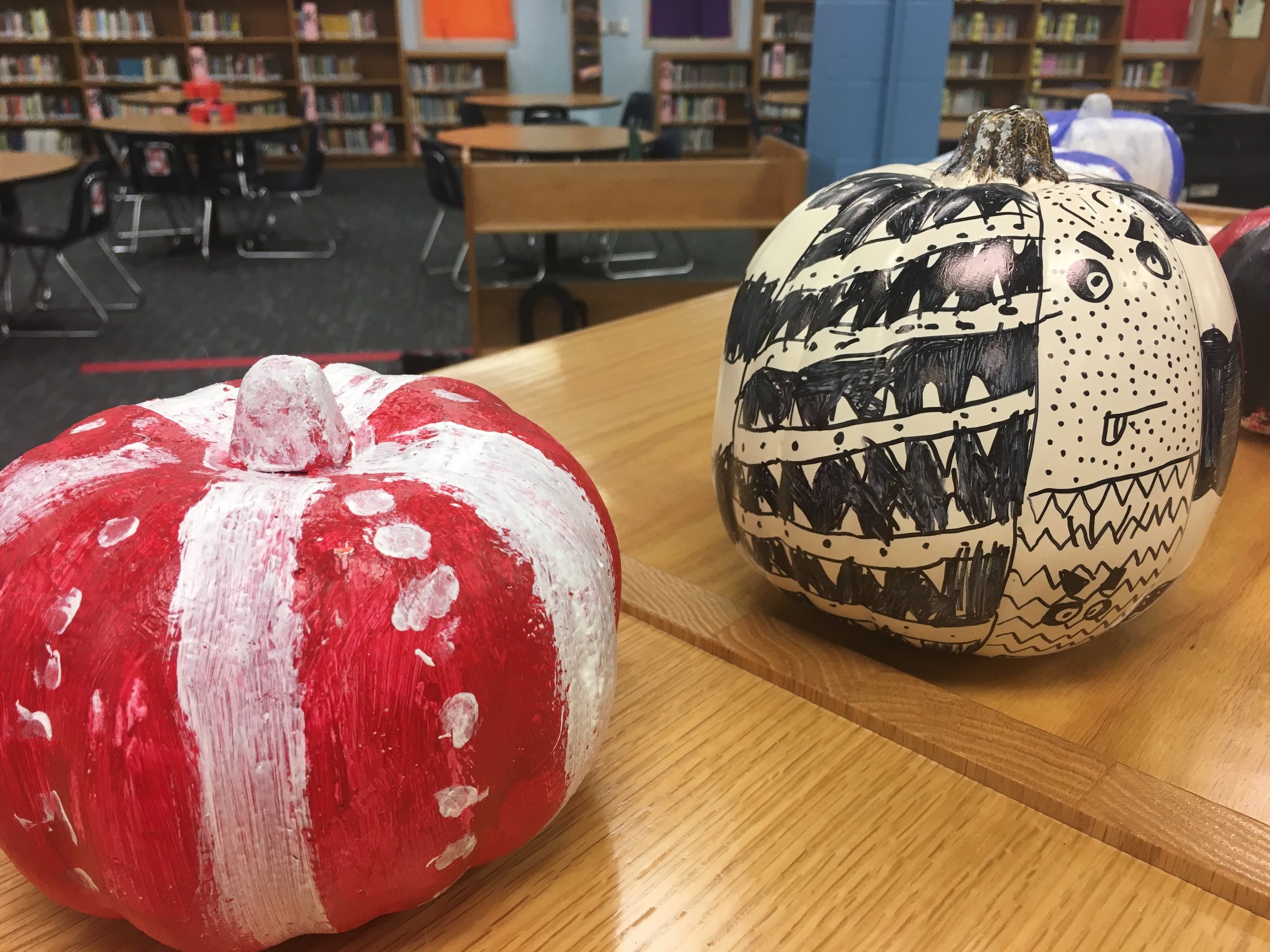
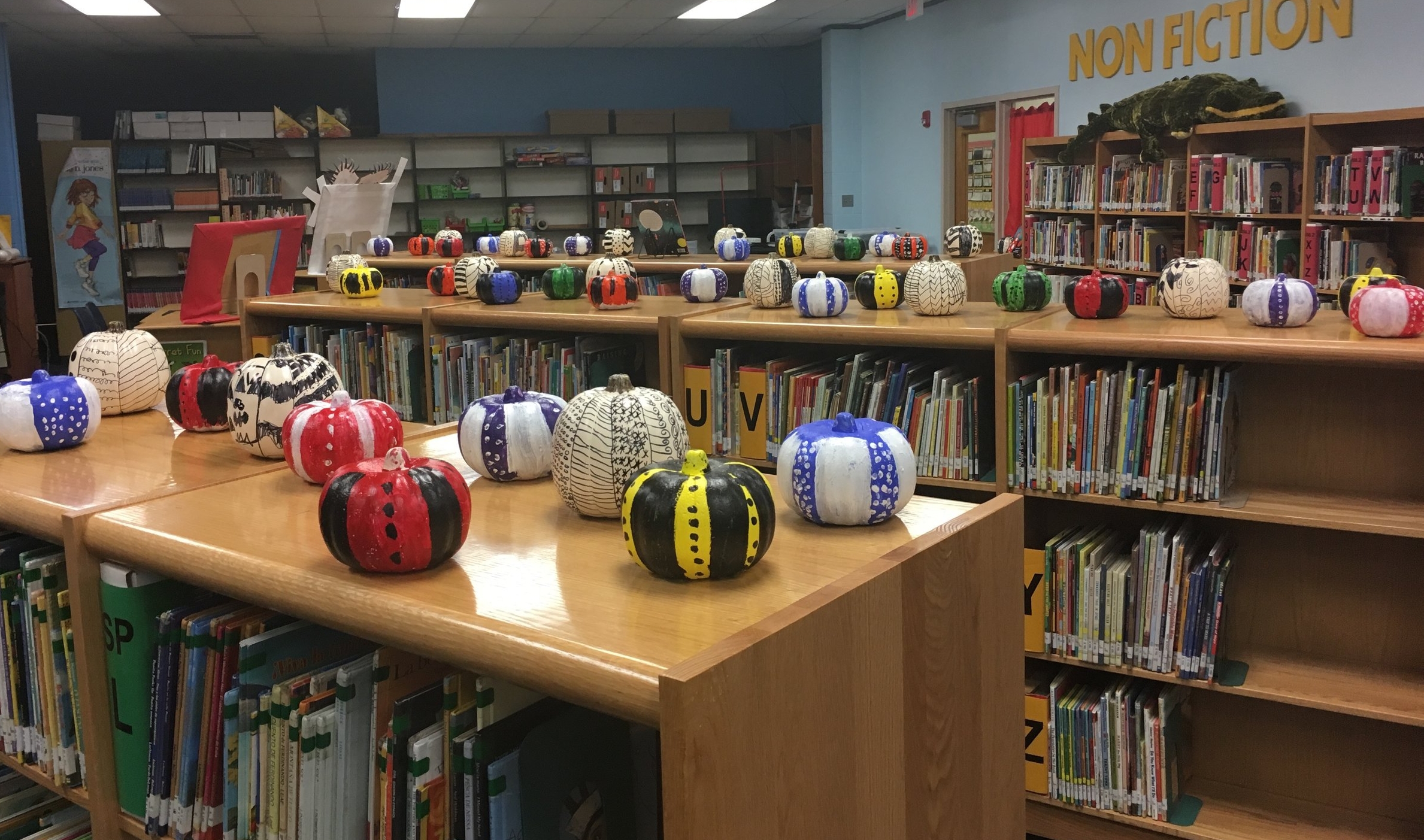


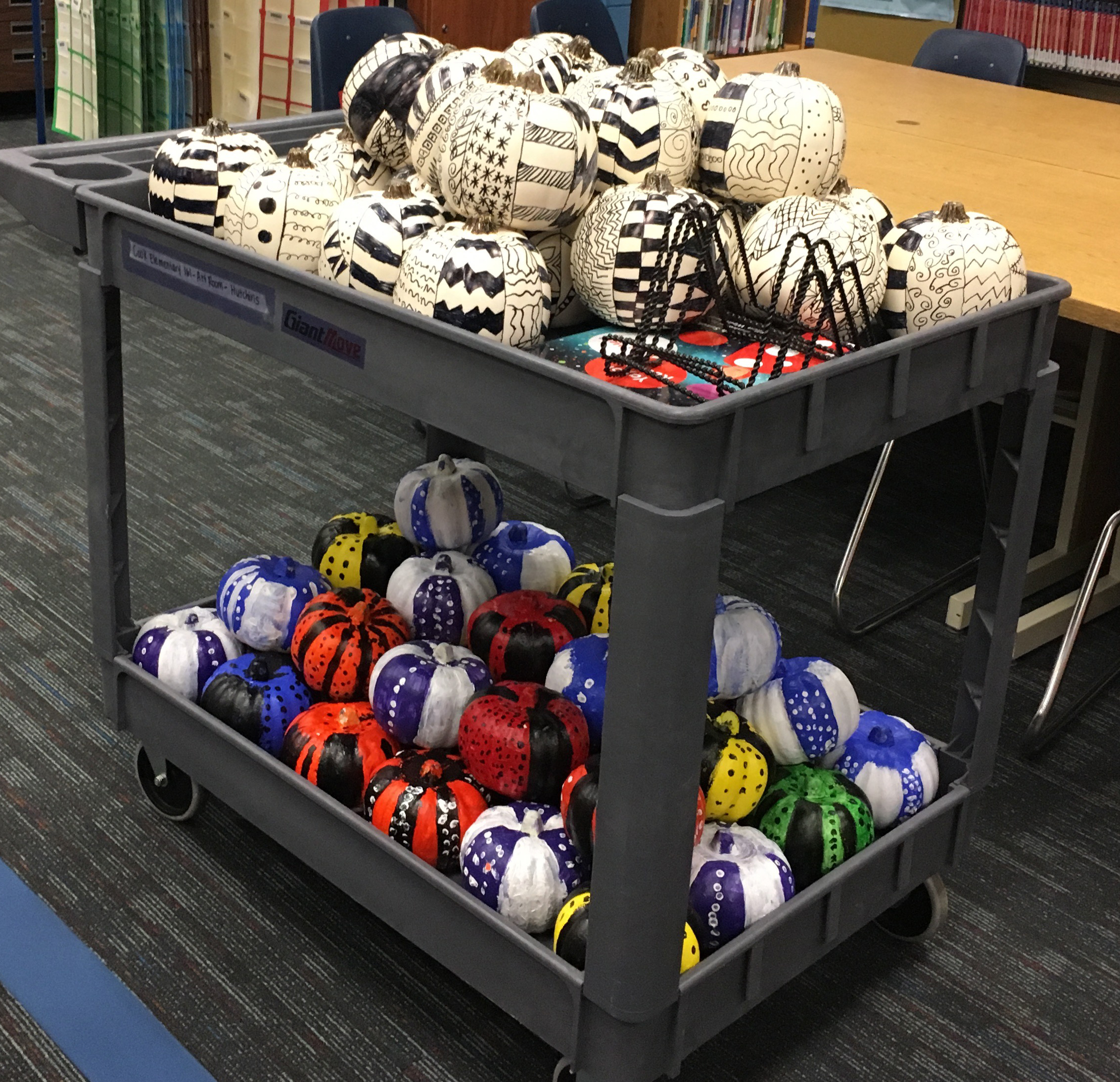
Reading About Kusama / Artist Biographies in the Elementary Classroom
At the elementary level, my favorite way to present information about an artist is to have my students read quotes directly from the artist. I find that primary sources encourage my students to reach individualized opinions about the art. Kusama's reading of "On Pumpkins" was a fantastic tool that connected to my haiku unit, for example.
Every now and then, I'm interested in presenting my students with more context, and I may give them bits of information or use some sources that I trust. In my opinion, Sarah J. Suzuki's "Yayoi Kusama: From Here to Infinity" was a great choice for reading about Kusama's life. As a children's book, it does a great job of presenting information about Kusama's life alongside beautiful illustrations, and in a story-like manner.
I can't help but to bring up a video about Yayoi Kusama that went viral recently, presenting the artist in the context of mental illness. I don't believe that mental illness should be a taboo topic, and of course using art as therapy is a wonderful and positive thing. Yet, this video doesn't sit well with me because it cast her career so heavily in the light of "mentally ill artist." I've read that Kusama is unashamed of her obsessions and neuroses, and not hesitant to connect her artwork to her mental illness. Still, she has had a lucrative career as a professional artist and designer for decades, and it seems to me that her mental illness is a part of a more nuanced biography. To this end, I was interested to read how the Hirshorn Museum's recent retrospective more sparingly mentioned mental illness in their overall narrative of the artist and her work, "inviting us to experience Kusama’s evolving output through more personal interaction, unguided by psychoanalysis."
